
















































Our exceptional line of stand-up bags make it more convenient to prepare desserts and beverages with premium Ghirardelli Chocolate.

CONVENIENT Smaller bags are easy to pour and store.
ACCESSIBLE Flexible offerings let you mix and match different chocolate varieties.
VERSATILE Couverture chocolate formats are perfect for flavoring, coating, melting, and glazing. Non-couverture chips hold up well when baked.
Explore the new line and request your samples today.*


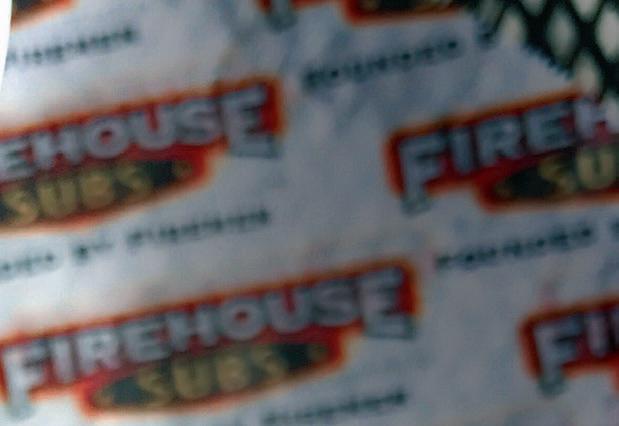


3 Smart Strategies for Driving Incremental Sales with Co ee
Boost check averages without making operations more complex.
SPONSORED BY SEB PROFESSIONAL
57
Beat some of the most troublesome o -premises dining concerns. SPONSORED BY GENPAK

66

Why Houston’s Hot Chicken Does Things Differently A concept with a unique spin on hot chicken is on the franchising fast track. SPONSORED BY HOUSTON’S HOT CHICKEN
58
Abbott’s Frozen Custard
Is Heating Up The 120-year-old brand recently signed a franchise agreement for more than 100 new units. SPONSORED BY ABBOTT’S FROZEN CUSTARD
60
‘Live the Jump Life’ with Altitude Trampoline Park
Franchisees with restaurant industry experience could be the perfect fit for this growing franchise. SPONSORED BY ALTITUDE TRAMPOLINE PARK
62
EDITORIAL DIRECTOR, FOOD NEWS MEDIA: Danny Klein danny@qsrmagazine.com
MANAGING EDITOR, FOOD NEWS MEDIA: Nicole Duncan nicole@qsrmagazine.com
DIRECTOR OF CUSTOM CONTENT: Peggy Carouthers peggy@qsrmagazine.com
CUSTOM CONTENT ASSOCIATE EDITOR: Charlie Pogacar charlie@qsrmagazine.com
CUSTOM CONTENT ASSOCIATE EDITOR: Kara Phelps kara@qsrmagazine.com
CONTENT EDITOR: Ben Coley ben@qsrmagazine.com
ART & PRODUCTION
ART DIRECTOR: Tory Bartelt tory@qsrmagazine.com
ONLINE ART DIRECTOR: Kathryn “Rosie” Rosenbrock rosie@qsrmagazine.com
GRAPHIC DESIGNER: Erica Naftolowitz erica@qsrmagazine.com
PRODUCTION MANAGER: Mitch Avery mitch@qsrmagazine.com
ADVERTISING 800.662.4834
76 Slim Chickens Has Over 900 Units on the Way—and Counting QSR magazine’s Breakout Brand of 2021, the fan favorite is showing no signs of slowing down. SPONSORED BY SLIM CHICKENS


NATIONAL SALES DIRECTOR // EXTENSION 126 : Eugene Drezner eugene@foodnewsmedia.com






Ride the Bubbakoo’s Burritos
Wave This brand’s top-tier service, innovative customization options, and exceptionally fresh ingredients set it up for massive growth.
SPONSORED BY BUBBAKOO’S BURRITOS
64
Power in Numbers Focus Brands leverages its size to reap benefits for franchisees. SPONSORED BY FOCUS BRANDS
68
The Human Bean Is People First The coffee franchise is laser-focused on growing its values alongside its brand. SPONSORED BY THE HUMAN BEAN
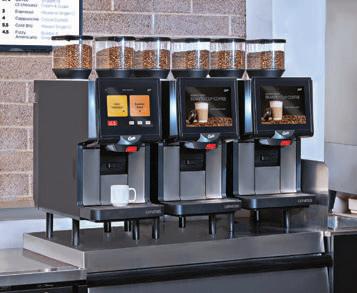
70
Now Is the Perfect Time to Grow with Mici Award-winning Italian brand provides a unique offering in the $47 billion pizza segment.

SPONSORED BY MICI ITALIAN
72
Roy Rogers Restaurants Offers Timeless Value This chain is ready to share its one-of-a-kind broad appeal across multiple dayparts and generations. SPONSORED BY ROY ROGERS

74
Russo’s New York Pizzeria Brings Back Old School with Flair This authentic, ingredient-driven Italian brand is poised for growth. SPONSORED BY RUSSO’S NEW YORK PIZZERIA
78
Achieve the American Dream with the Classic American Brand Steak ‘n Shake’s undeniable history and ongoing evolution bring a new modern twist to the brand customers know and love. SPONSORED BY STEAK ‘N SHAKE
80
Subway Rolls Out Guest-Centric Restaurant Redesign Iconic brand offers franchisee remodel support. SPONSORED BY SUBWAY
84
The Toasted Yolk Offers Unique Blend of Profit, Work-Life Balance Nobody loves the brunch brand more than its franchisees SPONSORED BY THE TOASTED YOLK
86 Zunzibar + Zunzi’s: The Brand with a Motto
SPONSORED BY

ZUNZIBAR + ZUNZI’S 58 Abbott’s Frozen Custard 60 Altitude Trampoline Park 62 Bubbakoo’s Burritos 64 Focus Brands 66 Houston’s Hot Chicken 70 Mici Italian 72 Roy Rogers 74 Russo’s New York Pizzeria 76 Slim Chickens 78 Steak ‘n Shake 80 Subway 86 Zunzibar Zunzi’s
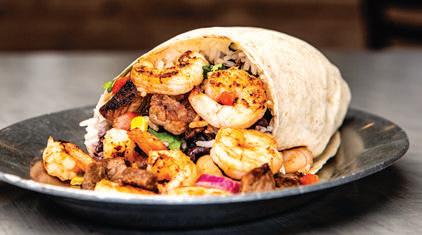
NATIONAL SALES MANAGER // EXTENSION 149 : Edward Richards edward@foodnewsmedia.com

NATIONAL SALES MANAGER // EXTENSION 141 : Amber Dobsovic amber@foodnewsmedia.com


NATIONAL SALES MANAGER // EXTENSION 148 : John Krueger john@foodnewsmedia.com
SALES SUPPORT // EXTENSION 124 : Tracy Doubts tracy@foodnewsmedia.com
CIRCULATION
WWW.QSRMAGAZINE.COM/SUBSCRIBE
CIRCULATION COORDINATOR: N. Weber circasst@qsrmagazine.com
ADMINISTRATION
GROUP PUBLISHER, FOOD NEWS MEDIA: Greg Sanders greg@foodnewsmedia.com
PRESIDENT: Webb C. Howell
MANAGER, IT SERVICES: Jason Purdy
ACCOUNTING ASSOCIATE: Carole Ogan
ADMINISTRATION
800.662.4834, www.qsrmagazine.com/subscribe
QSR is provided without charge upon request to individuals residing in the U.S. meeting subscription criteria as set forth by the publisher.
REPRINTS
THE YGS GROUP
TOLL FREE: 800.290.5460
FAX: 717.825.2150
E-MAIL: qsrmagazine@theygsgroup.com www.qsrmagazine.com/reprints
Sponsored content in this magazine is provided by the represented company for a fee. Such content is written to be informational and non-promotional. Comments welcomed. Direct to sponsoredcontent@foodnewsmedia.com
FOOD NEWS MEDIA PROPERTIES
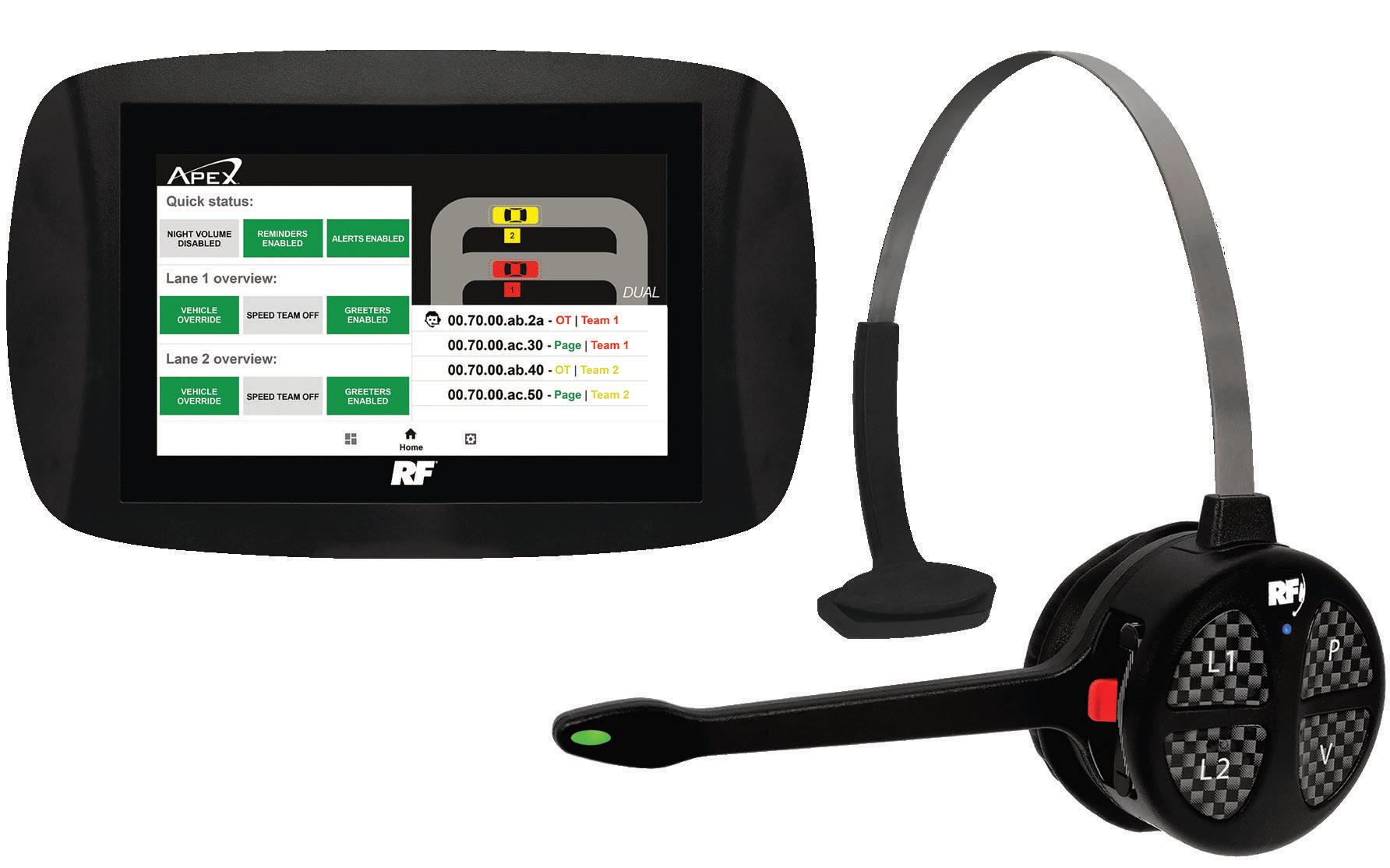

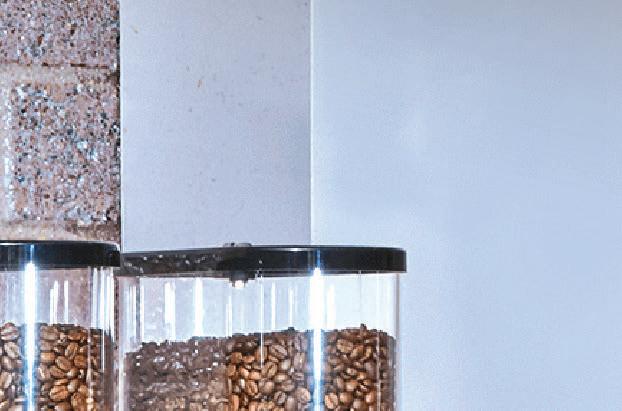
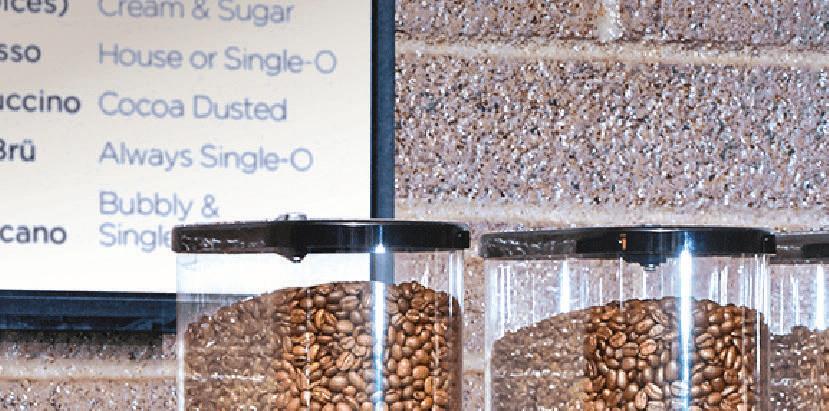
restaurant leaders can capitalize on co ee’s popularity to drive incremental sales.
First, Bowman says, operators should make their co ee programs stand out.

“Recently, the industry has seen subscription-based co ee programs take o ,” Bowman says. “This has been a big win for the chains that have adopted these programs. But for both these chains and smaller brands looking to compete with subscriptions, LTOs allow restaurants to create buzz around their co ee programs, while driving tra c from co ee drinkers who want to try something new. Often, LTOs also allow restaurants to charge a premium, meaning brands can drive even higher margins.”
Second, Amy Brown, marketing manager of commercial foodservice at SEB Professional, recommends restaurants o er cold co ee beverages. Mintel Foodservice’s 2021 Co ee and Tea report notes that Gen Z diners are core consumers of cold co ee, and nearly half of Gen Z consumers purchased iced coffee away from home.

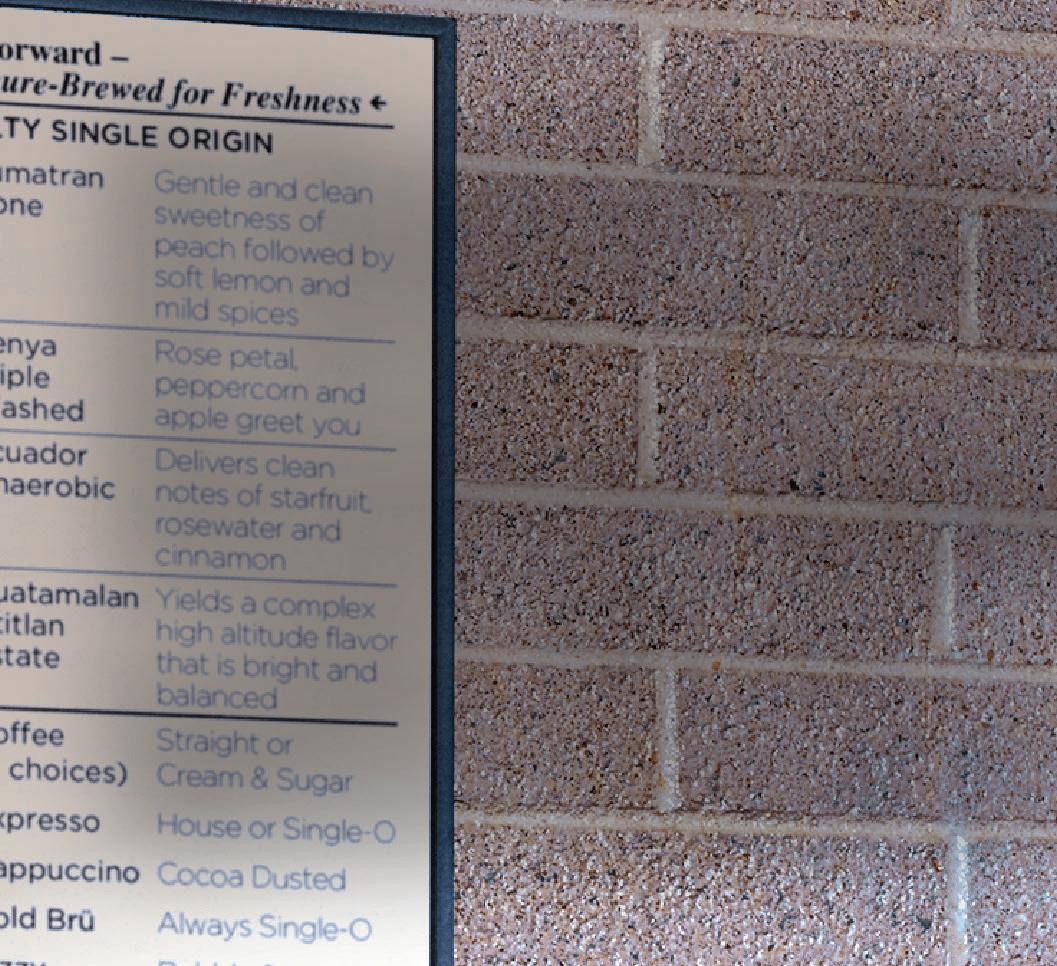



“Cold co ee drinks were trending before COVID, but cold co ee drink sales will only grow as Gen Z diners gain more spending power and consumers shift from buying regular hot brewed co ee to beverages that are harder to create at home,” Brown says.
Bowman agrees and doesn’t see cold coffee sales slowing anytime soon. “Cold brew co ee and iced co ee continue to see doubledigit growth each year,” he says. “Cold co ees can also command a higher price point or an upcharge when paired with a combo meal that might typically include a hot co ee.”
hough restaurant tra c has improved since the onset of the COVID-19 pandemic, an NPD Group study reports restaurant tra c is still down 4 percent compared to 2019 levels. While that number is recovering, a decrease of even just a few percentage points can still create financial strain for restaurants. As a result, brands must focus on making each visit count by increasing check size and driving incremental sales. One of the simplest and most e ective ways for restaurants to do so is serving a strong beverage menu.
“Beverage programs have always helped restaurants drive incremental revenue,” says Chad Bowman, vice president of commercial foodservice sales at SEB Professional. “The
margins for beverages are good for operators, and adding a co ee or iced co ee to the menu can help restaurants realize large sales increases.”
Co ee is a particularly strong driver for restaurants. Not only is co ee one of the highest margin items on a restaurant menu, but it also has a strong built-in consumer base. In its 2022 report, “National Co ee Drinking Trends,” The National Co ee Association noted 66 percent of Americans drank co ee in the past day, and Americans choose co ee more often than other beverages, including tap water. By using a few smart strategies,
Of course, no co ee program is complete— nor can it compete with other restaurant’s offerings or co ees prepared at home—without a high-quality product.
“At SEB Professional, we’ve seen firsthand how implementing a full-scale co ee program can not only boost incremental sales, but an operator’s core foodservice o erings,” Brown says. “With all three of our brands—WMF, Schaerer, and Curtis—we have seen that operators o ering the freshest, high-quality co ees have the ability to quickly become a go-to beverage destination over their competitors. And with the right equipment from SEB Professional in place, operators can o er top-quality and consistency, no matter what their current labor situation looks like.” ◗

check averages without making operations more complex.
/BY PEGGY CAROUTHERS
In today's environment, foodservice operators are facing ongoing challenges like inflation, labor shortages, and supply chain issues - just to name a few. According to Cleveland Research Company in their recent “State of the Foodservice Industry" webinar, research shows that despite inflation, consumer demand for restaurants looks to remain strong and the outlook for dining out is optimistic. However, with growing competition to win consumer loyalty, how do you ensure you're standing out?

By providing a full-scale, top-quality coffee and tea program, you are laying the foundation to greatly enhance your food offerings! By upgrading your coffee and tea programs, your establishment can become a destination for hot and iced coffee and tea all day long!
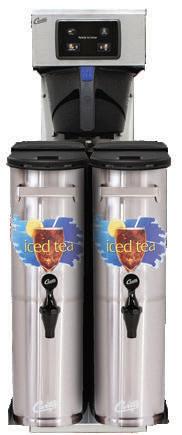



I’m one of those millennials people call an “old soul.” Is that a badge to wear with honor? Or do I belong on one of those Progressive ads where I can’t pronounce quinoa and I’m more worried about the parking lot than the football game? But I will say this: In my time covering restaurants, early on, millennials were perhaps the A1 concern of every marketer in America. And it was a dicey slope. In hindsight, I think we can agree chasing “the next big thing” led to a lot of brand drift, especially in casual dining. We think of this today as the “all-things-to-all-people” trap. Or trying to be good at everything and ending up great at nothing. So many brands sought that golden egg only to end up at a place where core guests couldn’t recognize them anymore. And so began a multi-year stretch (again, this is particularly true of casual dining ) where brands recommitted to equities. Put differently, they remembered what got them to the dance in the first place.
Either way, we find ourselves today talking far less about millennials. COVID-19 is one reason why. The other is Gen Z. Generally speaking, this group includes anyone born after 1997. Yet, from the restaurant perspective, what’s critical to note is this is the first digitally native generation. Even myself, a grizzled millennial, didn’t discover Facebook until I was in college. Twitter wasn’t on my newspaper’s radar until about three years into my professional career. Gen Z consumers are often described as social and environmental idealists, with mobile phones as ubiquitous as water, and, notably, with estimated buying power of some $150 billion. Research company Knit, which empowers Gen Z to share
thoughts via video, recently released a restaurant and dining report to dive into preferences. Here were some key points:
Among the most influential decision criteria for Gen Z ( in order ) was: price, deliciousness of the food, convenience of location, quality and freshness of food, and cleanliness of the establishment. Of the surveyed Gen Z consumers, nearly 80 percent recognized price as an impactful criterion.


That instant gratification rumor you hear of Gen Z? Accurate. For the group of consumers who have become accustomed to getting almost anything at their fingertips with the click of a button, nearly 48 percent of respondents cited the speed of ordering and receiving their food as highly important, and another 24 percent marked ease of ordering via digital channels as an important consideration. Now, let’s look at their eating habits. Within the surveyed population of Gen Z consumers, 44 percent identified as healthy or “clean” eaters, while only 20 percent acknowledged they were overeaters. In addition, a sizable portion self-identified with one of the following restrictive dietary habits: low-carb (13.2 percent ), vegetarian (13.2 percent), vegan (5 percent ), and keto (4.3 percent )
The last point I’ll surface goes back. Gen Z demands stronger voices and social stances from restaurant companies. Roughly 15 percent noted the social impact and view of a company is something they factor into their decision when deciding where to eat out. The overall thread here is Gen Z is paying attention. It’s on us to prove we’re listening.
Danny Klein, Editorial Director






Gen Z guests aren’t millennials. But we can learn from past mistakes to meet them where they want to be.


























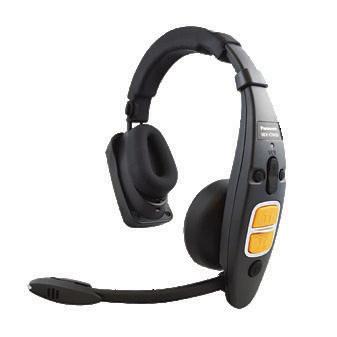
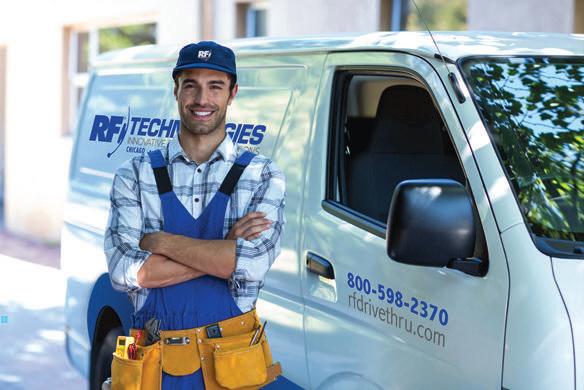


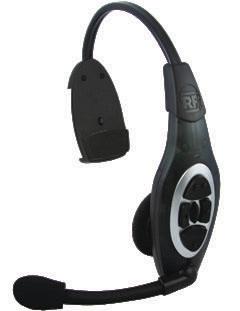

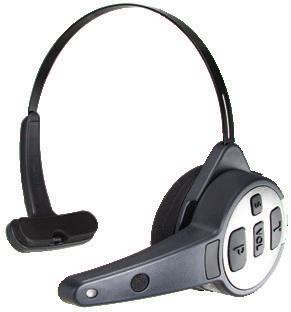






Panera Bread found a creative way to highlight a new product line amid the summer rush.
The fast casual o ered guests a way to get through their summer slump.
—June 21—Panera launched “Charged Up Cups,” which gave customers a way to stay activated during the summer solstice. Also, the cups served as a branded vessel for Panera’s new Charged Lemonades, and, most notably, doubled as a portable phone charger.

The base of the 17-ounce bottle pops off to act as a charging base for somebody’s phone to rest and get some juice. No outlet needed.
Earlier this spring, Panera introduced Charged Lemonades with plant-based caffeine. Fueled by Clean caffeine from Guarana and green coffee extract, Charged Lemonades arrived in three flavor combinations: Strawberry Lemon Mint, Fuji Apple Cranberry, and Mango Yuzu Citrus. The drinks were part of Panera’s recently unveiled Unlimited Sip Club, the first nationwide unlimited beverage subscription for all self-serve beverages, available nationwide for $10.99 per month.
Yet like many arenas in the COVID-19 era, technology has reset the wheel. Namely, can technology bring the segments’ o erings closer together?


Customer arrival platform Bluedot released its first Convenience Experience Report, which explored consumer sentiment and the guest experience at gas stations and C-stores across America. It was based on survey data from more than 1,500 U.S. consumers.
• 61 percent of consumers in the report said they would visit a C-store more often if mobile ordering, drive-thru, and curbside pickup were available.
61%
• Nearly half would walk out of a C-store if one or two people were in line at the register (30 percent for two people and 16 percent if there’s one person in line)


• 54 percent said they’d turn away if they noticed three people waiting to check out.


• One in three would drive away if there was a single car ahead of them at the pump.
The kicker:



59 %



• 59 percent of respondents said they’d consider purchasing a meal from a C-store when stopping for fast food.
Can C-stores steal share?
27 %
25 % 21%
• One in four visit C-stores for lunch. Of that, 29 percent do so for fast food (brands inside the location or proprietary setups) at grab-and-go refrigerated items

made-to-order food.
hot food (like pizza or hot dogs, etc.)
• Also, 51 percent drop in for snacks, 20 percent for grocery items, and 16 percent for alcoholic beverages.
How do customers pick one C-store over another?
56 % 52% 37% 25 % 25 %
Some other points:
• Twenty-five percent of people said they were ordering C-store items from third-party apps If given the choice, however, two out of three preferred to use the C-store’s own app.
25 %
6 IN 10
• Six in 10 were more likely to visit a C-store if its mobile app automatically unlocked the pump and allowed in-app payments.
• Three in four consumers believed gas stations should start including charging stations for EVs, too.
3 IN 4
The market share jostle between quick-service restaurants and C-stores is nothing new.

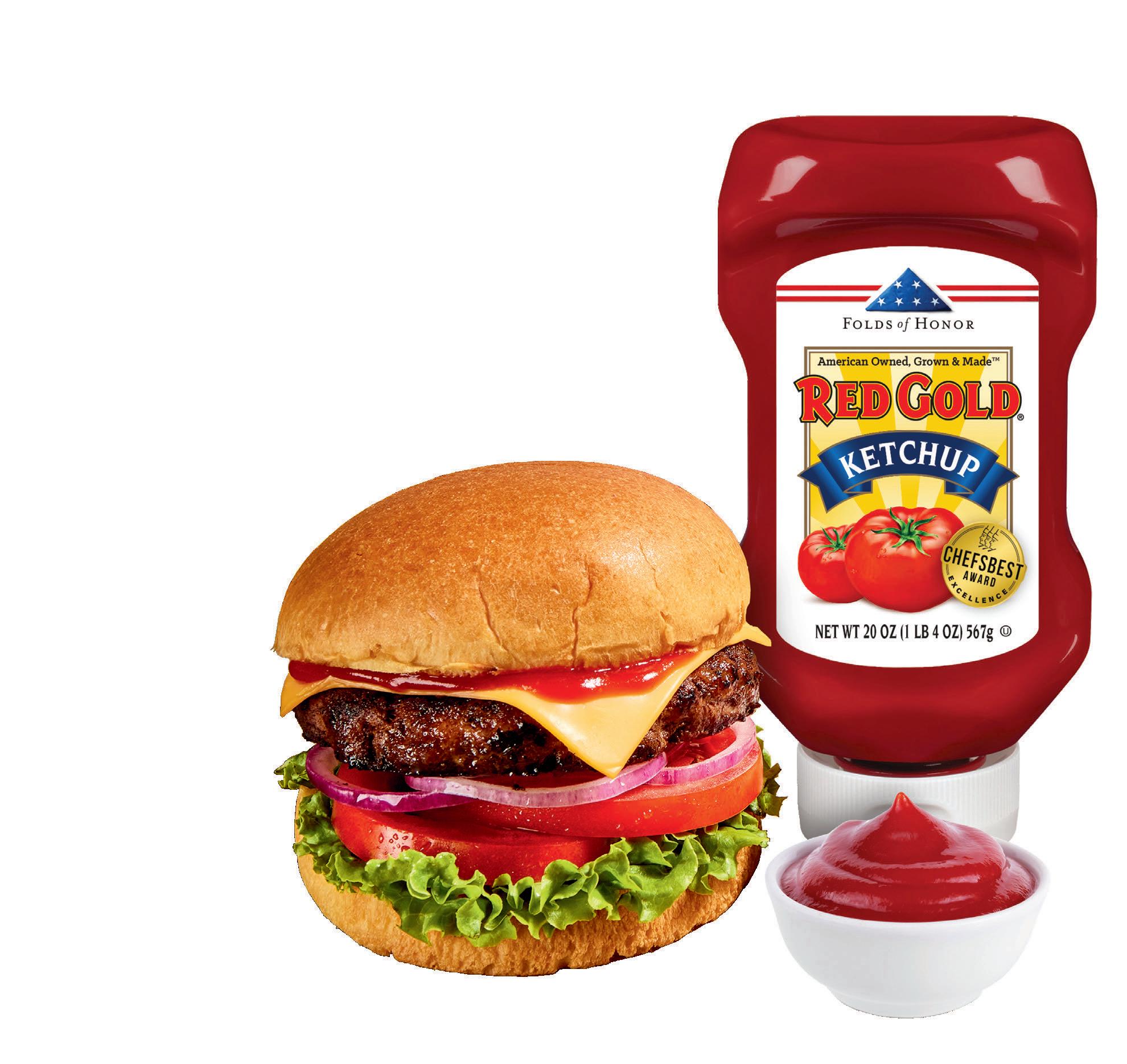
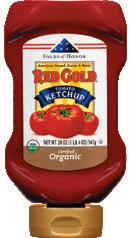





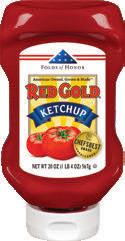


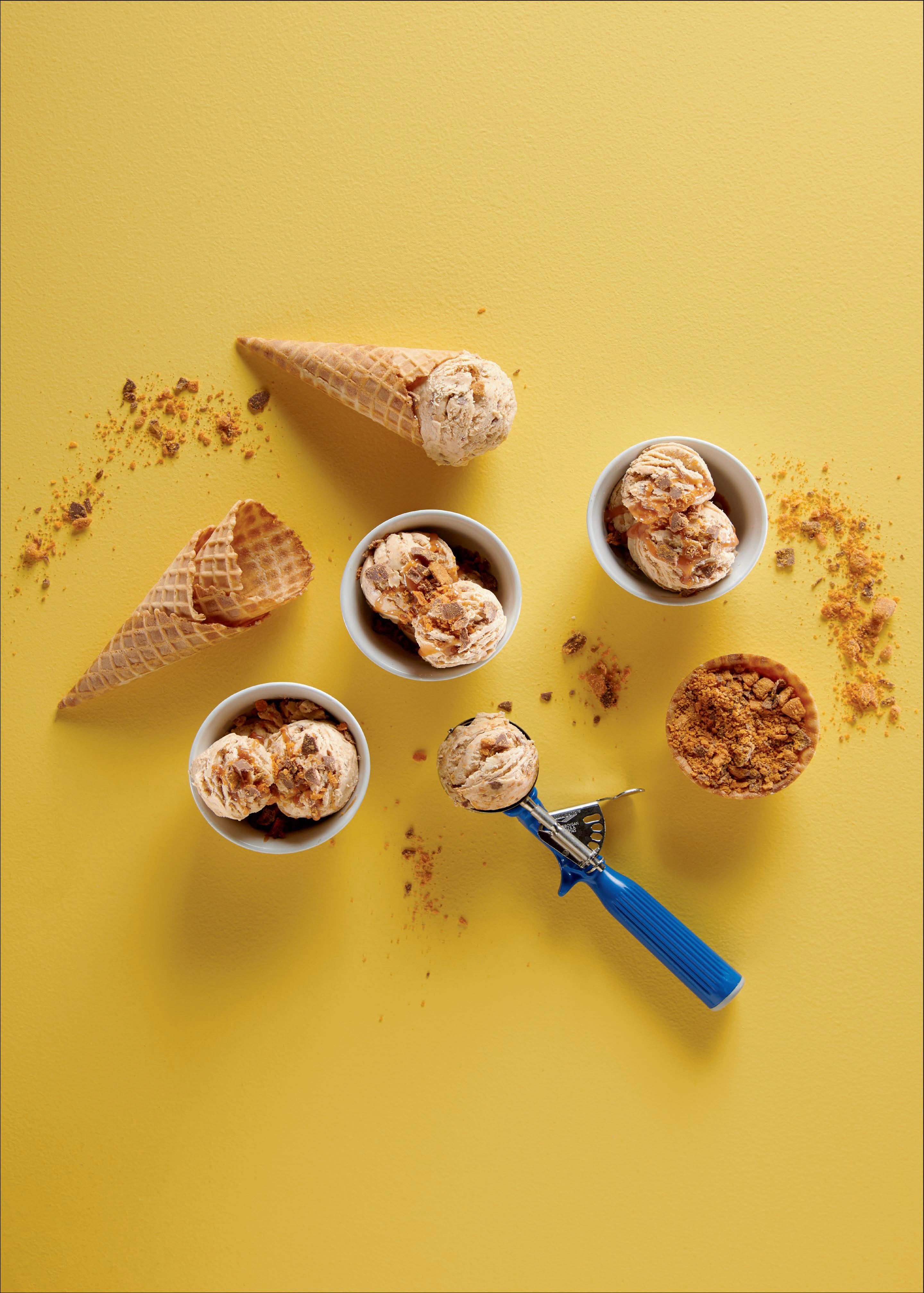





Alot of quick-service restaurants have been “winging” it over the past couple years.

As the price of bone-in chicken wings soared in 2021, wing-centric eateries had to adjust quickly. And though bone-in wing costs have dropped this year to pre-pandemic levels, operators had to switch gears again, as the price for chicken breasts, which provide the meat for boneless wings and tenders, soared— as have the costs for many other commodities as well as labor.

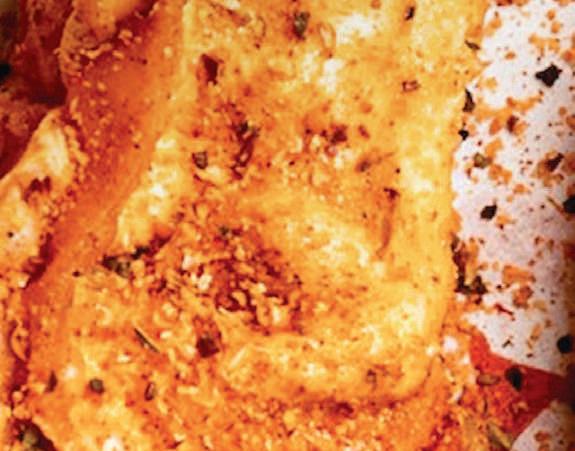


The past two years “have been a constant juggling act” in terms of pricing, supply, staffing, menu development, and more, says Gus

Most wings restaurants took at least one price hike this year or in 2021, but stress on margins remain. In addition, rising gas prices and other inflationary pressures on consumers left little price elasticity. “Right now, there’s not a whole lot of room to move,” he says.
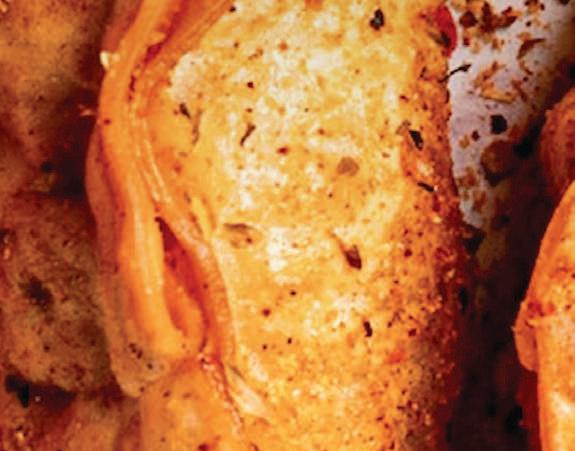
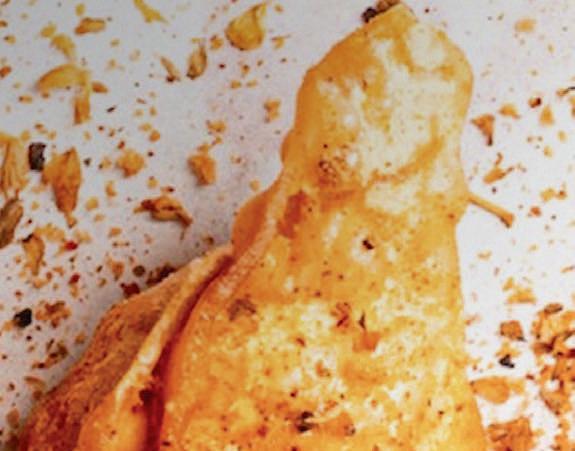

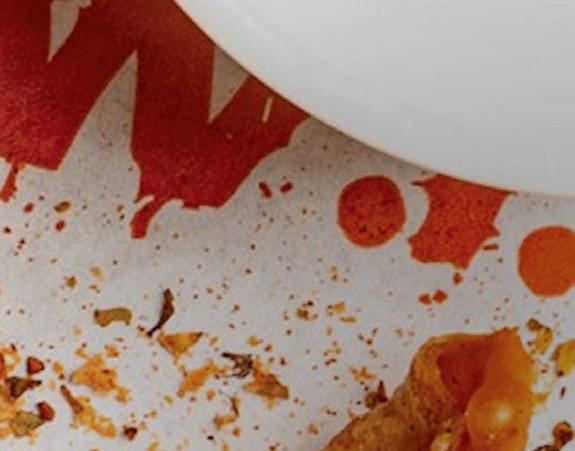
Dan Leyva, chief wing officer at Wings Over, sums up the supply price picture succinctly: “Everything that can go up at this point is going up.” Like many restaurants, “we’ve absorbed the majority of their costs,” he adds.


 Malliaras, founder and owner of Detroit Wing Company, based in Eastpointe, Michigan.
Malliaras, founder and owner of Detroit Wing Company, based in Eastpointe, Michigan.
While some industry veterans have dealt with inflation in the past, it’s a new phenomenon to younger ones, who may have experienced price increases on only a couple of items at a time.
“I have franchisees who have never seen inflation,” says Sam Ballas, chief executive and managing director for East Coast Wings + Grill, based in Winston-Salem, North Carolina. “[At the company’s brand conference] I took 45 minutes telling them what it is and how we got here.”
Inflation is something brands are having to negotiate and continue battling, adds Michael Skipworth, chief executive of Addison, Texas-based Wingstop, the sector’s leader with some 1,858 units, including about 1,639 in the U.S. And with consumers facing higher food and gas prices, it is incumbent on restaurants to “provide value.”
Overall, however, experts believe the condition of the wings sector is strong.
“I would say wings are as popular as ever,” says Matt Ensero, chief executive of Wing It On!, a Raleigh, North Carolina-based brand. “If the past 12 months have taught us anything, wings are here to stay,” adding they have become a part of American food culture.
Operators adapted to the pandemic and its aftermath by relying on stable and sometimes additional suppliers, adding menu items, taking advantage of takeout and delivery options and enhancements, and offering profitable meal deals providing customer value.
Helping is the drop in bone-in wing prices, which stood at more than $3 a pound a year ago, compared to less than $1.75 a pound pre-pandemic, according to the U.S. Department of Agriculture. Prices have been declining this year to below $1.75 a pound by July.
Bone-in wing cost deflation is providing better margins— experts say for perhaps the first time—than for boneless wings and tenders, which have seen prices rise sharply over the past year in part due to higher demand for white-meat chicken.
“We can lean in and give some of that deflation back to maintaining the experience,” Skipworth says in the wake of the cost of boneless, skinless chicken breasts doubling during the first half of the 2022 and the cost of tenders jumping 28 percent.
Maintaining an adequate supply of wings and other items, from spices to carryout boxes, also became important in the wake of the pandemic’s chicken crunch and other supply chain issues. “I know more about logistics now than I ever did in my life,” Malliaras says.
In addition to using established suppliers, for instance, East Coast Wings “went to sources we never used before,” Ballas says, including buying 3,500 pounds of wings from a Chile supplier at a very good price. “You get a great win from that.”
Wingstop is contemplating going even further by potentially
investing in or even acquiring a poultry production plant, which could provide about 20 percent of its wings buy while also making costs more stable and predictable.
“It’s innovative and disruptive,” Skipworth says of the idea.
Some operators added wing-style thighs as a lower-cost option during the chicken crunch, and thighs have remained on some menus. Eateries also innovated around new sauces and items like chicken sandwiches and nuggets— all unique due to each chain’s many proprietary flavorings.

“The question is how do we make the pie bigger versus just raising prices,” Leyva says, noting Wings Over! added a price-sensitive tender sandwich, using only one new item, a split-top bun, with guests choosing one of the chain’s more than two-dozen flavors for the tender.
Although consumers have been fairly accepting of price hikes, it only goes so far, Ballas notes. One East Coast Wings location in the Southeast was allowed to take price increases equal to where they should have been, and “the store lost 35 percent of its sales in the four-week run.”
To battle some higher costs, several wing-centric operators are using meal deals and bundles to balance the higher cost of boneless wings or tenders with better margin side items. Others have eliminated non-essential items that didn’t sell well.
“We look at the menu every month,” Detroit Wings’ Malliaras states. That is likely to continue not only as inflation continues but as the specter of a recession looms on the horizon.
Restaurants have extended their menus by adding new sauce varieties to their already lengthy list—literally dozens—of sauce offerings. A few opted for a bit of out-of-the-box thinking.
Wing It On!, for instance, sought out a menu item not directly tied to protein. “We jumped into the test kitchen and considered factors like popularity, cost, and impact on operations,” Ensero says. The result: vegetable and chicken dumplings, sauced like a wing. “We think we hit a home run,” he says of the high-margin addition.
Alongside new ideas that revolve around the menu, many of the changes operators made during the pandemic, including customer dining habits, will go on into the future.
“We are optimizing our business model—how do we improve pickup and delivery to provide fresh food,” Leyva says. As a result, the company, with units across the Northeast and Midwest, switched to waffle fries that travel better and focuses on better packaging and improved delivery.
After all, he adds, “The guest behavior of ordering online and pickup is here to stay.” q






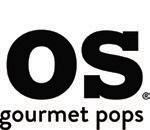
nearly as much as other businesses trying to find people to work our trucks and help our franchisees at events.”
Among frios’ roughly 50 units, there are still a few physical stores, but most of the franchisees who remain in storefronts have favorable deals with landlords in which the overhead makes sense. And many use the space as their commissary to store popsicles and keep their carts.
The current franchise opportunity doesn’t include retail locations. The primary focus is now mobile vans, or as frios fondly calls them, “Sweet Rides.” The vehicles are tie-dye and feature a slide-top storage freezer, internal and external remote-control LED neon lights, Bluetooth speakers, a built-in service window, power inverter, and a customizable menuboard.
Vans operate mostly around events, like an Employee Appreciation Day, or for schools, first responders, hospitals, festivals, fairs, farmers markets, and sporting events. On slower days, some franchisees drive through neighborhoods.
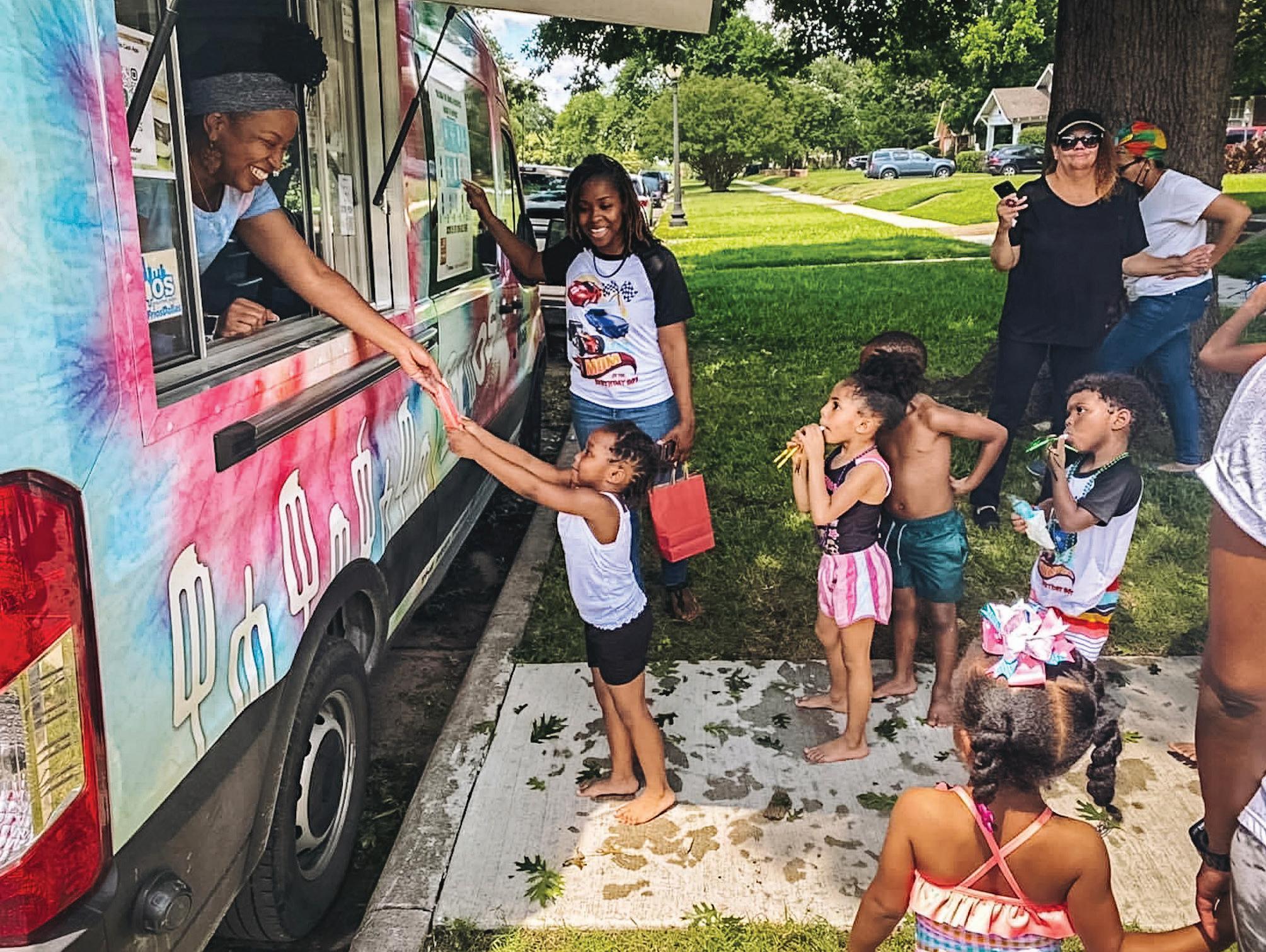
FOUNDERS: CEO Cliff Kennedy and president
Patti Rother
HEADQUARTERS: Mobile, Alabama
YEAR STARTED: 2015
ANNUAL SALES: N/A
TOTAL UNITS: 50

FRANCHISED UNITS: 50
AS A FRANCHISED BUSINESS, FRIOS GOURMET POPS had to get creative with its support once the initial wave of COVID-19 temporarily shut down storefronts nationwide.
CEO Cliff Kennedy felt it was time to go mobile, which wasn’t out of left field. Franchisees had already done iterations of this, with ice cream pushcarts and trailers.
About five operators participated in the first test, and it wasn’t too long afterward frios recognized how perfectly positioned its product is. The company sells prepackaged frozen popsicles in a variety of flavors, making it sanitary and safer to approach customers outside as opposed to them walking into a store.
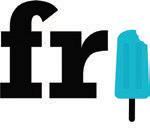
The P&L potential is “drastically different,” as well, president Patti Rother says.
“The flexibility it gave in terms of labor was a game-changer,” she explains. “In a storefront, obviously you’re paying someone regardless if you’re selling popsicles. And then the food truck, if you’re at an event, you only just work the event and hand out popsicles and then you stop paying for labor as soon as the event is over. We’re a really labor light model. We haven’t struggled
As of July, frios vans stretch from the East Coast to Arizona, and by the end of 2022, the concept hopes to be closer to 100 units. The company established a predictable pipeline after being challenged by a shortage of Ford Transit vans. At the beginning of the year, frios held off on signing new operators to provide a more sophisticated system of support to existing partners, and because that’s now settled, franchise sales are ramping up.
The concept sells territories the same way it would actual stores. It targets areas of 200,000 people—although that figure is still a work in progress—and contiguous zip codes. In addition to vans, franchisees can use carts and join wholesale partnerships with local businesses, sports complexes, and schools and universities. Historically, frios has sold single units, but
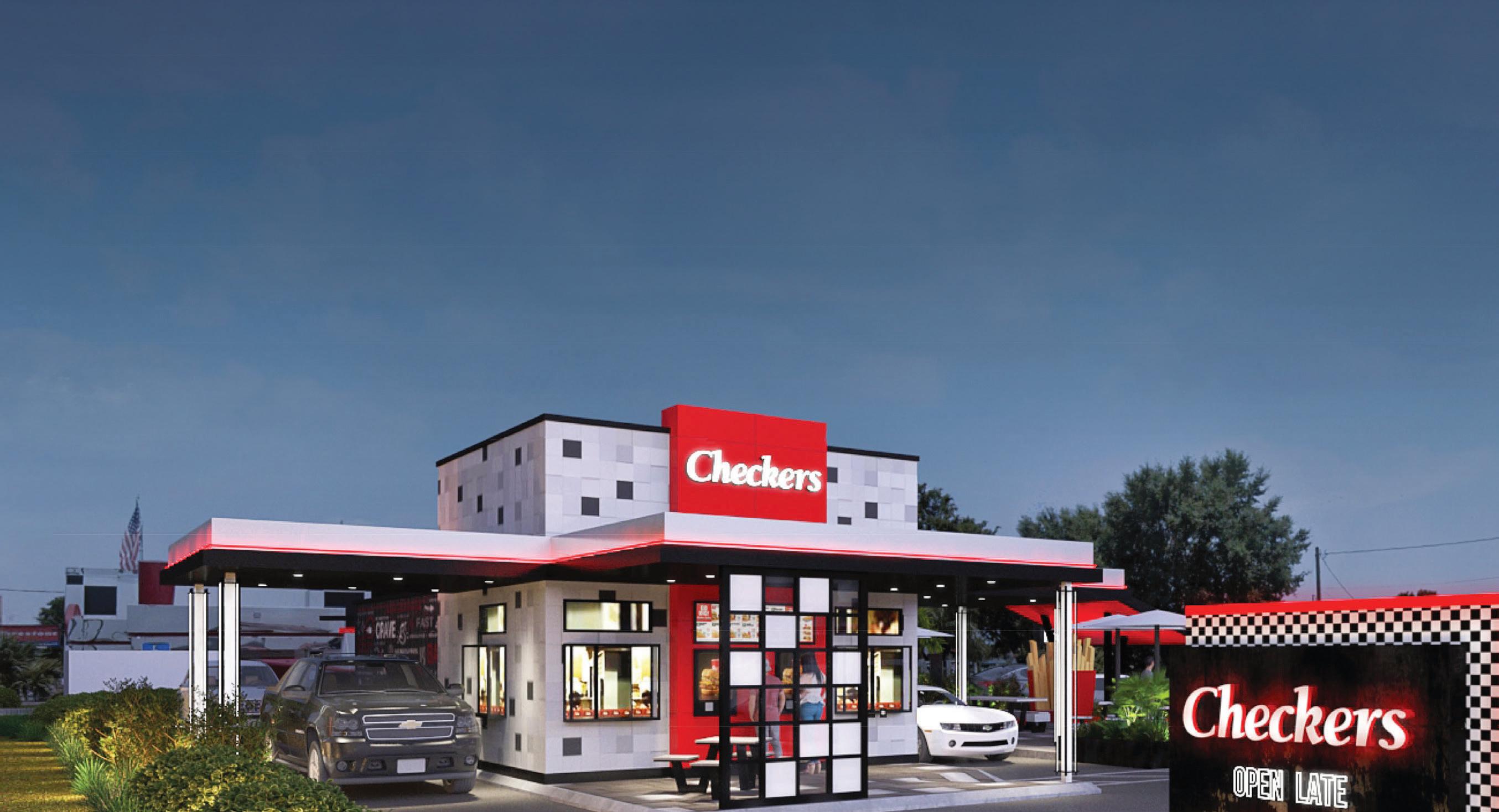
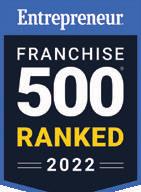

started looking at managing prime costs versus just managing food costs and labor costs. That’s at the heart of the P&L. [And ] other lines in the P&L that you can manage and get one-tenth here, one-tenth there, and you try to survive.”
For Layne’s franchisees, the No. 1 priority is to have available product. The company sells one protein ( chicken tenders ), one side ( French fries ), and the packaging. With over 70 percent of the chain’s business being drive-thru, it is important essentials be available.
Even though we have emerged though the thick of the pandemic, life has not quite gotten back to “normal.” Given supply chain logjams, labor shortages, and the rising cost of fuel, which is affecting shipping costs for all goods, restaurant chains and independents alike are coping with price surges at the counter and worrying about passing along those costs to customers.
It is, as Garrett Reed, CEO of Layne’s Chicken Fingers, calls it: “A perfect storm of everything at once.”

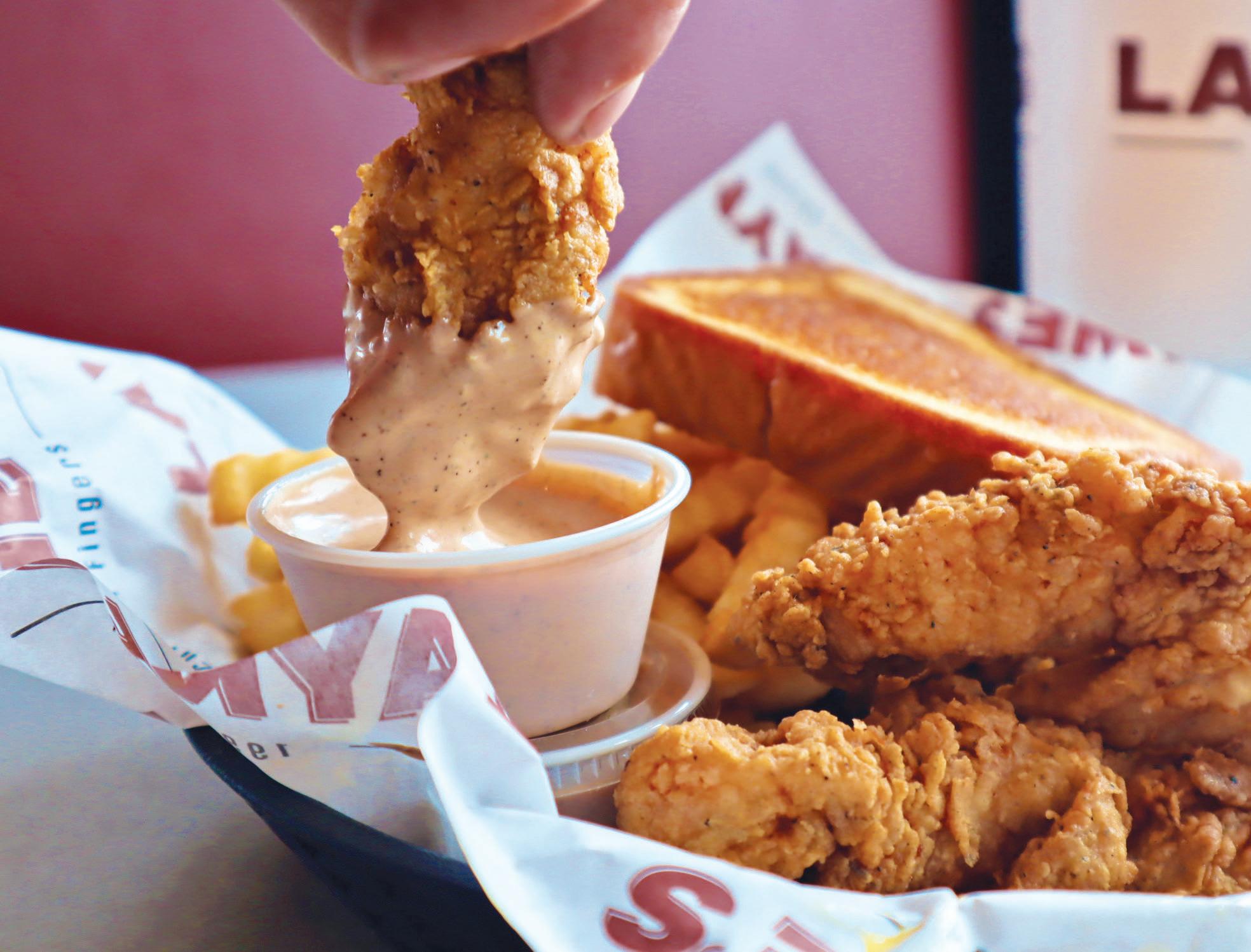
Reed and Layne’s COO, Samir Wattar, recall this climate started brewing mid-2021 as many supplies lagged and demand was high, and it has not stopped since. “I wake up every week to letters from manufacturers—‘We’re taking an increase in 30 days or in 15 days, or your next deal is going to be increased by X,’” Wattir says. For example, the company used to pay $2 per pound for chicken tenders. That cost at the start of the summer was up to $3.70. Fries and soft drinks cost more, too.
“It’s been a struggle to manage,” Wattir adds. “We take price increases, but how much can we pass on to the consumer? When is the point that you’re going to price yourself out of the market? We
“We took a price increase earlier this year,” Wattir says, noting cross-country shipping costs have gone up as much as three or four times. “But we started managing more of prime costs, food and labor together, and implemented a labor management system based on productivity versus percentages. We’re able to control it that way, instead of saying, ‘I want X percent for food costs, and I want X percent for labor costs.’ Let’s combine them and manage them together. Then look at below the prime costs, see what’s on the P&L, and manage that— linen supplies, janitorial supplies, chemicals. Try to get some savings there so you don’t cheat your customer and you don’t overprice yourself out of the market.”
Layne’s took an approach where it will not reduce portion sizes (“shrinkflation” ) or make the customer feel cheated. It wants to stay fair to loyal users. Layne’s also notes it’s received little negative feedback from consumers, far less than normal even, which the brand sees as a sign people are adjusting to the overall price increases surfacing in post-lockdown life.
“It’s been refreshing because we’re fighting so many battles, and you really don’t want to fight the battle with your customer,” Reed says.
Another company working to sustain customer satisfaction amid the surge is Atomic Wings. During lockdown, some of the brand’s locations saw business double, CEO Zak Omar says. Then a shift came.
“I’m a Dunkin’ Donuts franchisee as well, and it seems like across [quick-service restaurants] transaction counts have [recently] gone down,” he says. “It’s a culmination of a couple things. Inflation, and a lot more people have less disposable income. Quick-serves also had to announce about a 20 to 30 percent


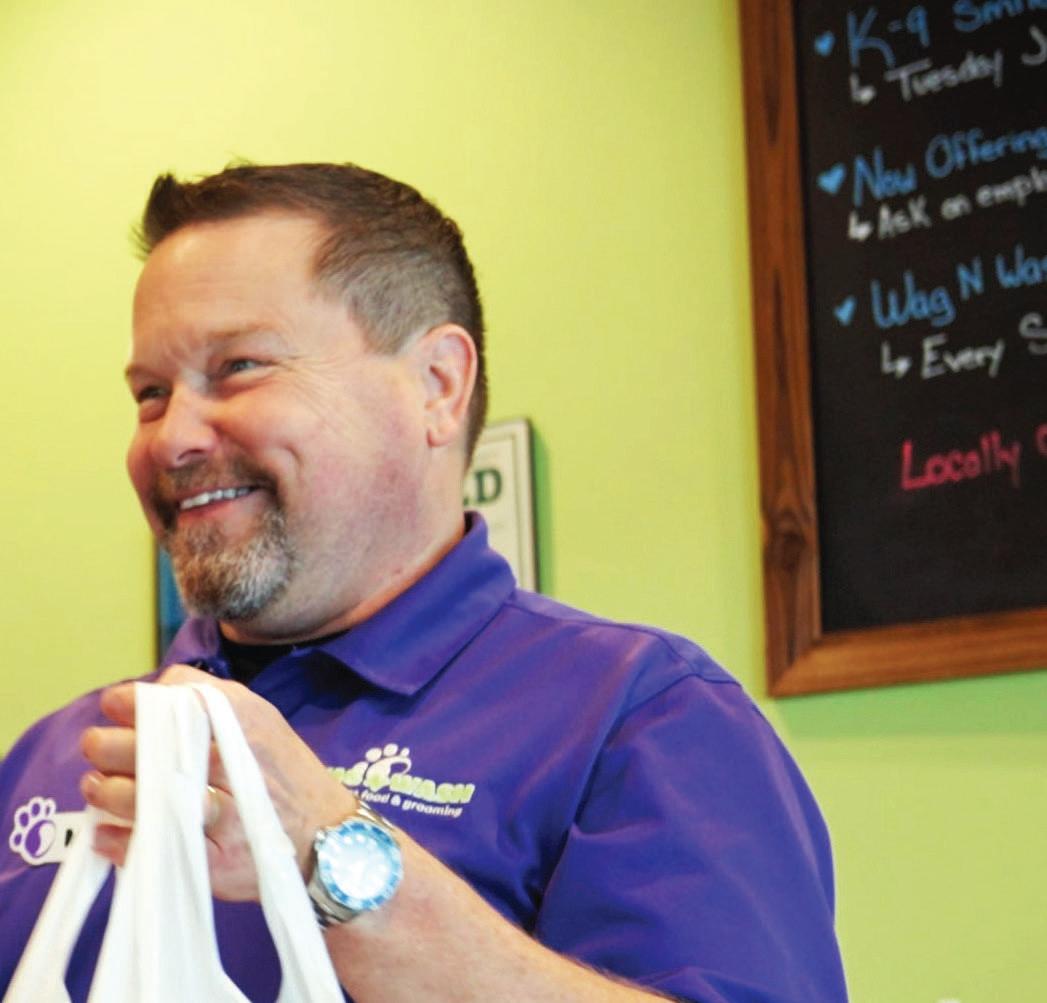
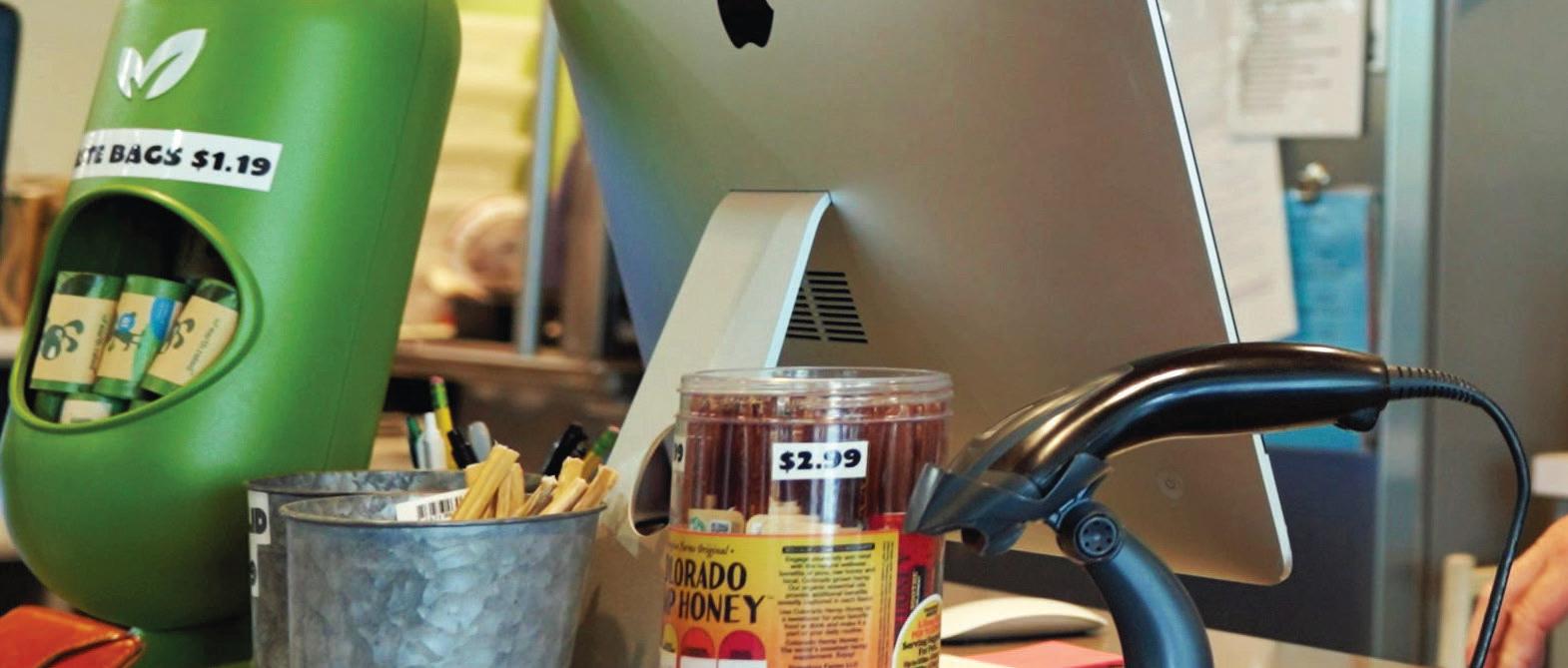

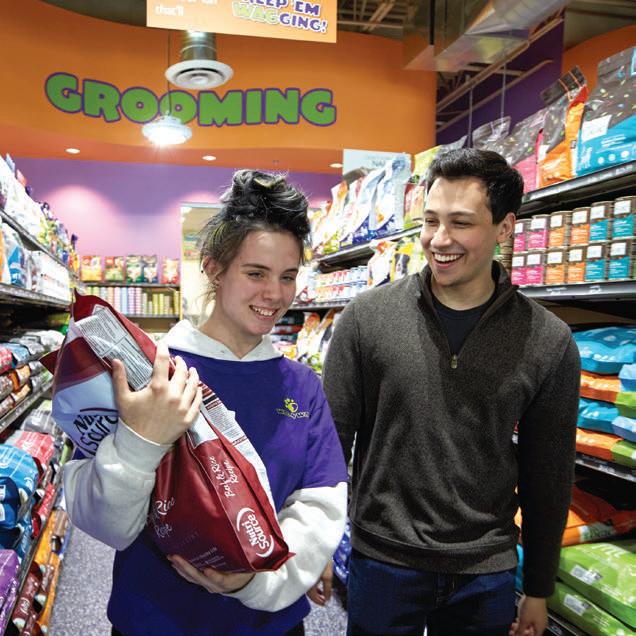


well. That’s all behind our engineering.” With a segmented base and lid, Genpak’s hinged ProView Close-Off containers provide complete meal component separation, preventing food migration by securing each compartment.

Genpak’s Clover line has a secure closure system that stacks well without blocking vents.
Genpak products solve presentation and safety needs across market segments with both its reliability and durability, which helps enhance off-premises customer experiences. Choosing the right product is a balance between form and function. “At the end of the day, it’s really based on functionality and what’s trending in the current market,” Bowser says. The same is true for choosing a container for its insulation properties while seeking recyclable or compostable properties across markets. “We receive feedback that the operator meals are arriving warm in our containers. Our goal is to hit those top performance values for the businesses.”
No one wants their specialty barbecue sauce to drip into their house-made pickles, or worse, hot and cold items to compromise each other—or the paying customer.
Food packaging manufacturer Genpak—headquartered in Charlotte, North Carolina with 17 facilities across North America—helps maintain consistent presentation and safety of takeout and delivery items to protect restaurants’ products and brand integrity.
A variety of to-go container shapes, sizes, and colors in sustainable, microwave-safe, hinged, two-piece, and vented options abound in their Harvest Fiber, Clover, ProView, and ProView Close-Off lines, for instance, to help alleviate the key problems including food presentation, safety, and food migration.
These containers allow restaurants to offer high-quality food to their customers the same way, every time. “Whether it’s a salad or a steak or chicken tenders, we really pride ourselves on the fact that the way the food leaves the kitchen is the way it’s received when the customer goes home,” says Monica Bowser, corporate marketing manager for Genpak. “Our containers are designed and tested to perform and travel
Genpak’s polypropylene containers, which Bowser reports are happily being repurposed by consumers, seem to hit that sweet spot. “They are curbside recyclable in some municipalities and can help merge that branding for business owners,” Bowser says. “What’s important is retaining presentation and keeping prepared meals at the optimal temperature.”
Containers designed with clear lids provide another presentation and safety benefit to help the back of the house visually double-check orders to ensure accuracy, which equates to safety, presentation, and customer satisfaction.
“The venting is a very small but powerful feature because it has humidity control that helps prevent moisture within the products,” Bowser says. “We’re trying to bridge being safe and secure while presenting the orders accurately.”
Evolving within the industry and forging long-term customer relationships is a Genpak priority.
“Overall, Genpak prides itself on having the right experts to continue that legacy, and provide great solutions for the market,” Bowser says. ◗
JOCELYN WINN



























JOSÉ CIL’S GREAT AUNT WAS A SEAMSTRESS. One of her well-worn lines was, “measure twice so you only have to cut once.” The CEO of Restaurant Brands International shared this anecdote recently with franchisees. Calls had started to pour in to Cil and the company’s president of international, David Shear. Operators wanted a piece of Firehouse Subs.

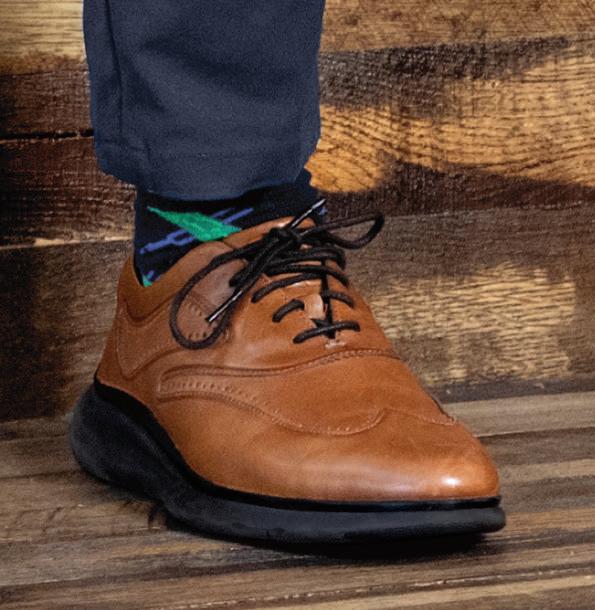


In mid-November, the Burger King, Tim Hortons, and Popeyes owner announced it agreed to acquire the 1,200-unit sandwich chain for $1 billion in an all-cash deal. On its surface, the move, which closed December, added a jigsaw piece so often coveted by restaurant conglomerates. It gave RBI an emerging, growth-ready player in America’s $30 billion quick-service sandwich category to join chicken, burger, and beverage strongholds. For its part, Firehouse approached the M&A table having tripled its unit count since 2010. Founded by brothers and former firefighters Chris and Robin Sorensen, it was a privately held company since unit one in Jacksonville, Florida, to the moment it joined RBI.





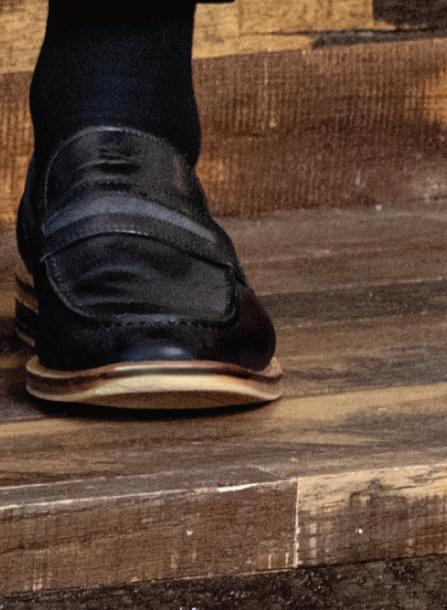




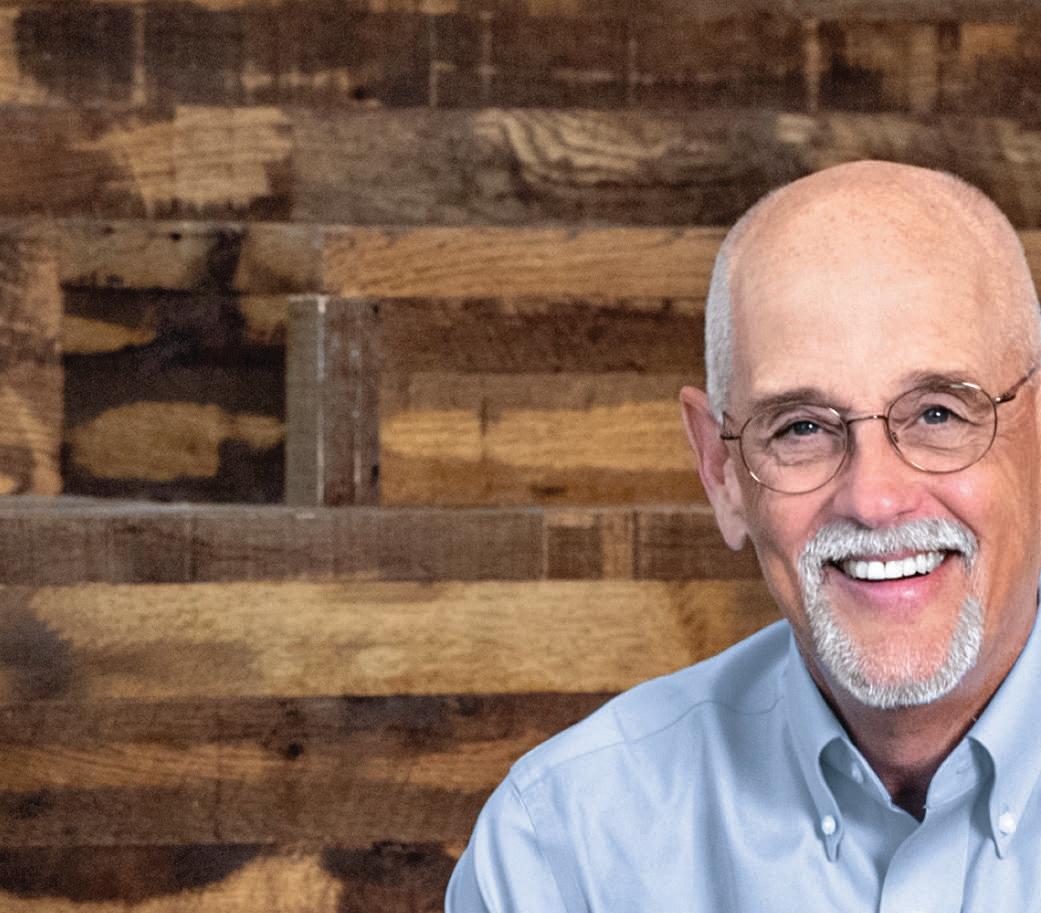
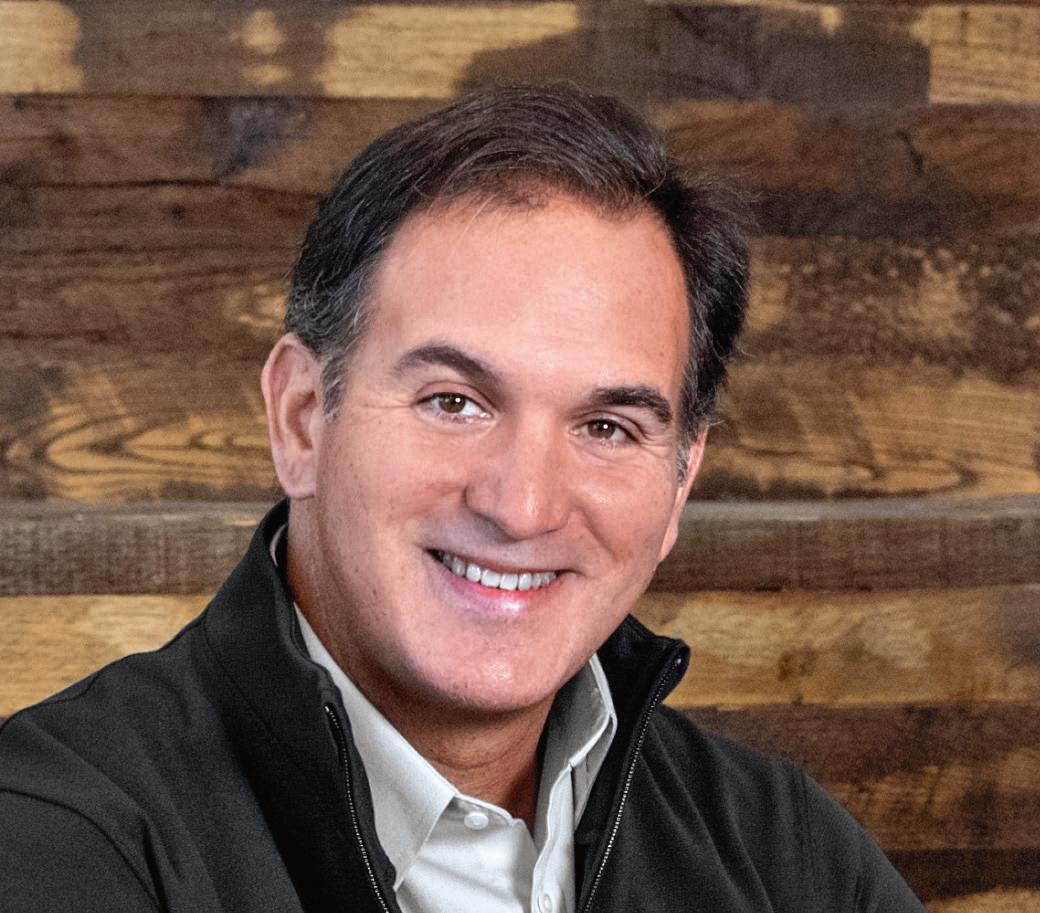
The brand’s history wasn’t pitted by setbacks and leadership shakeups over the decades; it was merely ready for its next act. And RBI franchisees were eager to add a chain that’s domestic same-store sales rocketed 21 percent in 2021 and 20.6 percent across two years. Firehouse’s record-high $900,000 averageunit volumes drove systemwide sales north of $1.1 billion, which sailed 2020’s $872 million. Twenty-seven percent of the business flowed through digital channels. AUVs in Q1 2022 inched even higher to $920,000 on a trailing 12-month basis.
But Cil’s message was clear. While Firehouse’s runway is undeniable, there’s more opportunity than a first look-over might uncover.
“We’re spending time doing the measuring and making sure we have the right place so we only have to cut once,” Cil says.
The deal between RBI and Firehouse began on common ground. Firehouse CEO Don Fox spent 23 years at Burger King, from 1980–2003. Three of those—2000–2003—overlapped with Cil. Although they didn’t cross paths ( Fox was in field ops and Cil in legal) their shared history offered a starting point.
About six weeks before the deal was announced, Fox and Cil met. Fox says there was “instant chemistry and energy” that, frankly, wouldn’t have been possible with anybody else.
Cil, to that point, knew Firehouse best as a consumer. In the years he traveled Florida visiting Burger King pads, and the 10 months he worked as a regional general manager for Walmart, he often found himself eating at the inline locations that sparked Firehouse’s growth.
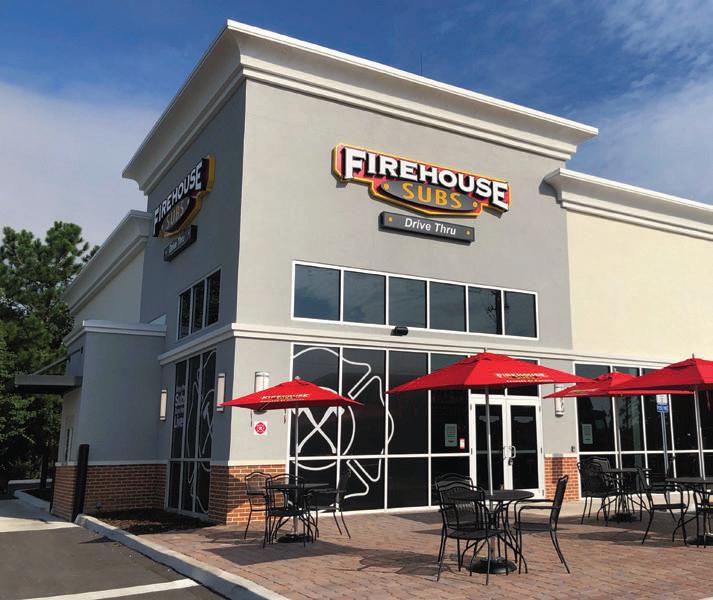
“And that’s how I got to know the brand and fall in love with
it,” Cil says, “because the product was great and the service was great, and it resonated with me.”
Cil and Fox simply had a lot to talk about.
One of RBI’s defining traits since forming in the wake of a 2014, $11 billion takeover of Tim Hortons, has been net-unit expansion. Burger King was growing by roughly 170 units per year when 3G Capital spent $1.56 billion and grabbed control 11 years ago. Ahead of COVID, Burger King pushed about 1,000 locations each calendar turn. Popeyes opened 216 restaurants the year before RBI jumped in and there were 2,725 stores on December 31, 2016. Today, there are about 3,851 globally and Popeyes, in 2021, experienced the highest number of openings since RBI bought it in 2017—unit growth of 7.4 percent, or a net of 254 stores. The chain, which RBI forked up $1.8 billion for, expects to eclipse the 200 figure again this year.
Firehouse presently operates in three countries and territories. Burger King is in more than 120, Tim Hortons over 10, and Popeyes clear of 30.
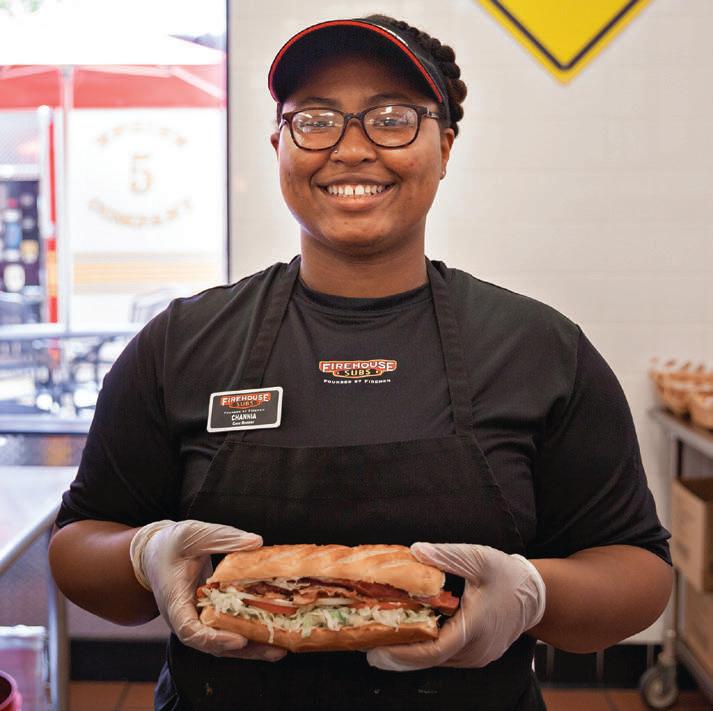
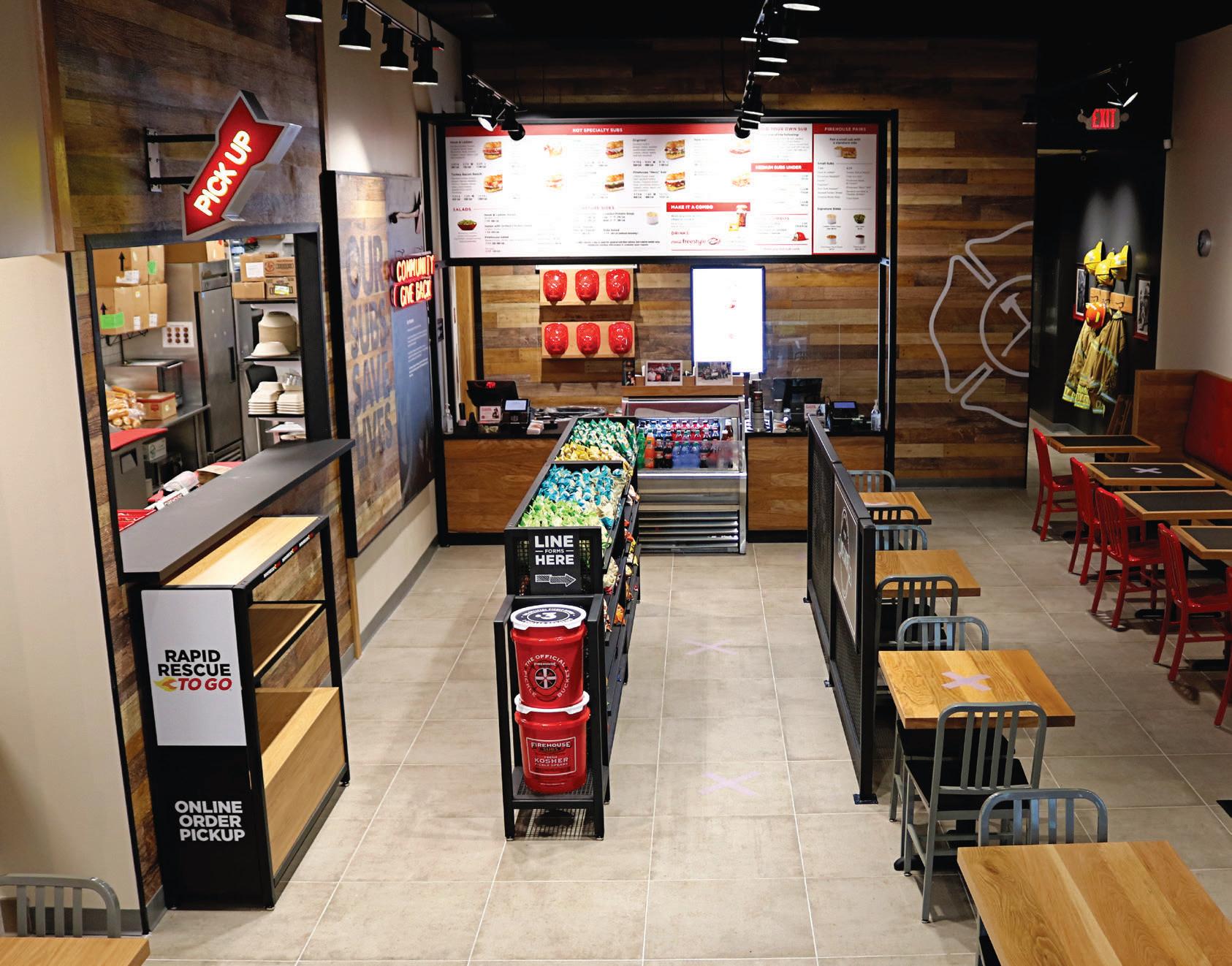
There are 47 Firehouse Subs in Canada—the first opened 2015 in Ontario—and AUVs, generally, perform above the company’s system average.
Just for context, Subway boasts close to 3,000 stores in that market. RBI? More than 4,500 across its three brands. Cil says 80 percent of Canadians visit Tim Hortons’ 3,900 or so venues every month.
RELIABILITY
Mechanical improvements to sensors, fans, controls, and other components to enhance performance and minimize downtime.
INTUITIVE CONTROLS
New next generation, capacitive touch controller with modern user interactions found on a smart device that takes the guesswork out of fryer operations.

SERVICEABILITY
Serviceable components accessible from front of fryer for easier and quicker removal making service calls more efficient and minimizing downtime.
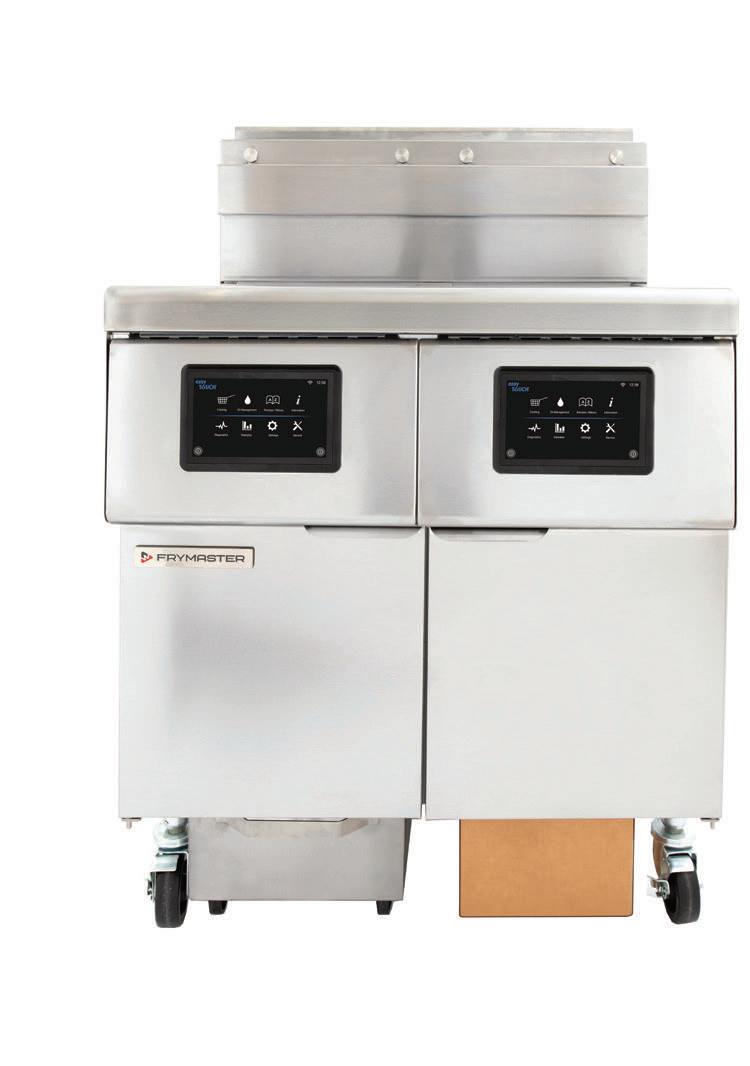
INTERNET CONNECTION
No need to connect to Wi-Fi or an edge server for accessing Cloud capabilities such as remote configuration, data analysis, and diagnostics.

If you take a higher-level view, RBI’s footprint sits near 29,747 restaurants, and roughly 18,000 operate outside the U.S. As of November, it had more than 500 outposts in China (1,620), Brazil (928), Spain (897), Russia (792), Germany (744), and the U.K. (538); and more than 400 in Mexico (450), Australia (443), South Korea (425), and France (416).
Firehouse has zero restaurants in any of those spots. There are 52 international Firehouses, if you count Puerto Rico. And to toss an even more alluring point forward, outside of Spain, where there are only 50, a sandwich chain not named Firehouse touts at least 384 locations in every one. Australia (1,221), the U.K. (2,211), and Brazil (1,641) feature significant bases.
The U.S. picture isn’t one to gloss over, either. Subway has retracted by 3,651 stores since 2019. The broad, year-end 2021 domestic sandwich field: Subway, 21,147 locations; Arby’s, 3,409; Jimmy John’s, 2,657; Jersey Mike’s, 2,100; Panera, 2,080; Firehouse, 1,044; McAlister’s 505.
“You have this underlying mechanism and culture of growth that then will carry over into our brand,” Fox says. “If I’m a potential franchisee, I’m just thinking about the horsepower and the level of experience that’s behind that. … I’ve been in the industry for many years and I’m fairly well known, but if you think about the ownership of Firehouse, it’s not per se. So it really changes the dynamic quite a bit, I think, for any potential franchisee looking to invest.”
In February, Firehouse added a new member to its C-suite for the first time in 11 years (the position sat vacant since 2009 when Fox was promoted to CEO). Mike Hancock, a 6-foot-7 former defensive end who played in the CFL with the Toronto Argonauts, joined as chief operating officer. The nine-year RBI vet held the same post at Tim Hortons. Before, he clocked five years at Burger King directing operations across North America, Southern Europe, Turkey, and Africa.
The move wasn’t a cryptic one—it was a signal sender. “That just adds great firepower to an already great team,” Fox says.
“He’s been operating in an arena where we aspire to go,” he adds of Tim Hortons. “So that real-world experience is of incredible value. And again, I’ve been in the industry for 48 years, but I haven’t operated at a level with a 5,000-unit brand.”
Since close, Cil says RBI worked to integrate and elevate Firehouse. On the back-end, it’s connected the chain to RBI’s infrastructure—accounting, IT, and financial systems.
RBI has more than 200 engineers working through tech. The company created an in-house stack, including loyalty programs and a CRM engine. It’s also invested in white-label delivery alongside aggregator partnerships and continues to update menuboards to dynamic digital formats across the system, with an added focus on suggestive sell capabilities.
Firehouse already had a mobile app complete with order and pay and loyalty capabilities, as well as more than 3.5 million members. In 2021, 2 to 2.5X more dollars came via off-premises channels than pre-COVID-19. That October, 14 percent of sales owed to delivery alone. Rewards grew at a clip of 50,000
users per month and reached 10 percent of Firehouse’s total transactions.
“It’s so energizing when you know you’ve got these great, great assets that consumers love,” Fox says. “And know it’s more like fine tuning, with the technical side of the business to really unleash it.”
Cil says the more important integration piece, perhaps, is the “business standpoint mindset.”
With Fox now in the fold, RBI has a team of four presidents running each brand. They meet once a week and chat about performance and perspectives. Cil calls it a “sharing of best practices” that’s gone both ways since Firehouse arrived.
It extends from HQ analytics to site selection to format innovation and franchise recruitment. Yet it rests on economics, Cil says. “There’s no gaming that,” he notes. “You’ve got to have strong revenues, strong profitability, a good return on investment for a franchisee to invest and grow. And we think we have a great case here, and Mike and Don and the rest of the team will help accelerate that in years to come.”
One element Cil believes RBI can learn from Firehouse is its Public Safety Foundation. The program awarded $69 million over the years to “hometown heroes” and benefitted 5,700-plus organizations. Recently, RBI hosted its first Firehouse Public Safety Foundation event after it donated 17 automatic external defibrillators—good for $25,000—to the West Miami Police Department. The chief, major, and newly appointed mayor showed up. A speaker shared how a previously donated defibrillator saved a life in the last year.
“That’s pretty tangible,” Cil says. “And very direct and super powerful message for all of us. And for our team as well.”
At Tim Hortons, more than $27 million (cad) was raised in 2021 and early 2022 for the chain’s “Foundation Camps” and other initiatives. Burger King has provided nearly $55 million in scholarships to high school seniors and corporate and franchisee employees since 2002. The Popeyes foundation donated over $1.2 million to Support No Kid Hungry as of March.
So it’s yet another synergy RBI wants to build on, Cil says.
Cil adds RBI isn’t in a hurry to open Firehouse units just because it can. “What we’re doing now is taking time to do the research, to understand what consumers expect from the sandwich category in these markets that we think have the potential for growth,” Cil says. “We’re doing research on product; on taste; on naming conventions for products. We’re thinking about what types of formats; how does technology fit in; what’s the right price and menu architecture to consider; and format innovation.”
Just like its expansion prospects in general, Firehouse has ample room to maneuver here, too. Through the first four weeks of the pandemic, Firehouse’s sales plunged 45 percent, year-over-year. The Monday of COVID’s “official” landing ( March 16), it stopped collecting royalties. A day later, Firehouse did the same for ad fees. In fact, it would be months before the brand asked operators for either, and even then, it came as deferred payments.
›
›
›
›
› Enterprise-wide reporting

› Receive daily provisional credit
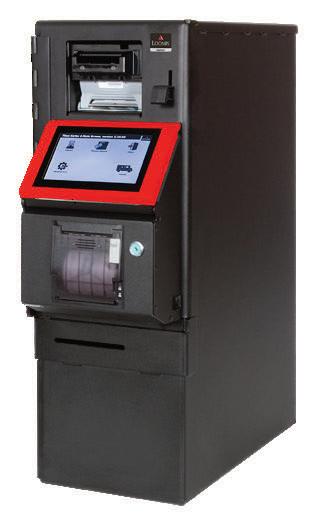

› Eliminate bank trips
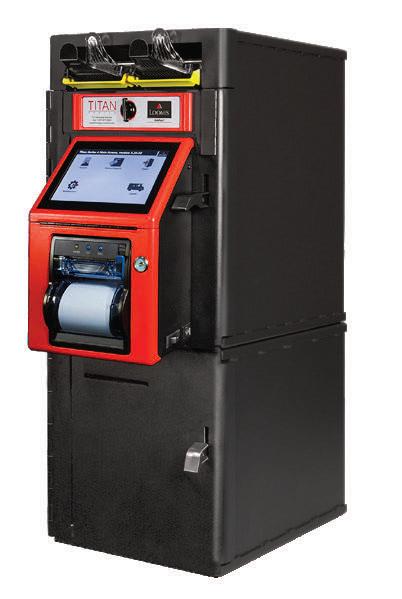

› Keep funds safe

The goal, Fox says, was to keep cash in the wallets of franchisees and provide them with ammo for whatever twist came next. However, what ended up happening was a return to prioryear levels after only 10 weeks. Come summer, Firehouse forgave deferred royalties and surged ahead.
“For us, what was very compelling was that the pandemic, and the initial stage of it, produced an environment where people in increasing numbers used us in a way that was perhaps different than they considered using us before,” Fox says.
But the positive spin was Firehouse had already begun to consider this. COVID didn’t invent off-premises realities as much as it provided kindling. The brand completed digital and packaging work pre-2020.
In 2012, Firehouse’s dine-in business accounted for 52.4 percent of sales (unusual for a sandwich shop, as most of its rivals were predominantly takeout, Fox notes) During succeeding years, the contribution from dine-in began to decline. In 2014, it dropped narrowly below 50 percent. Two years later, dine-in mixed just 46.5 percent. Fast forward to 2019 and it was down to 38 percent.
This was hardly a Firehouse-specific tale. From 2012–2019, fast casual showed a 5 percentage-point decline in dine-in. And more telling during the same span—a drop of 17 percentage points for a hefty collection of quick-service brands.
Close to 90 percent of Firehouse’s sales in 2012 came from a customer placing an order with a cashier at the point of sale. In 2019, the share of what the chain considered its “traditional chan-
nel of trade,” slid to 75.3 percent. Meanwhile, looking at 2012–2019, catering, online ordering, third-party delivery, drive-thru, and even phone orders, all grew.
Traditional ordering dropped below 40 percent of sales during COVID depths. It returned to 56 percent by year’s close.
The key here, Fox says, is Firehouse had assets in place. It only had to lay into advertising and promotion to jumpstart awareness. RBI can help with that.
“And that traffic that we’ve picked up has been lasting,” he says. “People are continuing to use us in that off-premises experience.”
Firehouse’s “Rapid Rescue,” or internal online ordering, plus third-party delivery, remains double what it was in 2019. “It has created a fundamental shift in how the consumer uses us,” Fox says. “I get so excited by the fact that RBI’s strategy was already in line with that in terms of the embracing of digital in particular. Being able to leverage those resources, it’ll be much more impactful than if I had been left to my own devices under private ownership for the foreseeable future.”
Fox says RBI’s tools will help the company anticipate further change as the sector’s recovery marches on. In particular, the deal instantly gave Firehouse a drive-thru playbook that stems from operating more than 12,000 across North America.
Firehouse has nearly 70 today and they’re overindexing sales in most cases, Fox says. The sandwich industry, in general, is not rife with windows like, say burgers are, which is one reason the category rebounded slower. “The vast majority of the system is in traditional in-line units, but in every instance where the business case is strong to look for drive-thru locations we’ve leaned into that,” Fox says.
As noted before, RBI spent the last 12–18 months modernizing its drive-thru fleet. Namely around digital menuboards. Those learnings are going to cascade to Firehouse.
“We think there’s an opportunity there to share best practices and you can basically cut to the chase versus iterate, which many of us have had to do over the past five, six years,” Cil says.
Adds Fox, who pushed “more Whoppers out windows than I can ever count,” in his 23 years with Burger King: “RBI can quickly make us better drive-thru operators. We are a great sandwich brand. We know how to make the best food. Do we have opportunity to learn how to serve it better?”
All told, Fox says, there are clear, myriad ways to grow Firehouse and generate more transactions. But it’s going to start with guest experience.
What he wants to bring to the portfolio from Firehouse “is that love of Firehouse.” RBI’s value core of “building the mostloved restaurant brands in the world,” is a vision Fox feels the chain fits right into.
“The thing is, we just have to make more customers aware of us so even more people can love us,” he says. q
 Danny Klein is Food News Media’s editorial director. Contact him at danny@QSRmagazine.com
Danny Klein is Food News Media’s editorial director. Contact him at danny@QSRmagazine.com
oh, and streamline your operations too, with ( ) FIFO Bottle™
DISCOVER MORE!


DISPENSING, REINVENTED!










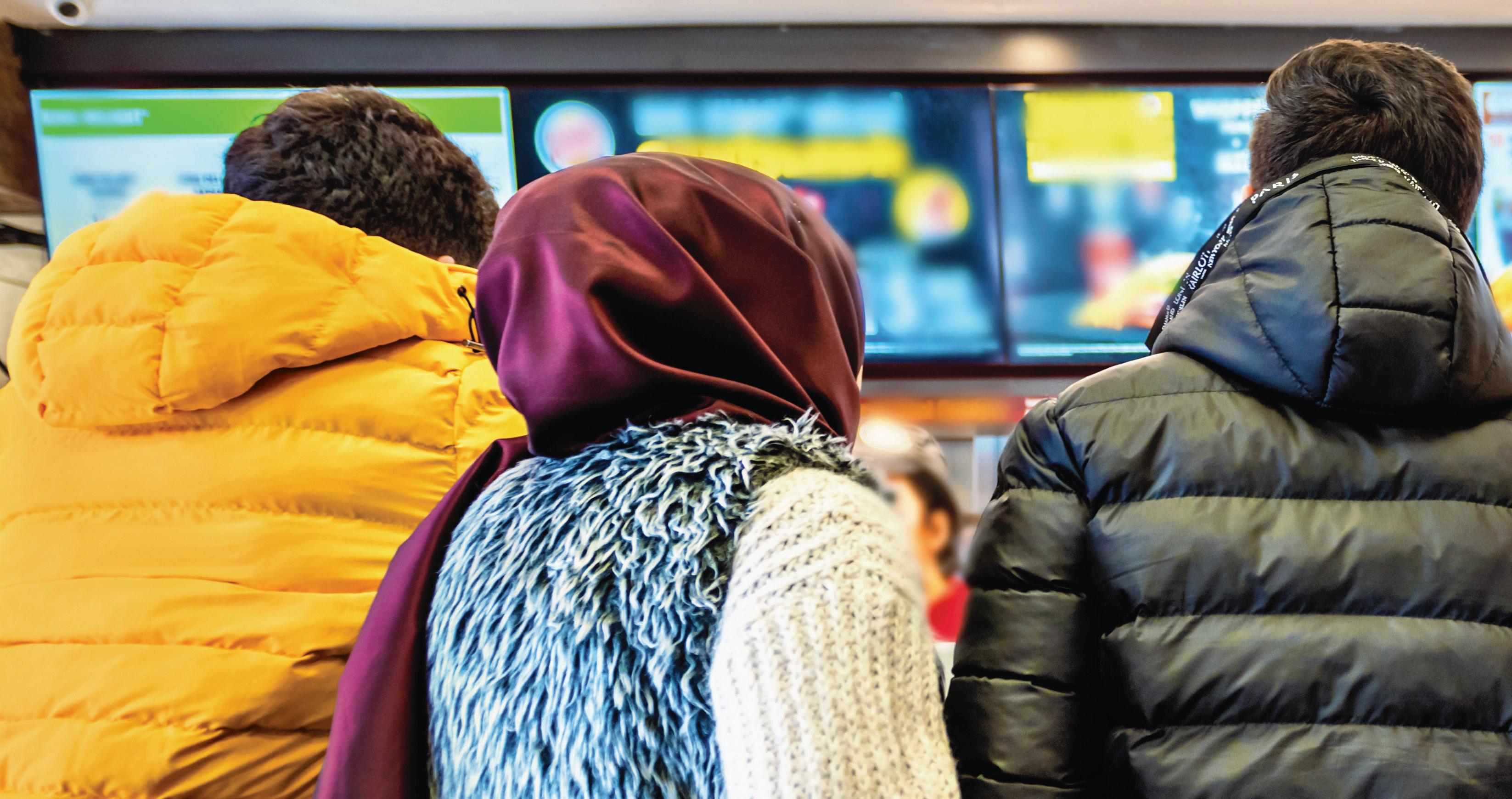
AAs the pandemic era nears its waning chapters, franchising has held steady. In fact, you could argue market conditions threw weight behind one of the sector’s historic growth vehicles. The franchising field expanded at a 3.2 percent compound annual growth rate from 2015–2021, according to financial services company Rabobank. The share of franchising as a portion of foodservice sales in the U.S. scaled about 4 percent, per year, through that window. The top 10 franchising restaurants’ market share lifted from 19 percent in 2012 to 28.4 percent by 2021. That compared to an 11 percent decline for non-franchised restaurants, based on Rabobank estimates. Per Euromonitor, as of 2021, franchises accounted for some 40 percent of domestic foodservice sales.
During the pandemic, franchises grew their market share nearly 10 percent, Rabobank data showed. And it’s just beginning. McDonald’s franchisees, for instance, which make up 95 percent of its U.S system, experienced average growth of $125,000 per restaurant last year. That put operators over $500,000, a 50 percent hike in the past three years.


Financial reporting from franchisees, industrywide, indicated stronger-than-normal cash operations, up 28 percent in 2021 versus the five-year average. Franchisees grew absolute sales from $213 billion in 2019 to $238 billion last year.



The why behind the sector’s resiliency traces back to decades of selling points. But it also owes to what’s changed.

“Great quick-service restaurant franchise deals stem from mutual trust, attraction to a dynamic and growing brand and above all, the fundamental financial metrics of the business,” says Robin Gagnon, CEO and cofounder of We Sell Restaurants. “Rapidly increasing costs to launch and operate require that franchisees join forces with those who offer the greatest opportunity to leverage their capital and grow their operation.”
“For those reasons, AUV has never been more critical since sales can play a key part in delivering on profitability,” she adds. “Low-volume operations that a few years ago may have been worth a second look will slide as occupancy, interest rates, and buildout costs spiral to new norms.”
This has been clear at the top. Yum! Brands and Restaurant Brands International turned in signficant growth in 2021. The Pizza Hut, KFC, Habit Burger, and Taco Bell owner debuted a net of 1,259 restaurants in Q4, pushing its year-end total to 3,057 net new openings—the most in its history, and, according to CEO David Gibbs, the most ever achieved by a restaurant group. Burger King, Popeyes, Firehouse Subs, and Tim Hortons’ parent achieved net growth of 4.5 percent, finishing the calendar with 29,456 restaurants compared to 27,025 in the yearago period.
Inspire Brands, which directs Dunkin’, Arby’s, Buffalo Wild Wings, Rusty Taco, Sonic Drive-In, Jimmy John’s, and Baskin-Robbins, opened more than 1,400 units in 2021, including over 500 U.S. franchise-led stores and 800 locations outside the country.
Alex Oswiecinski, cofounder and CEO of Prospect Direct, says you can’t get around hard numbers. Brands with a solid ROI are going to attract operators, especially amid rocky conditions. “In a time when other assets like stocks are very volatile, folks are looking at where they can put capital that has a reliable, proven track record of returning cashflow in the near- to-medium term,” he says. “I believe the trend will
Restaurant franchising did far more than weather the worst COVID-19 could muster. And now, it’s on the cusp of more growth, higher standards, and no shortage of possibilities.
continue where brands that have proof of existing franchisees making money by meeting the needs of today’s consumer will have a leg up over brands that are more aspirational, or oriented around hitting trends that are further out.”
According to the International Franchise Association’s 2022 outlook, franchise establishments in the quick-service industry increased by 2.6 percent last year. It expects the figure to clock in at 2.1 percent in 2022 for a total of 192,426 businesses. The important note was 2020 saw quick- and full-service franchise venues decline 6.7 and 6.5 percent, respectively. Both bounced back to the tune of 2.6 and 3.3 percent growth. Come 2023, they’ll nearly be on par with where the field stood pre-COVID.
Oswiecinski says his company has observed interest “about the same” for franchising as a whole pre- versus post-pandemic. “But it has polarized the winners and losers,” he says.
“The pandemic changed habits by teaching people that they could procure goods and services without leaving their homes,” Oswiecinski says. “Even after restrictions were lifted, these habits of expecting convenience remained. Brands that focused on technology or adapted to bring their service directly to the consumer, either physically or digitally, are winning.”
Gagnon agrees. “Franchisors that stand out are investing in technology on multiple fronts. This includes the customer service dimension where loyalty apps keep customers returning, measuring their distance to the door to prep food that’s hot when they arrive for pickup and allow for kiosk ordering, improved drive lanes, and more,” she says.
Franchise brands continue to leverage tech to reduce footprints (even to the point of cutting the dining room out altogether), while increasing speed of operations to reduce start-up costs, Gagnon notes. “They [also] are using tech to enhance marketing efforts, geo-targeting the consumer, even using artificial intelligence for order-taking to improve profitability as the labor model is re-evaluated within the category,” she says.
COVID solidified quick service as a category nimble enough to take the technological leap, while also delivering on a support model for franchisees. It’s a dynamic that helped build loyalty and goodwill from operators as investments paid off and they kept the doors open during one of the most chaotic periods on record. As noted, once the landscape shifted, hosts of quick-serves were able to retain sales or even gain market share.
It’s going to reshape the base. “Technology fees as part of the franchise agreement within the sector is a topic to be watching as we head into 2023,” Gagnon says. “Shockingly few brands collect these fees as part of their FDD, but this will be a must-have for the future. The evolution of technology is going to require constant
reinvestment to stay competitive in the marketplace. Companies that collect technology fees on an ongoing basis won’t need to put plans on hold to improve the customer experience while they search for funding to innovate.”
Stan Friedman, a 30-year franchise executive, veteran franchisor, and president of FRM Solutions, says leading bands are standing out due to adjustments and forward thinking just like what Gagnon mentioned. In other terms, whether brands met post-COVID requirements and cascaded those learnings down to operators, is a question prospective franchisees now seek out.
“More frictionless transactions and fewer touchpoints means online ordering and eliminating the need for someone to physically answer phones to take orders,” he says. “It’s a win for the operator in terms of labor, a win for the consumer—not needing to touch money, sign a credit card receipt, etc.”
Friedman believes the pandemic sped changes already coming. “And those who are really winning today,” he says, “are the brands that had the foresight to embrace these technological advances, prior to COVID, as opposed to making mad dashes toward less efficient solutions by virtue of necessity just to stay in the game.”
Graham Chapman, EVP of account services at 919 Marketing, refers to today’s leaders as franchise concepts “built for the modern-day customer.”
“These brands are usually led by forward thinking innovators who are ahead of the curve, especially from a marketing perspective,” he says, referencing product placements in popular Netflix shows and influencer campaigns.
“Of course, any brands that were early adopters of drive-thru models with a service-minded touch, i.e. Chick-fil-A’s new drive-thru model [express lanes], and have found creative ways to make Olo/delivery apps work without destroying margins are in a great spot,” Chapman adds. “However, an age-old principle is more relevant than ever today—a great franchise deal is awarded, not sold. Franchisors thrive only when they are growing sustainably and awarding locations and territories to qualified candidates who fit the brand and its culture.”
There should be plenty of movement as the market resets. Among the top 50 quick-serves in 2020, the total number of franchised units fell 2 percent. However, franchisors’ share of unit ownership lifted from 13 to 15 percent. Meaning, operators stepped in at times to take back sagging operations. Those units could be flipped. Yum! said it anticipates $100 million in refranchising proceeds this year alone. High multiples and eager buyers led to significant amounts of deal activity during COVID.


“A
is waiting.”
Private equity was aggressive. Wendy’s and Taco Bell franchisee Delight Restaurant Group reported a 92.2 percent growth in sales, primarily through acquisitions of units. Flynn Restaurant Group had $3.7 billion in revenue in 2021 after it completed a $552.6 million purchase of 937 Pizza Hut and 194 Wendy’s stores from bankrupt operator NPC International.
What’s next? Rabobank believes deals of this nature led to a shakeout of sorts for U.S. franchisees, “which is expected to result in greater consolidation of the landscape.” The company credited the uptick in deal activity to a confluence of challenges; higher returns, buyers’ cash levels, and recent growth trends.
Valuations in 2023/2024 are unlikely to be as attractive. Margins are tightening due to rising prices, instability in commodity complexes is increasing, and the cost of capital is climbing.
“I would say the economy is on everyone’s mind at the moment, specifically inflation and the government’s next moves,” Oswiecinski says. “This directly
while for others it will be an inflection point that prompts them to take the leap into something they’ve been wanting, but putting off, like franchise/business ownership,” Oswiecinski says.
Something else to consider is the landscape itself. In 2020, independent locations declined by 8 percent, according to The NPD Group (28,399 closures). But per NPD’s Fall 2021 ReCount restaurant census, which totals restaurants opened as of September 30, 2021, the independent field expanded by 1 percent, or 2,893 units, last year.
Independent locations grew in seven of the nine Census regions, NPD said, and large areas like Los Angeles, Dallas-Fort Worth, and Seattle-Tacoma.
Simply, independents are reemerging as a competitor, although they’re likely to trail for some time due to debt load and other realities difficult to address without collective scale.
“But even as dine-in returns, other channels aren’t going to vanish. While dining rooms are back, curbside and off-premises is not going anywhere,” Friedman says. “So brands that accommodate these incremental opportunities for transactions are win/win. Smaller footprints, fewer SKUs are also winning combinations, as supply chain and labor issues continue to linger.”
affects franchising with regarding to tightened lending, access to and cost of capital for prospective franchisees. This means brands that have the majority of their new franchisees using SBA loans may need to temper development expectations. Brands that have a product/ services tied to essential human needs will fare better.”
The same goes for brands that are more inflationresistant, or higher-margin business models with a smaller portion of the P&L tied up in labor and real estate expenses, he says—concepts differentiated enough in the market to have pricing power.
“Outside of labor challenges, the biggest topic to monitor has to be the economy in general,” Chapman reiterates. “Will the economy just endure a short dip or is a crash on the horizon? How do international conflicts/trade battles impact supply chain/distribution? If the economy does, indeed, crash will that actually be a good thing for quick-serves offering cheaper food, and often the comfort food options many folks turn to in an economic depression?”
As usual, setbacks will present opportunity for some and final straws for others, and that’s especially true of an entrepreneurial world like franchising. “Overall, though, as we saw in the last recession and during other periods of volatility, some people will use these external circumstances as an excuse to not make a change,
You can say the same about drive-thru, even if the angle has changed. “COVID made drive-thru an exponentially stronger competitive advantage,” Chapman says. “Drive-thru quick-serves could limit close proximity and face-to-face interaction, reduce/eliminate dining room service—therefore, limiting staffing needs—avoid complete reliance on delivery apps that can cripple margins, etc.”
“This created even more demand and interest in the quick-service category, especially for those with drivethru models as sales exploded,” he continues. “It will be interesting to see if drive-thru concepts maintain their momentum in a post-COVID world where more and more folks are working from home.”
Labor isn’t a topic losing ground, either. Quick-service franchises boasted a workforce of 3,880,612 in 2019. The 2022 projection was 3,810,044, according to IFA. Full-service: 1,116,894 in 2019 and 1,096,149 estimated for 2022. “Franchisors who are taking direct action and sharing the burden of raising wages and the ‘Great Resignation’ are the ones that stand out,” Chapman says. “Some brands have introduced robot servers and other new ideas to streamline service and cut labor costs. Others have doubled down on showing their people how much they care to improve hiring and retention, like offering entry-level employees actual career paths and possible future ownership opportunities and hosting systemwide surveys to reward devoted franchisees with great stories by paying for education/ certifications or subsidizing housing costs.”
“ FRANCHISORS WHO ARE TAKING DIRECT ACTION AND SHARING THE BURDEN OF RAISING WAGES AND THE ‘GREAT RESIGNATION’ ARE THE ONES THAT STAND OUT”
As consumers begin to dine at full-service brands again, Rabobank expects franchising valuations to suffer. In the U.S., unit economics will remain strong relative to competitors, the company noted, but perhaps not quite as robust as we’ve seen over the last five years. So 2022 could be a year for some franchisees to exit as well.

Meanwhile, Rabobank sees significant franchise whitespace overseas as restaurants seek joint development deals. Between 2016 and 2021, units in the rest of the world grew to twice the number of those in North America.


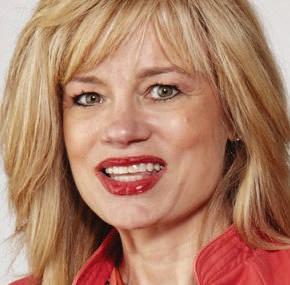

“For franchisors in the U.S., more focus will need to be put into maintaining share, margins, and smart growth than absolute growth,” Rabobank said. “This will be done through innovation, tech advancements, and optimizing existing tools to allow operators to be more effective and to keep up with the increasingly capricious consumer. This may include the deployment of ghost kitchens, host kitchens, and smart limited-timeoffering management.”
And just as COVID allowed franchisors to prove their mettle, the industry in 2023 and beyond will reflect the strength both ways. “Relationships are more important post-COVID than ever before,” Friedman says. “Relationships not just with consumers, but between franchisor and franchisees; franchisees and their teams, managers, and customers. And let’s not forget suppliers. Trust is not an entitlement and it takes intentionality to earn it and keep it.” »












QSR magazine’s Best Franchise Deals for 2022 were selected from a nomination process that ran from mid-May to mid-June. Finalists were reviewed by the Franchise Council, which selected their top choices from shared information and FDD data. Their top choices comprise the final list. Brands cannot appear on Best Franchise Deals for back-to-back years, but can return after a year off.














These brands are well-positioned to capitalize on a market rife with potential.




















 BY DANNY KLEIN
BY DANNY KLEIN

And now, on to this year’s Best Franchise Deals, the 12TH in QSR’s history. For 2022, we reconnected with our Franchise Council of industry experts to get their insight and picks.
Here are the 14 Best Franchise Deals (in no particular order).
THE FRANCHISE COUNCIL: GRAHAM CHAPMAN EVP of account services, STAN FRIEDMAN president, ALEX OSWIECINSKI co-founder and CEO, ROBIN GAGNON CEO and co-founder, We Sell RestaurantsNUMBER OF U.S. FRANCHISE UNITS: 765
NUMBER OF U.S. TOTAL UNITS: 911
TOTAL SYSTEMWIDE SALES: $2 billion
FRANCHISE AVERAGE-UNIT VOLUME: $2,544,354
FRANCHISE FEE: $35,000
ROYALTY: 6 percent of gross sales
RENEWAL FEE: 50 percent of the current franchise fee
MARKETING FEE: 4 percent of gross sales
TOTAL STARTUP COSTS: $501,700–$950,200
FRANCHISEE INCENTIVES: Veteran discount: 20 percent on initial franchise fee
“The numbers speak for themselves, franchise AUVs at $2.5 million, with start-up costs beginning at $502,000 make for a great ratio that puts them at the top of potential ROI opportunities in food. Strong year-over-year growth, a seasoned leadership team, and solid brand name recognition makes Zaxby’s a strong best franchise deal contender.”
“Strategic investment from Goldman Sachs is a game changer. Servant leadership mentality permeates all levels of the organization and offers franchisees a distinct/critical hiring and retention advantage—$2.5 million AUV and year-over-year growth numbers speak for themselves.”
“Zaxby’s AUV comes in at $2.5 million per store on a price tag to build of between $501,700 and $950,200. Assuming standard profitability, that is one of the best returns on capital invested among the contenders. With just 765 units nationwide, there is still room for development so the brand is ripe for continued growth without oversaturation.”
THE SKINNY:
Zaxby’s headed toward 2023 with fresh leadership and no shortage of runway, as the Council cited. Also, powerful backing after selling a “significant” stake to Goldman Sachs in fall 2020. Headed into the deal, Zaxby’s grew the franchise side of its business by 77 locations over a three-year stretch. And the company’s average licensee ran just three locations.

Today, the brand is helmed by Bernard Acoca, the former leader of El Pollo Loco. He became only the second CEO in Zaxby’s history when he stepped in for founder Zach McLeroy last year. McLeroy, who created the brand in 1990 with Tony Townley in Statesboro, Georgia, transitioned to chairman. In April, Zaxby’s added Sharlene Smith, who previously served as VP of operations for Papa Johns’ North America sector, as COO. A month later, 20-year Zaxby’s vet Michelle Morgan was elevated to the company’s first chief people officer. But this was hardly the last move. Mike Mettler arrived as chief development officer in May after a four-year run at Orangetheory Fitness (he previously worked for Dairy Queen and Domino’s) In the same announcement, former interim chief digital and technology officer Mike Nettles, who clocked time at Panera Bread and Papa Johns, moved into the position long term. Then, Patrick Schwing, formerly Arby’s CMO, came on as chief marketing and strategy officer in June.
To put it plainly, Zaxby’s is gearing up.
NUMBER OF U.S. FRANCHISE UNITS: 995
NUMBER OF U.S. TOTAL UNITS: 1,051
TOTAL SYSTEM-WIDE SALES: $602,044,735
FRANCHISE AVERAGE-UNIT VOLUME: $609,753
TOTAL AVERAGE-UNIT VOLUME: $608,723
FRANCHISE FEE: $30,000
ROYALTY: 6% of monthly gross sales
RENEWAL FEE: Currently, half of the current initial franchise fee; and $775 renewal upgrade design fee (non-refundable)
MARKETING FEE: National: Currently 3 percent of gross sales; with the right to increase the fee to 5 percent of gross sales upon 60 days’ notice
TOTAL START-UP COSTS: $320,301–$585,465
“Smoothie King opened more than 100 units in 2021 and turned in 25 percent growth in sales and 17 percent increases in AUV, with their store average-unit volume reaching $609,753. Perhaps more importantly, the nearly 50-year-old brand made real strides in technology. One of the few brands to charge a technology fee in their FDD, they have developed supply chain technology to fuel a fresh products brand, launched an innovated smoothie subscription service and are planning to implement artificial intelligence technology for their drive-through. They earned a space as one of the Best Franchise Deals for 2022 and their growth and technology adoption bears watching.”
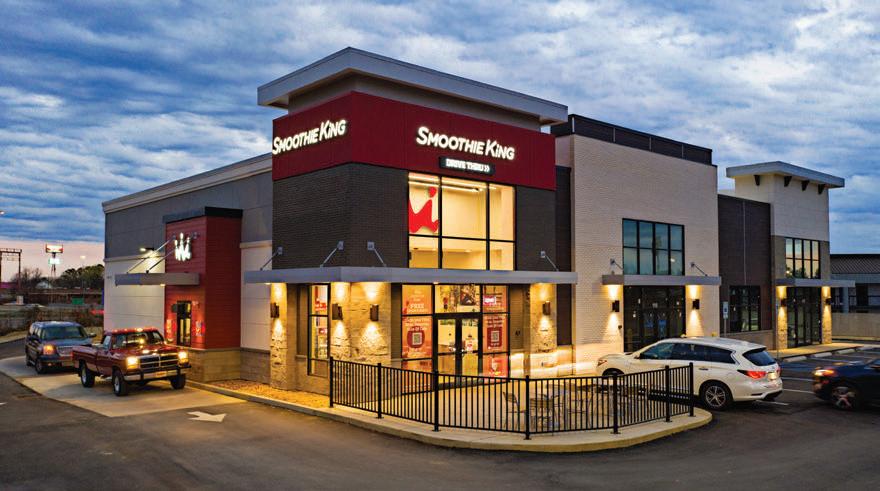
After a year that included north of 100 openings, Smoothie King signed development agreements to debut nearly 100 more already this year. This includes growth markets in the Carolinas, Florida, New York, Ohio, Texas, and Wisconsin. Of late, the brand launched a healthy rewards loyalty program designed to reward customers for living a healthy and active lifestyle. Users have the ability to earn and redeem rewards and receive exclusive offers and online exclusives. Additionally, using a GPS platform, Smoothie King can reward loyalty members when they work out at the gym.
The brand’s menu innovation remains at the top of franchisees’ selling points. Menu categories are arranged by purpose, so guests select smoothies based on personal health and wellness goals. There’s a commitment to plant-based and vegan choices as well, with a sizable scope of ingredient add-ins for customization. This year, the company unveiled a new business model with its smoothie subscription program, “Nourish Daily,” which the company said this will provide incremental revenue to franchisees.
To the Council’s point, the numbers are difficult to ignore: AUVs lifted 17 percent to $609,753, with the top 25 percent of units reporting over $907,000.
“ THE NUMBERS SPEAK FOR THEMSELVES, FRANCHISE AUVS AT $2.5 MILLION, WITH START-UP COSTS BEGINNING AT $502,000 MAKE FOR A GREAT RATIO...”
NUMBER OF U.S. FRANCHISE UNITS: 32
NUMBER OF U.S. TOTAL UNITS: 36
TOTAL SYSTEM-WIDE SALES: $35,554,880
FRANCHISE AVERAGE-UNIT VOLUME: $1,099,722
TOTAL AVERAGE-UNIT VOLUME: $1,099,722
FRANCHISE FEE: 25,000
ROYALTY: 5 percent of gross sales
RENEWAL FEE: 50 percent of then-current initial franchise fee
MARKETING FEE: If established, the amount Rusty Taco specifies, subject to the Marketing Spending Requirement.
TOTAL START-UP COSTS: $531,900 to $897,450
FRANCHISEE INCENTIVES:
VETFRAN PROGRAM: The “VetFran Program” is designed to provide career opportunities for honorably discharged military veterans or wounded warriors. It applies if you are a veteran or returning service member (who has not previously signed, or had an affiliate that signed, a development agreement or franchise agreement with the brand) who qualifies. The discount is 50 percent off the initial franchise fee for each franchise agreement. Rusty Taco applies the prorated discount for each Franchise Agreement toward the development fee payable under your development agreement. Prospective franchisees may qualify for both the VetFran Program and the standard adopter incentive program.
STANDARD ADOPTER INCENTIVE PROGRAM: Notwithstanding the first sentence of Section 4.2 of the Franchise Agreement, if you open the restaurant in compliance with the terms of the franchise agreement (including, but not limited to, Section 3.1 (site selection and on-site evaluation) Section 3.2 ( franchise site application), Section 3.3 (Lease of Building), Section 3.4 (Restaurant Designed and BuildOut), Section 3.5 (Opening), Section 6.5 (Purchase Requirements), Section 6.6 (Purchases from Designated Sources), and Section 6.7 (Franchised Location; Vehicles), then the royalty fee will be amended as set forth below:
rant operates; and 5 percent of the restaurant’s gross sales accrued during the remainder of the initial term of the franchise agreement. If you fail to open the restaurant in compliance with the franchise agreement and/or development agreement (if applicable) on or before December 31, 2022, fail to submit the development costs to us within 120 days of opening the restaurant, or fail to build the restaurant in the design, to the specifications, and at the location approved, you will not qualify for the 2022 Pull Forward Incentive and your royalty fee with be 5 percent of gross sales for the term of the franchise agreement.
“Backed with more resources after being acquired by Inspire Brands, it’s hard to bet against this 36-unit brand becoming much bigger in coming years. With most markets open, and no end in sight to the taco-trend, franchisees have the opportunity to both pick prime territories and ride the rising tide of consumer preference and increased brand recognition.”
“I love this brand and its brand story. I also like the simplicity of the concept, ‘nothing fancy, just real flavor and cheap, too.’ While this brand hasn’t got the cache in its name that more mature brands enjoy, it does have the full strength of Inspire Brands behind it. That means the same economies of scale afforded to franchisees of brands such as Arby’s, Buffalo Wild Wings, Sonic, Jimmy John’s, Baskin-Robbins, and Dunkin’, will be found here. Also, Inspire offers some very powerful incentives to franchisees signing development agreements for store openings over the next 36 months.”
Founded in 2010 by Rusty Fenton and his wife, Denise, Rusty Taco merges the flavors and experience of a traditional taco stand with flexible prototype designs. The Inspire Brands-backed chain (Dunkin’, Sonic, Buffalo Wild Wings, Baskin-Robbins, Arby’s, and Jimmy John’s) has 36 locations across multiple states, with its newest store opening earlier this year in San Antonio.
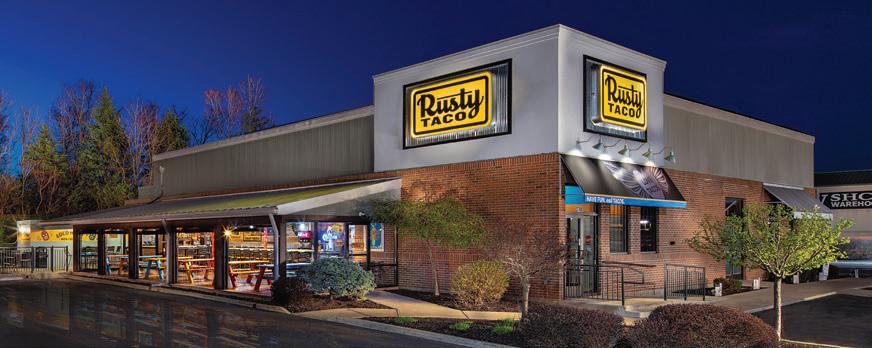
“ I LOVE THIS BRAND AND ITS BRAND STORY. I ALSO LIKE THE SIMPLICITY OF THE CONCEPT, ‘NOTHING FANCY, JUST REAL FLAVOR AND CHEAP, TOO.’ ”
TIME PERIOD
First 12 months of operation
Months 13–24 of operation
Months 25–36 of operation
Remaining term of franchise agreement
Notwithstanding the foregoing, if you open the restaurant in compliance with the terms of the Franchise agreement at least three months before the opening date, then the royalty will be zero percent of gross sales accrued for the first six months that the restaurant is open for business, and the royalty rates described in the table above will apply beginning six months after the restaurant’s actual opening date.
2022 PULL FORWARD INCENTIVE: If Rusty Taco and you have already signed a pre-existing development agreement, or if the company and you sign a new development agreement, with a development schedule that requires you to open a restaurant in 2023 or later, and you sign a franchise agreement for and open that restaurant in compliance with the franchise agreement and development agreement on or before December 31, 2022, and you submit development costs to the company within 120 days of opening the restaurant and build the restaurant in the design, to the specifications, and at the location approved, then the royalty fee will be zero percent of gross sales accrued during the first year (12 months) that the restaurant operates; 2 percent of gross sales accrued during the second year (13–24 months) that the restaurant operates; 4 percent of gross sales accrued during the third year (25–36 months) that the restau-
Unlike some other taco chains, Rusty Taco appreciates three strong dayparts, with a high percentage of sales coming in the morning thanks to an array of breakfast tacos. All tacos can also be ordered as rice bowls or salads, which helps spread occasions. To capitalize on recent trends, it also unveiled an elevated prototype complete with an on-site bar. The layout provides further dining and seating options. Other adaptations include mobile ordering and pickup through its app, website, and third-party. As the Council mentioned, Rusty Taco is a rare up-and-comer with the support of one of the country’s largest conglomerates. The company notes franchisees can invest in a new, emerging chain with ample whitespace, yet do so with the “comfort and security” of Inspire Brands’ engine. That includes shared services like development, supply chain, and marketing support. Multiple franchise agreements were signed in 2021, which will lead to growth throughout Utah, Nevada, Virginia, and Texas. Several new operators are already a part of the Inspire family.
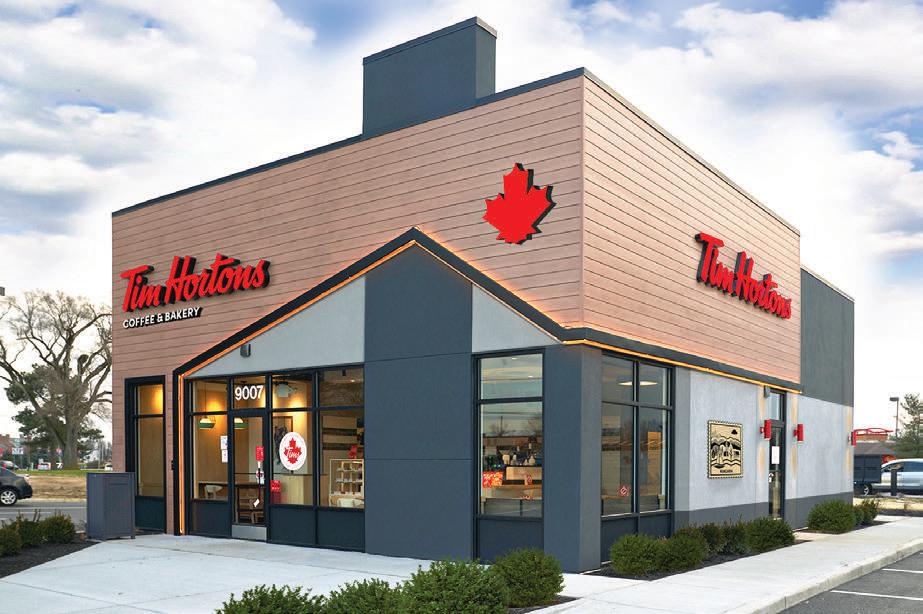
NUMBER OF U.S. FRANCHISE UNITS: 637
NUMBER OF U.S. TOTAL UNITS: 637
TOTAL SYSTEM-WIDE SALES: $687,500,000
FRANCHISE AVERAGE-UNIT VOLUME: $1,200,000
TOTAL AVERAGE-UNIT VOLUME: $1,200,000
FRANCHISE FEE: $50,000
ROYALTY: 6 percent of sales
RENEWAL FEE: $50,000
MARKETING FEE: 4 percent of sales
TOTAL START-UP COSTS: $246,500–$2,162,500
“Way ahead of the curve with a prime-time influencer/spokesperson relationship with Justin Bieber (will help the Canada to U.S. push in a big way). Third-largest coffee chain with serious name recognition. As other coffee chains battle territory restrictions (due to growth which highlights the ongoing upside of the coffee space), Tim Hortons is positioned well to capitalize.”
As the Council suggests, one thing Tim Hortons doesn’t lack is name value. Parent company Restaurant Brands International CEO José Cil recently noted 80 percent of Canadians visit the brand every month. And the chain’s cult-favorite status? “It’s not a cult if everybody likes it, right?” Cil told QSR “… It’s as Canadian as the maple leaf and hockey.” While there’s no denying the brand’s hold in Canada (there are more than 3,900 locations), there remains plenty of growth opportunity stateside. At fewer than 640 stores, the U.S. map is wide open to Tim Hortons. This expansion will come with next-generation designs as well, which the company unveiled in early June. One is a 900-square-foot drive-thru-only model built to maximize efficiency and speed of service. The prototype is integrated with Tim Hortons’ app, meaning guests can easily order ahead, collect rewards points, and access weekly exclusive offers. The new store also features mobile order parking spots. The other prototype is a 1,600-squarefoot restaurant with 24 seats inside. As part of both designs, the menu is simpler, but with new items like refreshers and energy drinks, alongside mainstays such as Iced Capps, doughnuts, Timbits, breakfast sandwiches, and Original Blend and Dark Roast coffee.
More than 10 new model stores with a dining room have been built since 2020, and another 20-plus will debut before the end of 2022, the company says. Overall, the chain’s density in the U.S. is beginning to expand beyond its heavy presence in the Northeast and Upper Midwest. The brand recently signed a 30-unit deal for Houston and a 15-unit agreement in Atlanta.
NUMBER OF U.S. FRANCHISE UNITS: 124
NUMBER OF U.S. TOTAL UNITS: 137
TOTAL SYSTEM-WIDE SALES: $108,883,844.34
FRANCHISE AVERAGE-UNIT VOLUME: $915,668
TOTAL AVERAGE-UNIT VOLUME: $916,432
FRANCHISE FEE: $30,000.00
ROYALTY: None
RENEWAL FEE: $2,000
MARKETING FEE: 1 percent
TOTAL START-UP COSTS: $386,350–$908,770
SIZING UP FROM THE SIDELINES:
“A unique model in several ways makes the brand differentiated to both franchisees and consumers. Having no royalties, while being transparent that brand revenue is generated through from coffee and supplies, potentially gives franchisees more margin control.
Ability to setup drive-thru locations in unique spots with a small footprint and minimal staffing is appealing in the current market.”
“The Human Bean is largely a western chain, working its way east, offering drive-thru espresso and coffee beverages. The company proudly sources its own coffee, with long-term relationships with coffee farmers, and encourages them to adopt sustainable growing methods. The company does not charge franchisees any ongoing percentage-of-sales royalty or marketing fees, earning its revenues instead from the sale of coffee and supplies to franchisees. In business since 1998 and franchising since 2002, the number of locations has risen over the past 10 years from 47 in 2011 to the current total of 121 (up from the previously reported total of 105) 13 are company-owned and all are located in the U.S.”
The separator for drive-thru coffee franchise The Human Bean is the aforementioned fact it doesn’t charge a percentage-of-sales royalty. The brand’s revenues stem from bulk sales of coffee and other supplies ordered from its franchised locations. “The Human Bean realizes that as independent business owners, franchisees should be able to enjoy the many fruits of their labor while receiving the benefits of being part of The Human Bean franchise,” the company says. “Our goal is for Human Bean franchisees to enjoy the returns from their investment while receiving the benefits of being part of The Human Bean franchise.”
The Human Bean serves a chocolate-covered espresso bean on top of every drink, and has earned a fervent following in its regional base. It supports four local giveback programs including, Coffee for a Cure, Mochas for Men, Food Drives, and Earth Day. “We are focused on human beans taking care of human beans,” the brand says.
The Human Bean started in 1998 as a drive-thru espresso stand in Ashland, Oregon, and claims to have more than 300 stores open or under development in 25 states today.

NUMBER OF U.S. FRANCHISE UNITS: 150
NUMBER OF U.S. TOTAL UNITS: 205
TOTAL SYSTEM-WIDE SALES: $255,000,000
FRANCHISE AVERAGE-UNIT VOLUME: $1,293,304
TOTAL AVERAGE-UNIT VOLUME: $1,404,812 (company owned )
FRANCHISE FEE: $50,000
ROYALTY: 5 percent gross sales
RENEWAL FEE: $3,500
MARKETING FEE: $10,000 ( for grand opening)
TOTAL START-UP COSTS: $742,300 - $980,300
FRANCHISEE INCENTIVES: Chicken Salad Chick has relationships with third-party sources which offer financing to those who qualify to cover the following: franchise fee, startup costs, equipment, inventory, accounts receivable, payroll. Chicken Salad Chick also provides a turn-key grand opening program with marketing and media planning for each restaurant, utilizing the $10,000 fee to support those efforts.
SIZING UP FROM THE SIDELINES:
“Chicken Salad Chick turns in a star performance with an AUV of $1.3 million with a cost to build of less than a million. Sales in 2021 increased by 46 percent, showing that this brand’s growth is off the charts. They also benefit from a differentiated concept. They have no real rival in the chicken salad space despite many contenders in the fried chicken categories.”
“ ABILITY TO SETUP DRIVE-THRU LOCATIONS IN UNIQUE SPOTS WITH A SMALL FOOTPRINT AND MINIMAL STAFFING IS APPEALING IN THE CURRENT MARKET.”
ONE THING TIM HORTONS DOESN’T LACK IS NAME VALUE. 80 PERCENT OF CANADIANS VISIT THE BRAND EVERY MONTH.


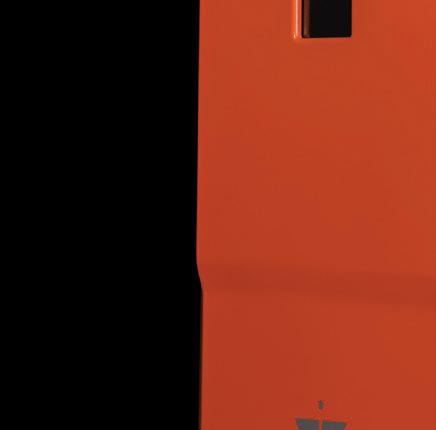


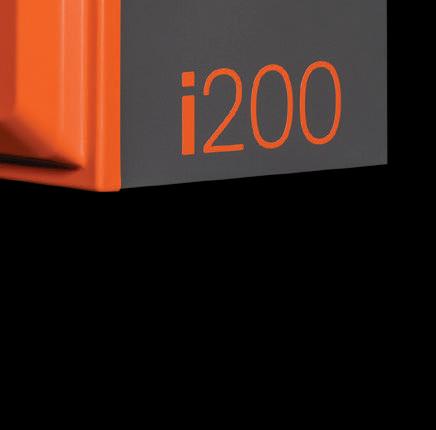

“A brand that has authentic appeal—founder story, southern recipes, niche offering, etc. Feels like a good fit for a large demographic of health conscious and on-the-go professionals and parents. Strong AUV’s and consistent growth, with room for more potential openings nationwide.”
THE SKINNY:
The Council’s note about differentiation remains core to Chicken Salad Chick’s potential. While the chicken category might be packed to the edges in quick service, the chicken salad one is a different story. In 2021, the brand opened 30 new stores, resulting in a 17 percent bump in unit count, year-over-year. This included market debuts with multiple stores in Indianapolis, Western Virginia, and South Florida. It also inked franchise agreements with new and existing operators to develop 32 additional locations over the next several years. This will be part of Chicken Salad Chick’s plan to open more than 50 restaurants in 2022. Meanwhile, systemwide sales soared to $255 million, which is 46 percent higher than 2020. In the second half of the year alone, the company says, it outpaced the industry’s average monthly sales growth by more than 14 percentage points. And innovation has run alongside growth. The company rolled out third-party delivery this past year through Uber Eats and DoorDash integrated with its online ordering partner (Olo/Rails), which grew to more than 7 percent of total monthly system sales by the end of December 2021. Chicken Salad Chick introduced branded box lunch catering options, or individualized portions of chicken salad meals, and they comprised over 75 percent of the chain’s catering product mix, resulting a double-digit catering bump over 2019. The brand reported its highest sales days yet on Mother’s Day, Veteran’s Day, and Guest Appreciation Day. Also, Chicken Salad Chicken grew its Annual Giving Card program, which raises money for the CSC Foundation to support childhood cancer and feeding the hungry. The donation amount for 2021 was 50 percent higher than the previous year.
NUMBER OF U.S. FRANCHISE UNITS: 472
NUMBER OF U.S. TOTAL UNITS: 505
TOTAL SYSTEM-WIDE SALES: $869,957,198
FRANCHISE AVERAGE-UNIT VOLUME: $1,865,861
TOTAL AVERAGE-UNIT VOLUME: $1,865,861
FRANCHISE FEE: Traditional restaurant, $35,500; Express restaurant, $15,500.
ROYALTY: 5 percent of net sales
RENEWAL FEE: 20 percent of the then-current initial franchise fee.
MARKETING FEE: 2 percent of net sales for restaurants that are transferred: the percentage of net sales paid by the transferor at the time of the transfer (currently, either 1.75 or 2 percent of net sales, but expected to increase to 2 percent of net sales by the end of 2022)
TOTAL START-UP COSTS: Traditional restaurant at an endcap or inline shopping center location $821,000–$1,308,850; traditional restaurant at a newly constructed freestanding location $1,382,550–$2,187,450; express restaurant $393,500–$636,200.
FRANCHISEE INCENTIVES: International Franchise Association’s VetFran program. For qualifying veterans or members of the Armed Forces, the Initial Franchise Fee is $20,000.
SIZING UP FROM THE SIDELINES:
“With an AUV of $1.8 Million in the U.S., McAlister’s Deli has actively
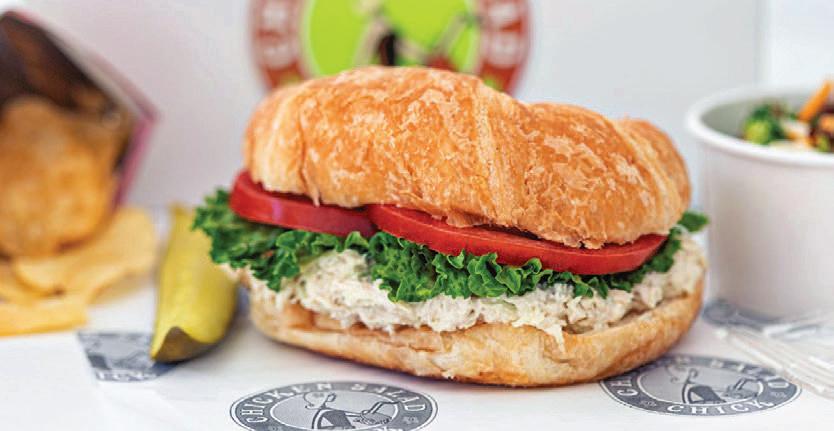
embraced digital technology to improve the customer experience with nine different ways that customers can engage with the brand in person or digitally. The brand is on track to be the first billion-dollar brand in the Focus Brands’ portfolio and just opened its 500th restaurant. With strong unit sales and costs to build an endcap at $1.3 million, this brand will pay off as one of the Best Franchise Deals for 2022.”
“Recently underwent its most significant evolution of the brand since its birth in the late 1980s. Significant and steady growth through the years Thirty-three of the 505 units are company owned and all are located in the U.S. Recent accelerated growth also fueled by the prioritization of investment on of enhanced customer experience. This evidenced by major improvements to its mobile app, loyalty program, and tableside ordering. Average EBITDA of at least $100,000 on average revenues of at least $1 million.”
Founded in 1989, the Focus Brands chain has enjoyed a modern evolution of late. The main target: prioritization of the dining experience across multiple touchpoints. For instance, McAlister’s poured resources into its mobile app and loyalty offerings, and also launched tableside ordering in early 2021. Now, guests can sit down at a table, pull out their mobile device, and skip the line. True to its classic model, employees still run the food out to the table. McAlister’s currently boasts nine different ways for customers to engage with the brand, whether in-person or digitally. And its loyalty program eclipsed a million users last year.
On the development front, McAlister’s announced the grand opening of its 500th sore in October 2021 (Dickson, Tennessee). Across the year, it opened 30 new locations, signed 67 agreements, and, to the Council’s proclamation, is on track to become Focus’ first billion-dollar brand by 2024.
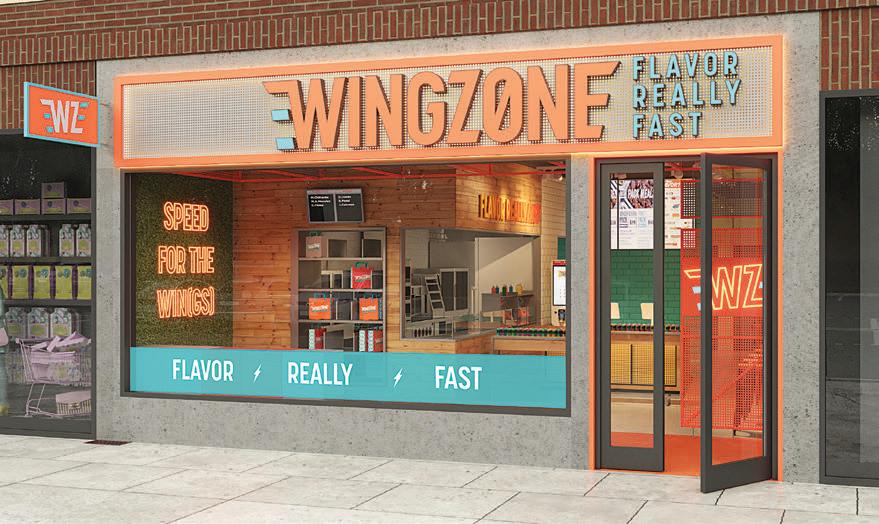
NUMBER OF U.S. FRANCHISE UNITS: 31
NUMBER OF U.S. TOTAL UNITS: 32
TOTAL SYSTEM-WIDE SALES: $34,000,000
FRANCHISE AVERAGE-UNIT VOLUME: $1,001,000
TOTAL AVERAGE-UNIT VOLUME: $1,001,000
FRANCHISE FEE: $30,000-40-000
ROYALTY: 6–7 percent
RENEWAL FEE: $10,000
MARKETING FEE: 3 percent
TOTAL START-UP COSTS: $450,000–$500,000
FRANCHISEE INCENTIVES: Multi-unit (three or more) development franchise fee discount of $10,000 per unit; 15 percent veteran’s discount
“ FEELS LIKE A GOOD FIT FOR A LARGE DEMOGRAPHIC OF HEALTH CONSCIOUS AND ON-THE-GO PROFESSIONALS AND PARENTS.”






“Another brand built for the post-COVID world that predates that need by a great many years. Today, Wing Zone has an average sales-to-investment ratio of at least 2:1. Highly skilled restaurant management team. Major investments in technology, operating efficiencies, small footprint, with a streamlined menu that puts the focus on its best-selling wings and tenders to in-shop curated music and a revolutionary scent strategy. Wing Zone has transformed the way customers experience the brand. Trimmed down cook times, cubbies designed for quick, grab-and-go pickup and delivery options, the fast-casual brand offers an efficient, modern take on chicken wing consumption.”
“While only 31 units strong, Wing Zone fits a quick-service model poised for success with high AUV of more than a million on a low-price tag to build. The small footprint will make real estate metrics more desirable and their embrace of technology ranging from robotics on the operations side and innovation on the delivery side makes this brand one to watch.”
THE SKINNY:
Wing Zone made headlines in May when it announced a partnership with Miso Robotics to make “Flippy 2” a part of its standard build for all future locations. It claimed to be the first fast casual to spec food robotics into its operations at this level. The partnership arrived in parallel with the company’s recently announced Wing Zone Labs— a franchisee that plans to support the chain’s overall corporate innovation efforts. Wing Zone Labs will deploy Flippy at its 20 forthcoming Southern California locations to handle the frying station for chicken wings and other items.
Wing Zone, created in 1993, was acquired by Capriotti’s Sandwich Shop in early 2021. And growth has followed. In Q1 of this year, the combined entities signed deals for 42 shops. A new store design— Wing Zone 2.0—arrived earlier in the year as well. Wing Zone bolstered support with a new VP of operations, three franchise business coaches, two new members of its real estate management team, and appointments to senior director of training and quality assurance. For all of 2021, Wing Zone signed agreements for 91 shops. The chain announced its forthcoming flagship in North Las Vegas in late June. Wing Zone plans to open several locations in the Las Vegas metropolitan area in 2022 and touts more than 100 commitments nationwide.
NUMBER OF U.S. FRANCHISE UNITS: 102
NUMBER OF U.S. TOTAL UNITS: 102
TOTAL SYSTEM-WIDE SALES: $139,200,000
FRANCHISE AVERAGE-UNIT VOLUME: $1,051,353
TOTAL AVERAGE-UNIT VOLUME: $1,051,353
FRANCHISE FEE: $50,000
ROYALTY: 6 percent
RENEWAL FEE: 40 percent of franchise fee, $20,000
MARKETING FEE: 2 percent
TOTAL START-UP COSTS: $504,600–$1,522,800
SIZING UP FROM THE SIDELINES:
“Fast comfort food at an affordable price from a brand with a history back to the 1950s will have a consumer base in any economy. Well-served by keeping the menu simple, yet taking a cue from sister brand Hurricane Grill to add popular wings as a menu option [as Yum! did with Pizza Hut and WingStreet] may be a good play. Franchisees have the opportunity to own other FAT Brands as a portfolio play to lock down more favorable real estate and anchor locations.”
Fatburger franchisees have the ability bump revenue streams via cobranding with Buffalo’s Express. They can also opt to have a virtual wing chain with another concept in FAT Brands’ portfolio, Hurricane Grill & Wings. It gives operators flexibility to increase menu mix at a minimal cost, with the brand operating out of the back of the house. Also, to the Council’s note, FAT Brands’ fast-scaling and diverse portfolio create whitespace for owners to fill multiple voids within markets. Franchisees don’t have to start with a single brand or location—they can come into the system and choose multiple options, the company says. In terms of how that breaks down, FAT Brands spent nearly $900 million across five months in 2021 to spread its base to 17 concepts at the time, 2,300 franchised and company-run units, and systemwide sales of roughly $2.3 billion. It operated in 40 countries and 48 states with a group of 900 franchisees, half of which are multi-unit operators.
Earlier in the year, FAT Brands said it had a pipeline of roughly 800 restaurants set to open in the next four or five calendars. This includes all corners of the industry, from Johnny Rockets to Fazoli’s, Native Grill & Wings, Twin Peaks, and Round Table Pizza (among others).

In May, FAT Brands announced its latest deal, bringing Nestlé Toll House Café by Chip into the fold for an undisclosed figure. Arguably the bigger point, however, was FAT Brands’ move to rebrand stores to Great American Cookies, which would tack about 85 stores onto a 370-unit dessert chain.
FAT Brands acquired Great American Cookies, along with Round Table Pizza, Marble Slab Creamery, Pretzelmaker, and Hot Dog on a Stick in summer 2021 for $442.5 million when it purchased Global Franchise Group.
NUMBER OF U.S. FRANCHISE UNITS: 55
NUMBER OF U.S. TOTAL UNITS: 57
TOTAL SYSTEM-WIDE SALES: $28,776,728.06
FRANCHISE AVERAGE-UNIT VOLUME: $571,932
TOTAL AVERAGE-UNIT VOLUME: $504,854.88
FRANCHISE FEE: $30,000
ROYALTY: 5 percent
RENEWAL FEE: $7,500
MARKETING FEE: Minimum $500
TOTAL START-UP COSTS: $240,800–$450,600
SIZING UP FROM THE SIDELINES:
“Like Zaxby’s, commitment to cultural values is a huge plus. Phenomenal emerging brand that’s eclipsed 50 locations largely because of the industry leading product—Grade A açaí made fresh in store every day and homemade granola that truly is the secret sauce.”
THE SKINNY:
The granola referenced by the Council can’t be overstated. It’s only available for purchase at SoBol locations. Founder Jason Mazzarone hails from a culinary school background and came up with the idea for the brand after visiting an açaí bowl stand after surfing in San Diego. The chain has relied on a franchise-heavy model since 2016. It’s supported the effort with franchising development managers, operations specialists, marketing managers, and others. Last year, Mazzarone, who grew up around his family’s business, an Italian ice shack founded by his grandfather (where he first began selling the purple bowls), said 2022 was shaping up to be the company’s largest development run yet, with plans to open nearly 20 more venues. The simple menu helps cut back waste and improve profitability.
“ THEIR EMBRACE OF TECHNOLOGY RANGING FROM ROBOTICS ON THE OPERATIONS SIDE AND INNOVATION ON THE DELIVERY SIDE MAKES THIS BRAND ONE TO WATCH.”
built for the post-COVID world. Diverse offerings in both traditional and non-traditional models. Average EBITDA of at least $100,000 on average revenues of at least $1 million. Part of the Inspire Brands family of brands, some very rich incentives are being offered by Inspire, for all stores opened between now and 2025.”
THE SKINNY:
NUMBER OF U.S. FRANCHISE UNITS: 3,232
NUMBER OF U.S. TOTAL UNITS: 3,534
TOTAL SYSTEM-WIDE SALES: 5,835,448,575
FRANCHISE AVERAGE-UNIT VOLUME: 1,708,000
TOTAL AVERAGE-UNIT VOLUME: 1,681,000
FRANCHISE FEE: $45,000
ROYALTY: 5 percent
RENEWAL FEE: 20 percent of then current license fee (currently would be $9,000 for traditional Drive-Ins and $450/year of term for nontraditional restaurants)
MARKETING FEE: 3.25 percent (minimum) of gross sales traditional and 1.85 percent non-traditional
TOTAL START-UP COSTS: $1,768,000–$3,543,000
FRANCHISEE INCENTIVES: New and developing markets incentive. The NDM Incentive is designed to introduce and increase the presence of the Sonic brand in certain markets that we designate as new or developing markets. If you qualify and wish to participate in the NDM Incentive, you must sign a development agreement to develop one or more Sonic Restaurants on or before March 31, 2023. Under the NDM Incentive, you will pay the full initial license fee when you sign the license agreement, but we will credit $30,000 from the initial license fee you paid toward the royalties owed under that license agreement, provided you submit development costs to us within 120 days of opening the restaurant, and build the restaurant in the design, to the specifications, and at the location we approve. Under the NDM Incentive, Sonic may reduce your royalty fee based on when your restaurant opens as described in Item 6.
CORE MARKETS INCENTIVE: The CM Incentive is designed to continue growing the presence of the Sonic brand in certain markets that we designate as core markets. If you qualify and wish to participate in the CM Incentive, you must sign a development agreement to develop one or more Sonic Restaurants on or before March 31, 2023. Under the CM Incentive, you will pay the full initial license fee when you sign the license agreement, but Sonic will credit $30,000 from the initial license fee you paid toward the royalties owed under that license agreement, provided you submit development costs to us within 120 days of opening the restaurant, and build the restaurant in the design, to the specifications, and at the location we approve. Under the CM Incentive, Sonic may reduce your royalty fee based on when your restaurant opens as described in Item 6.
2022 PULL-FORWARD STRATEGIC INCENTIVE. If Sonic and you already signed a pre-existing development agreement with a development schedule that requires you to open a restaurant in 2023 or later, and you sign a license agreement for and open that restaurant on or before December 31, 2022, or if you the development schedule requires you to open a restaurant in 2024 or later and you sign a license agreement for and open that restaurant on or before December 31, 2023, then you are eligible for our “2022 Pull-Forward Strategic Incentive” program. Under this program Sonic will credit $30,000 from the initial license fee you paid towards the royalties owed under that license agreement, provided you submit development costs to Sonic within 120 days of opening the restaurant, and build the restaurant in the design, to the specifications, and at the location Sonic approves. As described in Item 6, you also will pay reduced royalties based on when your restaurant opens.
“For a brand with such rich history, Sonic is one of those restaurants
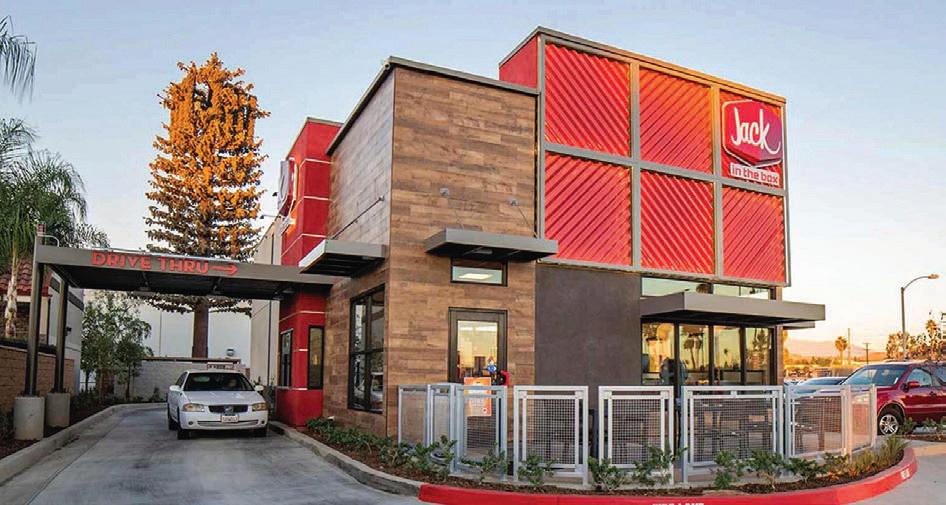
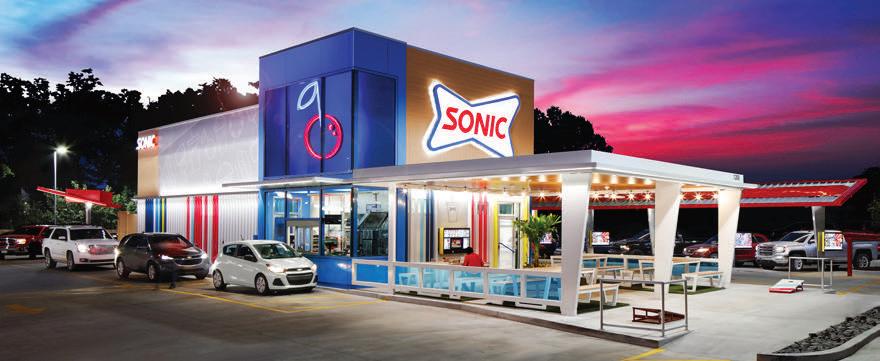
Without much debate (see Council comment), Sonic was uniquely positioned to thrive over the last couple of years. Simply, the brand’s classic pull-up/drive-thru model met the contactless need of customers across the country. As “car picnics” became cool again, Sonic was already embedded. And it’s played into those strengths of late with guest-centric marketing campaigns and continued tech innovation (the ability to tip carhops) that’s worked to strengthen convenience and remove friction across multiple channels. Of Inspire’s fleet of brands, Sonic reported the highest two-year same-store sales jump last year at 25.8 percent. The chain’s five distinct dayparts are now being served across one of the industry’s most flexible footprints, too. This includes the “Delight” prototype, which features docks for parked cars and a drive-thru, as well as a covered, string-lit outdoor patio complete with lawn games. Sonic’s mobile order-ahead capabilities and rewards program allows consumers to control their experience in a way few chains can rival. It’s helped alleviate drive-thru capacity as Sonic, essentially, boasts a built-in curbside footprint that guests have been using for decades. Like Rusty Taco, Sonic franchisees also have access to the full breadth of Inspire’s collective resources.
NUMBER OF U.S. FRANCHISE UNITS: 2,055
NUMBER OF U.S. TOTAL UNITS: 2,218
TOTAL SYSTEM-WIDE SALES: $4,077,467
FRANCHISE AVERAGE UNIT VOLUME: $1,800,191
TOTAL AVERAGE UNIT VOLUME: $1,858,441
FRANCHISE FEE: $50,000
ROYALTY: 5 percent
MARKETING FEE: 5 percent
TOTAL START-UP COSTS: $1,697,000–$2,694,600
FRANCHISEE INCENTIVES: Under current development incentive for new franchisees, executing at least a three-unit development agreement, the royalty (which is currently 5 percent of gross sales) will be reduced to 1 percent of gross sales for the first year, 2 percent of gross sales for the second year, 3 percent of gross sales for the fourth year, and 5 percent for all subsequent years.
For existing franchisees (operating as of March 23, 2021) who sign a multi-unit development agreement before October 1, 2023, the brand offers the following incentives: Zero percent royalty for years one to three, 2 percent of gross sales for Year 4, 3 percent of gross sales for year 5, 4 percent of gross sales for Year 6; and 5 percent for all subsequent years.
“The new multi-unit development agreement incentives are very enticing. Beyond that, the recent acquisition of Del Taco gives current/future excellent co-brand and portfolio diversification options at a fraction of the typical cost. Experienced/high character corporate/development team also a huge plus.”
“ SONIC IS ONE OF THOSE RESTAURANTS BUILT FOR THE POST-COVID WORLD.”
Jack in the Box’s incentive program is intended to drive dynamic growth, the company says, as it reduces royalties to help franchisees during formative years. Expansion is picking up. In Q1, the classic chain reported more than two dozen multi-unit deals, which added 98 commitments to its pipeline. The chain last quarter said it’s signed 53 development agreements for 218 restaurants since launching a revitalized franchise program the previous summer—the highest number of commitments in its 71-year history. AUVs recently topped $1.8 million for the first time as well.
Jack in the Box’s reimage program, which officially launched in Q2, has rolled forward. As of May, 12 corporate units were already in the design and permitting phase, and 136 franchise restaurants were approved. In Yuma, Arizona, the parking lot doubled in size to accommodate a double drive-thru and fully remodeled dining area. In the first month, the location saw a 25 percent lift in same-store sales and exceeded $100,000 in sales per week, driven mostly by transactions. To put it into context, that equates to an annualized AUV of more than $5 million. The chain is providing capital incentives to encourage operators to join the remodeling program.
Jack in the Box, as mentioned, acquired Del Taco in March for $585 million. Currently, roughly 49 percent of Del Taco’s footprint is company-owned, but Jack in the Box is finalizing a go-to-market plan to refranchise a majority of those units.

NUMBER OF U.S. FRANCHISE UNITS: 86
NUMBER OF U.S. TOTAL UNITS: 87
TOTAL SYSTEM-WIDE SALES: $80,000,000-plus (2022 projection)
FRANCHISE AVERAGE-UNIT VOLUME: $854,000
TOTAL AVERAGE-UNIT VOLUME: $854,000
FRANCHISE FEE: $15,000
ROYALTY: 6 percent
RENEWAL FEE: $5,000
MARKETING FEE: 2.5 percent
TOTAL START-UP COSTS: $246,000–$612,000
FRANCHISEE INCENTIVES: 10 percent veteran discount and multi-unit operators reduced franchise fees
“Family values with huge upside—the 80-plus unit chain expects to eclipse $80 million in 2022 systemwide sales. Also, it’s not just your run-of-the-mill sub shop. Each PrimoHoagies location serves up old school Italian classic sandwiches on top of award-winning seeded bread. In a crowded category, the quality of the sandwiches, especially that bread, stands out.”
PrimoHoagies closed 2021 with 19 new franchise agreements, including the chain’s Texas debut (eight signed in the Lone Star state alone) Otherwise, PrimoHoagies expects to continue expanding in Colorado (five locations), in addition to five new franchises in North Jersey and one in suburban Philadelphia. The signed agreements brought the total number of new secured locations to 61 in 2021.
PrimoHoagies is hardly a newcomer. The 30th anniversary of its
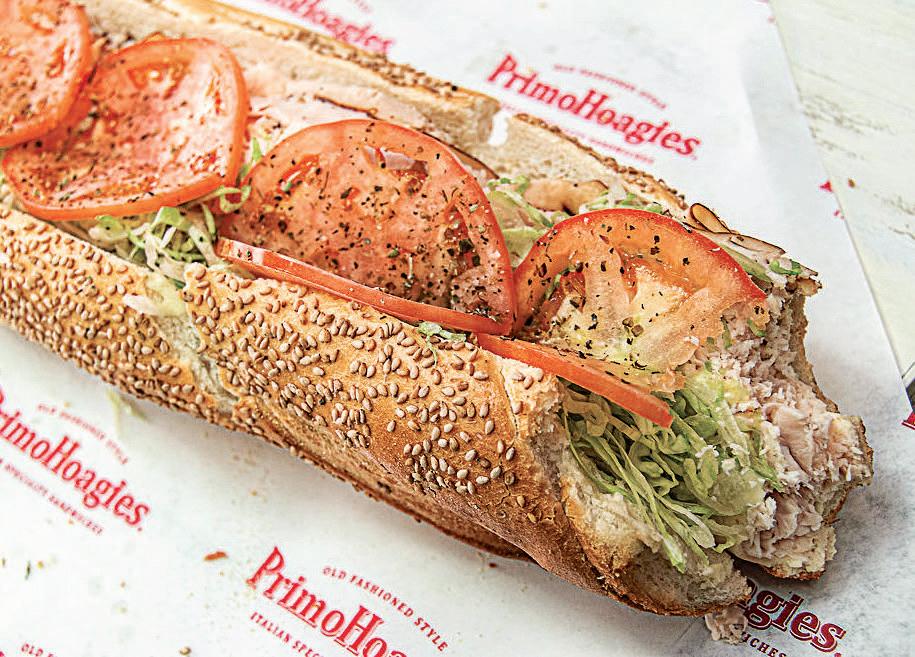
original South Philadelphia location arrived over the summer. With current locations operating in Delaware, Florida, Maryland, New Jersey, North Carolina, Pennsylvania, and South Carolina, the past two years brought fresh waves of development that should carry the chain into the triple-digit club in short order. The menu features a wide variety of cold and hot hoagies, cheesesteaks, wraps, vegetarian options, sides, and more. Catering is also available for special events, holidays, gamedays, and corporate luncheons.
NUMBER OF U.S. FRANCHISE UNITS: 49
NUMBER OF U.S. TOTAL UNITS: 51
TOTAL SYSTEMWIDE SALES: $67,311,196
FRANCHISE AVERAGE-UNIT VOLUME: $1,653,026.58
FRANCHISE FEE: $40,000
ROYALTY: 6 percent
RENEWAL FEE: $10,000
MARKETING FEE: 2 percent
TOTAL STARTUP COSTS: $377,000–$968,100
“The ghost kitchen and virtual space has flooded with opportunistic players over the course of COVID. But few chains boast the equity and experience of Dog Haus for prospective operators hoping to cash in. Beyond being early adopters, there’s a clear commitment to supporting the model and to putting their name behind it—the virtual brands say ‘powered by Dog Haus.’ Low startup costs and agility, with sizable AUVs and tech systems, offers a great buy for an operator looking to be on the cutting edge of a fast casual with a lot of whitespace.”
THE SKINNY:
When operators sign up with Dog Haus, they can franchise multiple brands—all for the same franchise fee. This means multiple platforms and revenue streams out of a single restaurant and the same inventory. Dog Haus was one of the first franchises to take the delivery-only route when it partnered with Kitchen United in 2019. That world has only expanded. As the brand touts, its approach to virtual brands throughout COVID and into the future hasn’t been to complicate the back-of-the-house with products and menus that don’t fit its approach. Rather, Dog Haus continues to develop brands that accentuate what it already offers, just packed in platforms that customers can quickly identify. For instance, Bad Mutha Clucka for chicken and Bad-Ass Breakfast Burritos (for burritos, naturally), as well as Plant B, Jailbird, and Big Belly Burgers. Dog Haus runs these under the umbrella name of Absolute Brands. The flagship Dog Haus concept specializes in gourmet hot dogs, burgers, chicken, and craft beer. q



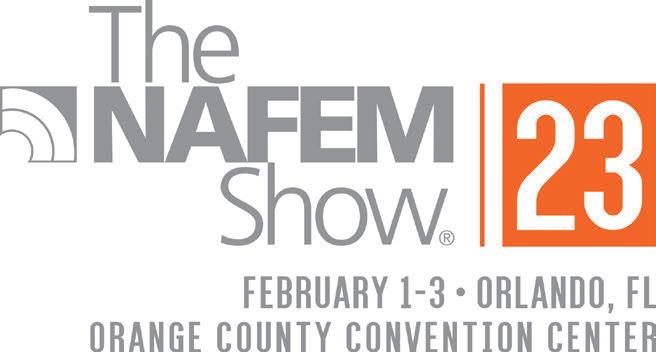
The country’s largest restaurant chain is rethinking its approach to growth. It all begins with a look inside the system.
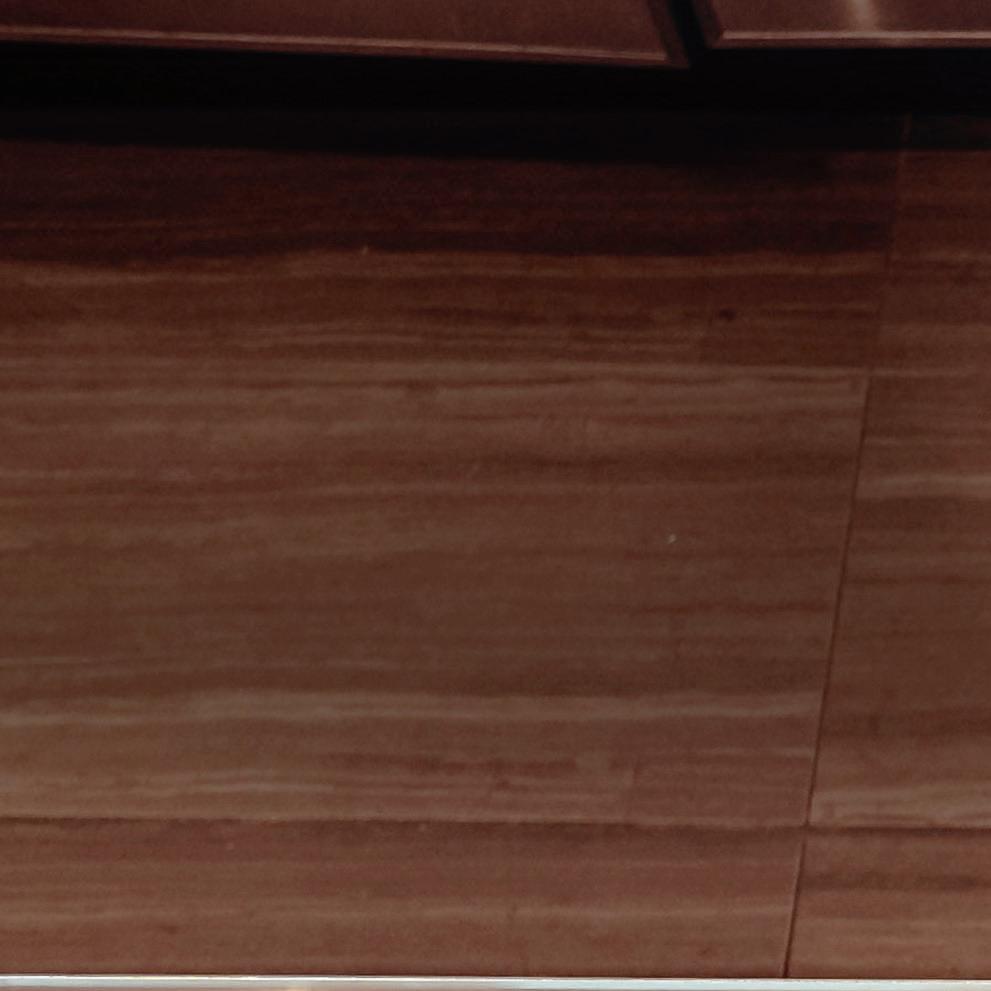

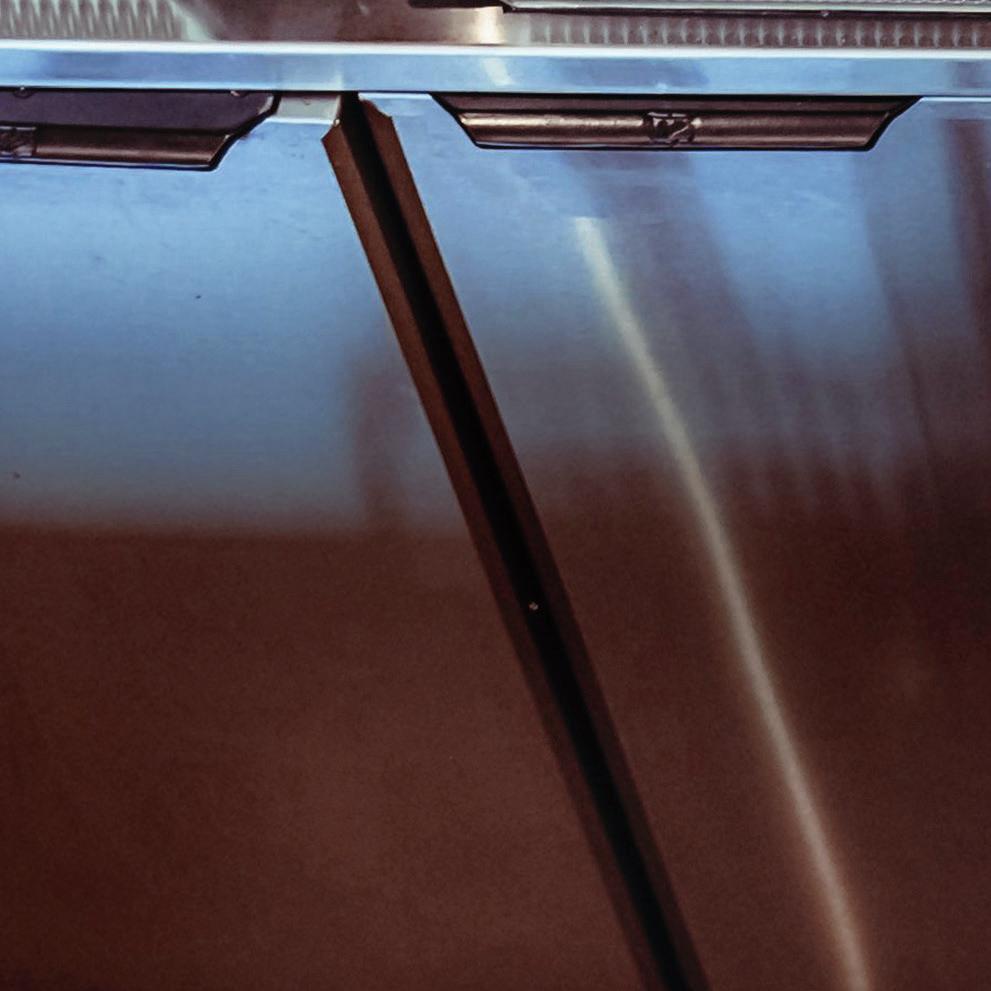

 / BEN COLEY
/ BEN COLEY

SINCE SUBWAY BEGAN FRANCHISING nearly 50 years ago, the company has grown with a singular focus on expansion, says Steve Rafferty, senior vice president of development.



And for decades, the strategy worked. Subway not only became the largest restaurant chain in the U.S., but the entire world. Rafferty, who joined the brand in September 2021 after long stints at Yum! Brands, Burger King, and Dunkin’ Brands, says the sandwich giant is quite proud of that history and legacy, but the company also recognizes it’s time to evolve.
Over the years, Subway became too large, and now, the restaurant is going through a major rationalization. The 100 percent franchised concept finished 2021 with 21,147 U.S. outlets, a net decrease of 3,650 units versus 2019—that number alone would be among the top 15 biggest fast-food chains in America. McDonald’s recently surpassed Subway as the most ubiquitous restaurant in the world, but Subway still holds the top spot in the U.S. by more than 5,500 stores.



To optimize its presence in the U.S., Subway is ridding itself of a development-first mindset and opting for an experience-oriented approach. To Rafferty, that means focusing on operational excellence and ensuring locations are in the right image, location, and format to best meet guests’ needs.
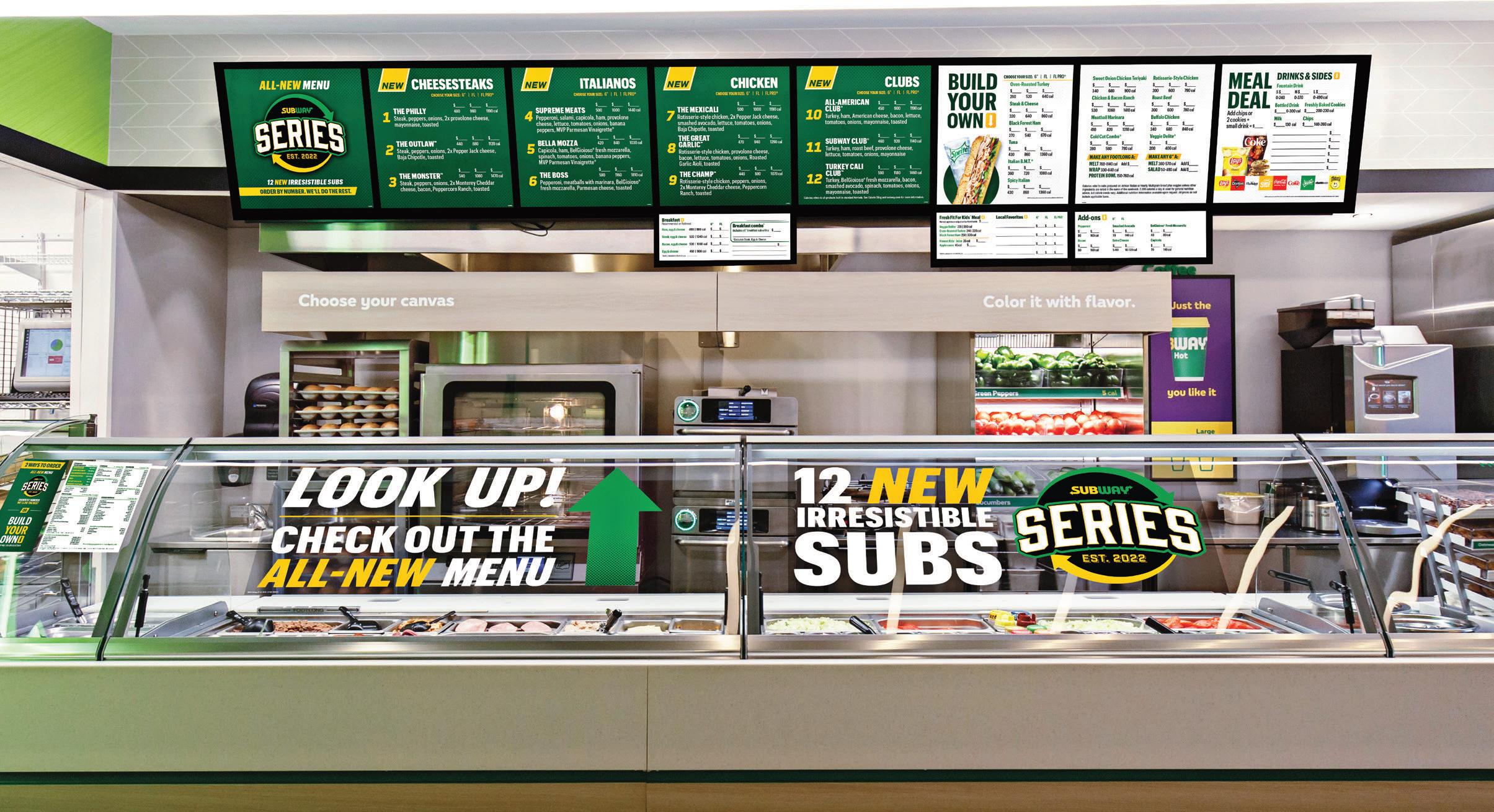
“It’s all about delivering Subway in a way that our guests really want to use us and taking it away from just that sort of singular focus on development,” Rafferty says.
Subway was built upon commitment and investment from thousands of small franchisees who own one or two restaurants. Rafferty says those operators will always be part of the brand, but as the chain optimizes itself, it feels there’s a better opportunity to team up with multi-unit partners.
The development executive believes that’s the true unlock for Subway’s next level of growth, and it’s a two-pronged strategy. Among the existing base, there are stories of franchisees expanding from one or two stores to 10–20 or even 50 in some cases, Rafferty says. Subway is pushing for more of those occurrences, with young, entrepreneurial franchisees acquiring more from those operators approaching the sunset of their careers.
At the same time, Subway is seeking greater engagement from new franchisees. For a long time, the brand prohibited operators from owning any other concept. Rafferty can’t speak to why the company reached that decision decades ago, but he does know exactly why it’s time to move on. The industry veteran notes many in Subway’s leadership team have worked at other restaurants and have experienced success, and one of the most common drivers of those triumphs is diverse perspectives
from operators, including demonstrated expertise in growing a brand and building in a particular market.
“I like to think that they’ve sort of seen the movie, and they wrote the book in some cases on how to scale a brand in a particular market,” Rafferty says. “They bring that operating expertise, building great teams to deliver a great guest experience, they bring development expertise. And development can be very different market to market, but if we’ve got somebody who’s been successful scaling a brand like ours in ‘Anytown, USA,’ we can have some confidence that they’re going to be able to do the same with our brand.”
Upcoming development is no longer about the numbers, Rafferty explains. It’s about improving what Subway already has. Meaning, the most likely way for large multi-unit operators to enter the business is through acquisition and not building a certain number of restaurants. After purchased units are appropriately remodeled or relocated to better trade areas and performing at a higher level, then there can be talks about expanding the portfolio through new unit development.
“What we are doing is bringing all the great tools that are available to us today through market planning and data science to identify what is the best opportunity in a particular market or in a particular trade area when you’re as established as we are,” Rafferty says. “We’ve got to really think hard about relocating some assets where the trade area you may have moved on a little bit. We use the experience of our teams and our franchisees—I call that sort of the art of it—but we have science to it. So it’s a mix of art and science.”














Rafferty feels Subway’s franchise offering is one of the more flexible deals in the quick-service segment. It’s a fairly simple operation since no fryers, grills, or broilers are involved, and that allows the chain to fit into all types of traditional and nontraditional venues, like airports, hospitals, gas stations, travel centers, and more. In terms of drive-thru—an order channel that skyrocketed in popularity during the pandemic—Rafferty says there’s ample opportunity to grow from the 2,000 currently in the system because of the food’s portability.
Recently, a growing number of quick-service concepts have ventured into off-premises-only restaurants in traditional locations. Some ( i.e. Wingstop and Panera) have taken it a step further and debuted digital-only units in which there are no cashiers and customers must order via the website/app or through a third-party delivery platform.
Subway is aware of those trends and impressed by them, but the chain isn’t ready for that type of prototype just yet.
“We’ll be testing some of that, but it’s not something that we see as the largest opportunity in front of us,” Rafferty says. “It’s a big one, but we think we have an opportunity to get better and better at drive-thru in a traditional way perhaps first as we go see what we can learn by testing different formats, potentially, including the digital-only pickup model.”
In nontraditional spaces, Subway is in the early innings of testing unattended retail solutions. In 2021, it began piloting grab-and-go sandwiches inside different channels like casinos, gas stations, and convenience stores. That experiment has grown to 400 locations. Subway is also tinkering with contactless and cashless smart fridges filled with freshly made sandwiches, an idea prompted by franchisees.
“The partner says, ‘Hey, how can we maximize our sales even in the hours when we’re not open?’” Rafferty says. “We had some success with limited trial of this in international markets, in some Asian markets specifically. But closer to home, as I said, travel plaza partners have really latched on to this and it’s really meeting the needs of our customers who are our franchisees who in turn want to meet the needs of our consumers.”
Development is one of several ways leadership is trying to build a better Subway, Rafferty notes. In July 2021, the brand rolled out the largest menu launch in company history—a major first step in its multi-year transformational journey.
More than 20 upgrades—11 new and improved ingredients, six new or returning sandwiches, and four revamped signature sandwiches—hit outlets nationwide. The launch was supported with ad campaigns featuring some of the highest-profile sports stars, including Serena Williams, Steph Curry, Tom Brady, and Charles Barkley. Additionally, Subway upgraded its app to reduce friction and partnered with DoorDash to launch delivery through its app and website.
The menu helped Subway beat 2021 sales projections by almost $1.4 billion and reach its highest AUV since 2014. About 75 percent of the U.S. system—more than 15,000 locations— experienced a 7.5 percent increase in same-store sales versus 2019. In Q1 2022, the same number of restaurants witnessed comps grow 8.2 percent compared to 2019.
The rollout and subsequent TV ads placed Subway back into the consideration set of some multi-unit candidates because it showcased how committed the brand is to becoming a better version of itself. For existing franchisees who were hesitant to make further investments coming out of the pandemic, sales results encouraged more to pursue remodels.
This July, Subway unveiled another slate of menu changes, called “Subway Series.” It’s a lineup of 12 new signature sandwiches, ordered by food category and number, i.e. (Cheesesteaks: No. 1 The Philly, No. 2 The Outlaw; Chicken: No. 7 The MexiCali, No. 8 The Great Garlic). Instead of picking ingredients and toppings, customers are able to say a sandwich number or name and whether they want a half-foot or foot-long sandwich. Subway said the latest release was the result of six decades worth of culinary expertise and experimentation of more than 100 recipes.
“It reminds people about Subway and it brings guests back,” Rafferty says. “Maybe they haven’t visited us for a while and it reminds them of what they love about Subway. And it creates some repeat business that our franchisees are thrilled to see.”
About 9,000 stores have committed to Subway’s “Fresh Forward” design, which includes LED lighting, new floor coverings, containers, tables, colors, and chairs. That’s thanks in part to a grant program in which the chain promises to contribute and invest alongside franchisees. As of June, 4,500 of those restaurants completed the remodel. The remaining locations have ordered and paid for equipment and are just waiting to receive everything.
“We had one sandwich artist, when she walked into a remodeled Subway, she said, ‘Wow, it looks like an Apple store,’” Rafferty says. “That’s a bit of an overstatement from my perspective, but I sort of get what she’s talking about, right? It is a very different look than what our guests might remember us as having been in their experience. It’s very bright. It’s very appealing. It’s very clean. It just looks modern, and we think a great expression of what the Subway brand really can be.”
Every week, members of the leadership team meet with franchisees to learn about what’s working and what needs to be done differently, whether that’s operational setup behind the counter or how certain products impact sandwich artists. Rafferty and his team look into the future knowing the best ideas will come from the field.
On a broader scale, Subway distributed a global franchisee satisfaction survey in 2020—the first one it had done in a long time, if not ever, Rafferty says. The information established a baseline for the brand. The chain received results from its second survey in April, and found franchisees rated it higher in all key measures compared to two years ago, including leadership, support, core values, and having a clear vision for the brand.
“We know that we’ve got a long way to go to continue meeting the needs of our franchisees and in turn our guests, but we’re pleased with the sort of interim checkpoint that says, you know what, we’re headed in the right direction and our franchisees are telling us that. That’s really important to us,” Rafferty says. q





There is no single, clear-cut strategy for brands to address all environmental, social, and governance (ESG) issues. ESG has always been crucial for brands to consider—and is perhaps more relevant than ever in the current moment—but the plethora of areas that it encompasses can make developing a solid plan for addressing ESG a murky, overwhelming process. But at its core, ESG is about consumer trust. While the label applies to a number of concerns from employee wellness, to community involvement, to sustainable operations, it is most closely associated with how customers perceive brands.




“[ With ESG we look at] themes and topics around the environment, social issues, governance, and general trust—those come together to form a brand’s purpose,” says Bradley Taylor, senior strategist with Converseon, a conversation intelligence company that analyzes consumer conversation using artificial intelligence (AI) “And what jumps out to us about ESG in the industry is that there is a lack of trust in general, for [quick-serve] restaurants.”
Since the beginning of 2021, Converseon has used its AI technology to monitor and assess conversations surrounding customer experiences with several brands, including over a dozen quick-service chains, across social media channels, producing a report with its findings at the end of each quarter. Using a proprietary consumer memory metric, Converseon’s technology filters social media posts and reproduces survey-like results by incorporating consumer “memory” ( lasting perceptions of an experience with a brand) into the rather immediate comments sourced from social platforms. While online comments vary widely in subject and tone, Converseon’s technology is able to extract clearly defined topics and themes from unstructured feedback.
The company’s recent data gathered around quick-serve brands is broken into specific ESG categories—environmental responsibility, customer experience, social responsibility, corporate citizenship, and trust—and then split into further, more specific areas of interest for targeted brand feedback. Converseon has used the data to produce a heatmap showing areas of immediate attention for brands. A score for each brand in each category is produced from data and then placed along a scale from negative 100 to plus 100 (and red
to green); Taylor reports lower scores for customer perception of quick-service brands’ social justice efforts than for environmental initiatives.
“The industry as a whole is actually doing very well when it comes to sustainability, recycling, pollution, and reducing emissions,” he says. “We can contrast that with social issues—layoffs, support of the LGBTQ community, anti-racism—that’s where the industry really struggles. That is really where the struggle is happening, where people are shouting about it, where people are disappointed and upset with the industry, but in terms of the environment, there is progress.”
Still, while brands’ efforts surrounding social issues might garner less satisfaction than those same companies’ approaches to sustainability, the environment still holds the most potential for loss (or gain) of revenues. For quick-service brands in particular, Converseon finds that environmental practices typically generate or detract the most from revenues (about $140 million per quarter) with social justice causes detracting or adding around $110 million per quarter. This indicates a key area for concepts looking to develop more robust ESG strategies or improve customer
perception of efforts around these concerns. The industry overall shows low scores in the “trust” category of Converseon’s study, and environmental efforts have potential for bolstering consumer faith in concepts.
Widespread consumer concern over sustainability efforts was also indicated in a recent survey of 7,000 global consumers conducted by Censuswide and Deliverect, a delivery management platform, and released in April.
The survey focused on customers’ sustainability expectations as related to off-premises orders and found that, while 65 percent of customers find sustainable dining to be more expensive, almost half (43 percent) are willing to pay more for visible sustainability efforts on the part of brands—even efforts like curbing food waste that, ultimately, save revenues for the brand itself. “We think consumers always want more, but actually in this case, it’s sometimes less is more,” Zhong Xu, CEO and cofounder of Deliverect, says. “Consumers hate waste. Which is actually good news, right? Inflation and food costs are rising for restaurants; maybe instead of increasing your prices, because customers are very sensitive about pricing, how about you make it a bit more sustainable, and make your portion size 10 percent less?”
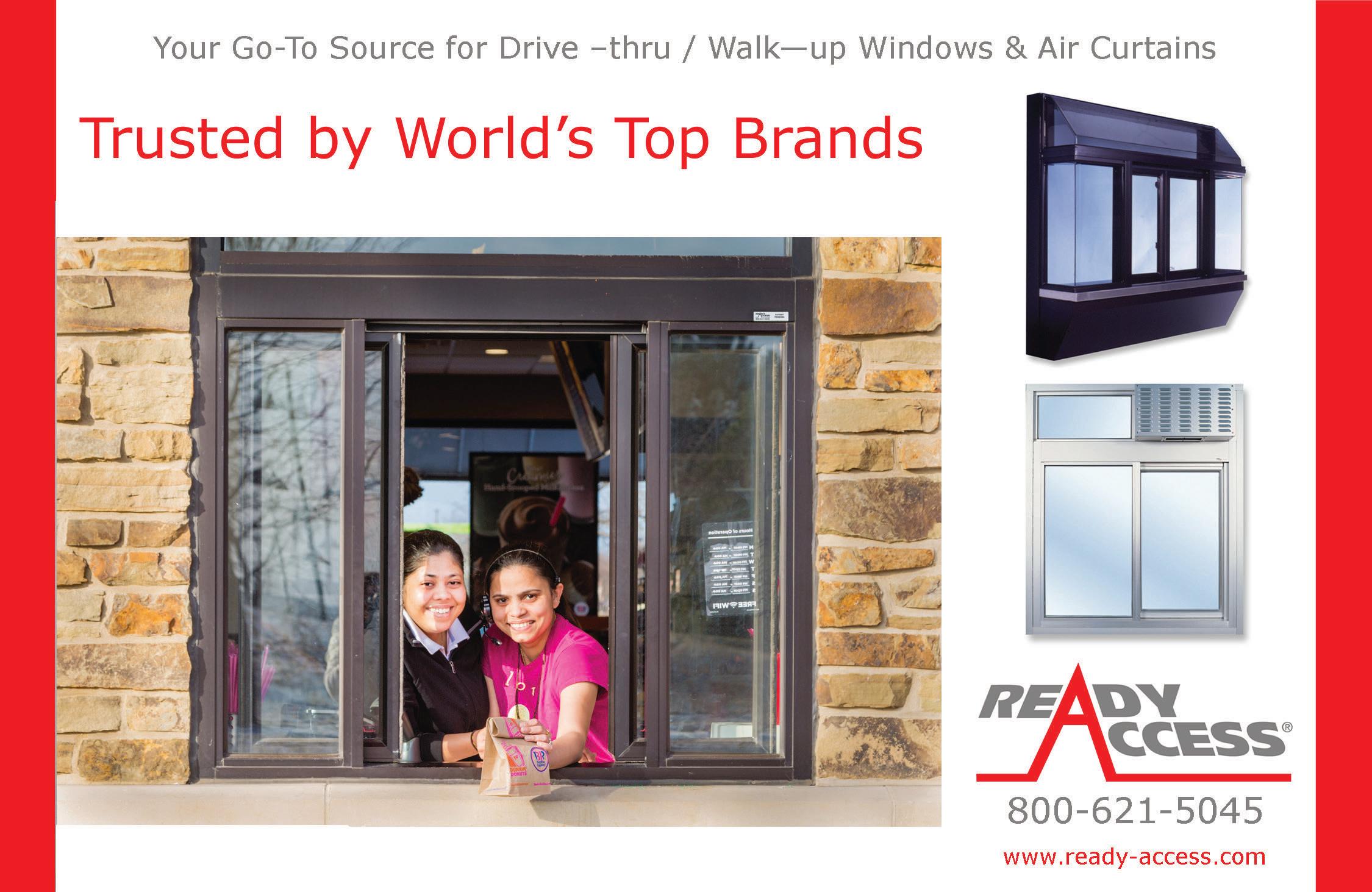
Deliverect’s survey found that more than 50 percent of customers are frustrated by large amounts of food waste, and see food waste as an issue that will stop them from ordering from an offending restaurant twice. An even greater percentage (63 percent) of sur-
veyed customers reported that sustainable packaging is important to them, with more than half preferring to order from a brand that removes excess packaging from its orders.
Xu recommends brands research sustainability strategies that are “low threshold” for the consumer, recommending efforts that add marginal price increases to menus. But equally impactful to new initiatives is brand communication about efforts already in place.
While consumers surveyed by Deliverect and Censuswide indicated they perceived Chick-fil-A, Panera Bread, and Starbucks to be the most sustainable companies based on in-store and delivery experiences, a majority, 56 percent, feel concepts as a whole are not transparent about sustainability practices.
Furthermore, over half of the consumers reported a desire for restaurants to better show how they are in the process of making orders more sustainable. While companies should steer clear from overstating efforts—Converseon’s Taylor warns that this could result in harmful consumer perceptions of brands “greenwashing” or purposefully disseminating misleading information and could further deplete consumer trust—a focus on a concept’s core values can help improve brand-to-consumer communication around ESG.
“It’s not just about packaging, it’s about storytelling,” Xu says. “If you make the effort to tell your brand’s story, customers will care.” q
One of the historic barriers to breaking into the restaurant industry is securing capital to get off the ground. The cost of equipment, leasing or purchasing a building, and properly staffing a brick-and-mortar fast casual typically runs between $250,000–$400,000, according to Forbes.

At its base level, this is what’s fueled much of the ghost kitchen movement, says John Meyer, CEO of Ghost Financial. It provides a starting point for operators who don’t have the financial safety net larger brands have access to.
“Ghost kitchens are revolutionary in that they have lowered the barrier to entry for foodies with a dream by taking the cost and timeline down to start a restaurant from $500,000 and an entire year, to $25,000 and 30 days,” he says.
Ghost Financial is a fintech startup that provides loans, insurance, payroll, and other financial products to ghost kitchen operators. Meyer started the company after venturing into the expanding arena himself.
In late 2020, Meyer, who is based in Austin, Texas, launched low-carb ghost kitchen concept Keto Kitchen as a “side project.” Within 60 days, the business was profitable, which led him to seek out a loan to expand.
After striking out at several major banks, Meyer says he realized there was a need for financial services dedicated to the ghost kitchen space.
“I walked into a big bank and asked for an expansion loan and the bank manager literally asked me what a ghost kitchen was,” he says. “It’s very clear the traditional banking sector has no idea what is going on as it relates to the evolution happening in this trillion-dollar food space.”
“I saw how tight margins were and how expensive it is to run a successful operation,” Meyer adds. “I dedicated my time to figuring out how to make restaurant operators and owners more money.”
Ghost Financial’s services were designed with operators in mind. One of the insights Meyer gleaned from his work was how much money was spent on inventory without reaping any benefits from massive, monthly recurring expenses.
The end idea being the Ghost Financial charge card, which offers 1 percent cash back for inventory expenses and has the potential to bring in thousands of dollars in returns, Meyer says. He estimates
it could provide as much as a 10 percent bump to profit margins.
“Anyone can start using this card as long as we can verify that you have a legitimate operation, he says. “The card requires no credit check and has zero interest, meaning you can apply, get approved, and start using it to get your business off the ground in a fraction of the time it would usually take.”
The company also supplies ghost kitchen insurance, loans for expansion, and a payroll system tailored to these spaces.
Carl Orsbourn, co-author of Delivering The Digital Restaurant, says all of these products are helpful for independent operators, who have different needs than established brands trying to capitalize on the ghost kitchen boom. After spending years researching digitally based restaurants for his book, he says there are several viable ghost models, but it really comes down to individual needs.
“Having an entity like Ghost Financial is helpful because they can make sure they [ independent operators] don’t waste time, energy, and resources in the wrong spaces,” he says.
That’s precisely what Meyer is looking to help operators avoid. He says corporate brands have huge legal and financial teams that
it did recently sign its first multi-unit agreement. There are also operators who have expanded and purchased additional territory and vans.
The chain manufactures and ships its product from Mobile, Alabama, so the brand intends to grow in concentric circles in the Southeast. With that said, Roth says frios is opportunistic, and when a preferable candidate in a distant market comes along, it will send a case of popsicles for a test run to make sure it can predictably transport the frozen items.
Distribution depends on what state law mandates. In some markets, operators are required to have some type of commissary; the company helps franchisees along with understanding the permitting, licensing, and statutes when they first sign up. Oftentimes, because frios isn’t prepping or making anything, it can skirt much of the requirements. Several just use their home to store popsicles in deep freezers and plug in their van.
“We don’t want someone to go out and have to find like a storage facility or a commissary or spend money right away,” Rother says. “We want them to be able to generate some revenue and then as the business grows, really grow into a space as they need it.” Frios prides itself on having diverse franchisees, and Rother attributes that to the brand’s lower initial investment. The biggest cost is the van and customization, but beyond that, the executive says the franchise fee is one of the lowest in the industry and royalties are a flat fee each month. Some—nurses, doctors, engineers, and teachers—use the popsicle vans as a side hustle and keep their day jobs. Others dive fully into the business and buy multiple locations. The reason it works for so many is because of the sheer simplicity, Rother says. She adds that it takes hustle and work on the front end to raise awareness and showcase differentiation, but afterward, success is quickly within reach. Minimal hospitality experience is required because operators aren’t cooking; they’re just handling inventory and giving customers a prepackaged product through a window.
Rother says people from all walks of life have transferrable skills, and frios’ training program fills in the gaps. q
increase in our menus just because the cost of everything has gone through the roof.”
Like others, Omar grappled with price increases at Atomic Wings. In late spring, a French fry manufacturer raised prices on them 65 percent. The explanation given was that during the height of the pandemic, the company did not plant enough crops of potatoes, so as demand stayed high and supply was low, prices went up.
“Now they’re playing catch up, and it’s hard to play catch up,” Omar says. “They’ve had to raise their prices because the price of wheat has gone up, the price of transportation has gone up, all these external factors. We used to pay about $17 for a jug of oil for filling our fryers. Today, we’re paying $43 for that same jug. There’s only so much a store owner can bend, right? These are franchisees, and I’m not only talking about my brand. I’m talking about any mom-and-pop shop out there, any diner that you go to, any restaurant that you go to. Consumers really need to be mindful that this isn’t Target, Walmart, or Amazon.”
Packaging costs have gone up, and with a lot of packaging originating overseas ( like plastic goods and Kraft boxes) there was a big bottleneck that built up. “They were six months delayed [ in getting items into warehouses], so the price of packaged goods, the price of just putting the food in the containers, has shot up astronomically,” Omar says. “Restaurant owners are getting hit from all angles.”
Omar says Atomic Wings has tried to be as innovative as possible. Since Q1 2022, its thigh wing now comes in two variations, a breaded thigh and a traditional naked thigh wing. He says the chain is profitable for franchisees and cost effective for customers. “We can sell that as a combo for less than $10, and it’s a filling meal,” Omar says. Atomic Wings has also tried to work out innovative pricing. “Let’s say we were selling 10 pieces for $12.99. We can make an 8-piece combo or a 7-piece combo for $12.99,” Omar says.
Tough economic times call for creative measures. But ultimately, something is going to have to give.
“What we’re going through right now is very unsustainable,” Wattir says. “It cannot be like this for a long time.” q
give them a leg-up when it comes time to open up shop or expand, whereas those services are simply not available to smaller operations.
“We want to see these folks succeed,” says Meyer, who estimates current ghost kitchen failure rates are roughly 35 percent.
Orsbourn believes independent ghost kitchen operators can succeed in a space where larger brands and chains have started to flex their muscle.
“It’s really difficult for independents to win in this particular environment because they don’t have the means to scale or the resources that an enterprise brand might,” Orsbourn says. “But I do think independents have a chance of success, I really do. I know that because I know independents that are doing really well in this environment.”
To help educate operators about the dos and don’ts of the ghost kitchen space, Meyer and Ghost Financial launched online platform GhostU.
“I want to ensure that with proper education, the industry sees failure rates drop to 5 percent or lower,” Meyer says.
The GhostU program will consist of at least 12 MasterClass-style videos, which will cost $1,000. They’ll pair with step-bystep worksheets and three months of access to Ghost Financial’s Ghost Kitchen Community, a forum where owners can share their experiences and access interactive workshops.
Topics covered will include how to maximize profitability, build a powerful team, secure financing and investors, and get the most out of delivery apps.
Additionally, Ghost Financial struck a partnership with Maker Kitchens, which operates commercial ghost kitchen facilities in major metros across the country. The partnership will see Ghost Financial become the preferred insurance and loan partner for Maker’s 300-plus tenants.
Meyer says the deal with Maker is hopefully the first of many with ghost kitchen real estate firms. Like Meyer, Maker wants to maximize profitability for ghost kitchen operators.
Tenants under the Maker umbrella will have quick and streamlined access to Ghost Financial’s margin-boosting products, and Ghost Financial will be able to reach more ghost operators. q


What was your first job?
I was 11 years old when I got my first job washing dishes at my father’s restaurant. I may have been the smallest employee there (I had to stand on a tub used for busing tables just to reach the sink) but I had the biggest ambition. I worked for my father throughout my teenage years, and those years were my first taste of what the industry was all about.
What’s your favorite cuisine outside of Tropical Smoothie? Southern-style, all the way! I love a good pot roast with mashed potatoes, green beans and corn. On the other hand, it’s hard to beat a plate of spaghetti.
Who inspires you as a leader? I have a lot of people that inspire me daily, but I really do think that my parents inspired me to be the leader I am today. Both of my parents had the entrepreneur bug and they definitely passed that on to me.
What’s the best piece of advice that other restaurant executives should hear? There’s an obvious answer for me here, and that’s to put your heart into what you do. As a restaurant executive, hospitality should be in your blood.

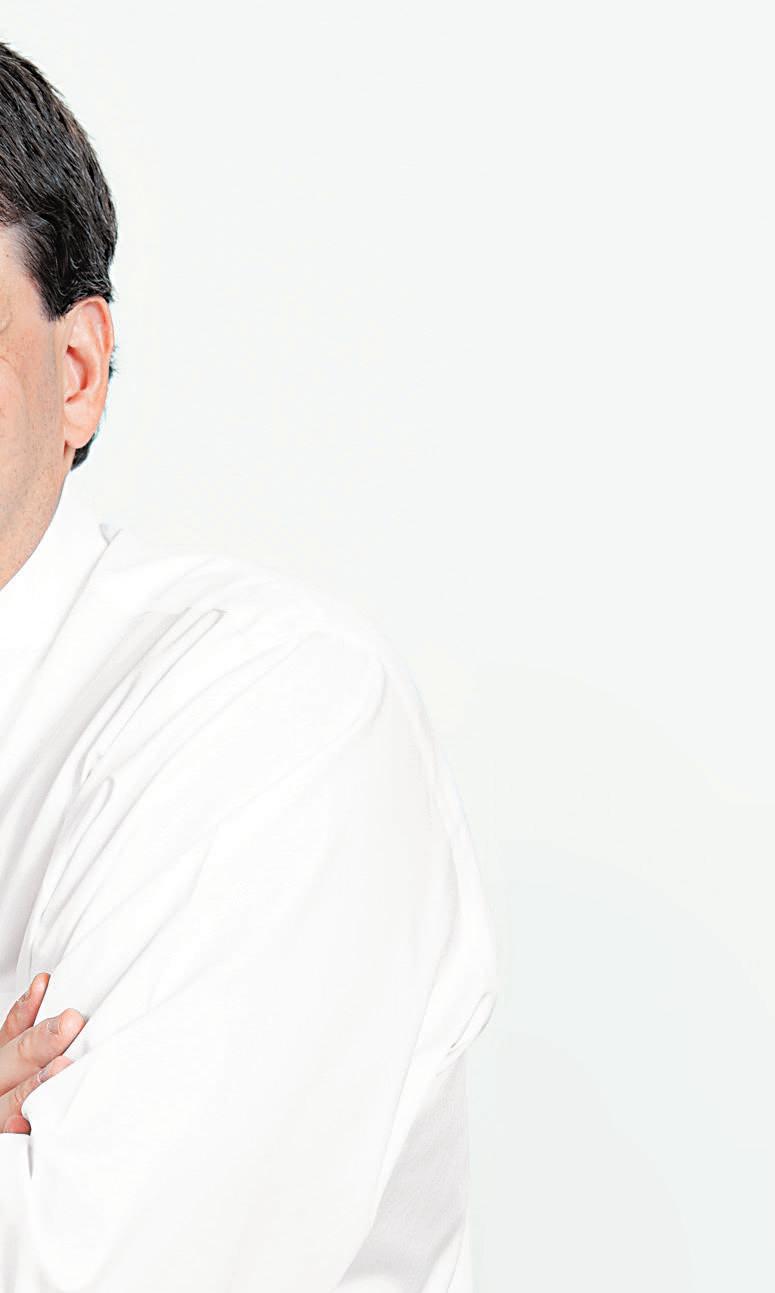
What are some of your interests outside of work?
I’m a football lover. I was originally a quarterback in high school and had my heart set on the same position for college. However, I ended up a punter at Cornell. I won’t lie, it was a blow to the ego at first, but it taught me what being a “role player” means and how important every role is to the bigger picture.
Iwas born with a strong work ethic. I started working at a young age and because of my early drive, have been involved in a variety of industries and performed many different jobs. These early experiences in the workforce are what ignited my entrepreneurial spirit. My mentality and passion for what I do has remained consistent at every stage of my career, carrying over to when I first started with Tropical Smoothie Cafe in 2010, as the brand’s first vice president of franchise development. The brand’s dedication to “Inspire Better” in all aspects of the business resonated with me from day one. From my VP of development days to my role as chief development officer to today as CEO, I’ve been passionate about the brand’s vision.
It’s been quite the adventure since becoming CEO in 2018, and I’ve enjoyed every twist and turn in the road. In today’s restaurant industry, consumers are always looking for the next trendy item or the next emerging concept. Over the years, we’ve learned that our innovative and versatile
menu, featuring a wide variety of food items in addition to smoothies, has brought tremendous success to our brand and to our incredible franchisees. Our franchisees and their teams are the faces community members see daily, and the dedication from them is truly what’s given us so much success in recent years.
For me, my entreprenurial passion really came from my parents. I learned through watching them success shouldn’t be measured in hours worked, but rather in getting the job done right. We like to call it “chopping wood,” meaning you don’t decide when quitting time is; you simply get the work done. I try to pass along that spirit and advice to others. I think the greatest thing you can do in life is serve others and reap the reward of knowing you’ve done something good for someone else. Passion is key in everything. Maybe you made somebody’s day just 1 percent better; you still had a positive impact. I think the world would be a little bit of a better place if we all kept that in mind. q







THE LAST COUPLE OF YEARS have been a roller coaster for the franchising industry as a whole, even for brands that don’t necessarily fit within the quick-service restaurant space. As consumers gradually returned to dining out and enjoying more time away from home, brands have also had to contend with supply chain issues and chronic labor shortages throughout the hospitality industry.
And 2022 has brought even more challenges—as well as opportunities. Rising inflation rates have meant higher food and supply costs. On the consumer side, the public is increasingly focused on finding the right mix of value and quality. Brands that can solve this equation for their customer base are well-positioned to thrive in this new world. Many concepts are taking advantage of current conditions to expand their footprint with franchising plans. Franchisees are also embracing the moment, building out their portfolios with strong, savvy concepts.
This year’s Restaurant Franchising spotlights 15 di erent brands—restaurants and otherwise—that are primed for growth. These brands are searching for franchisees who are ambitious and enthusiastic about taking their concept to the next level and beyond.
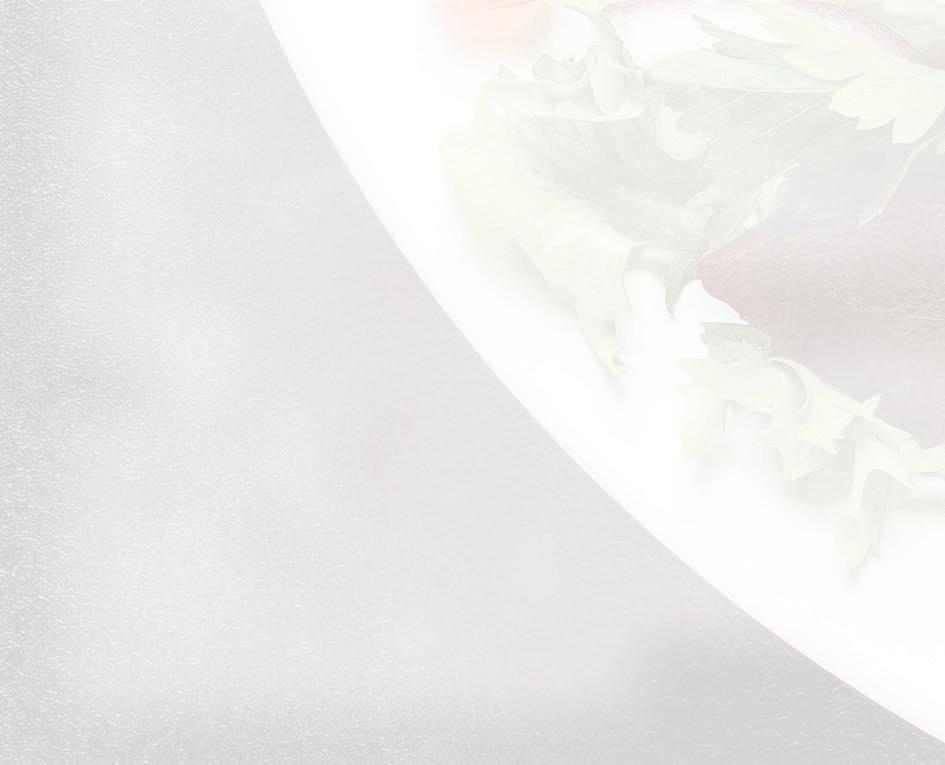








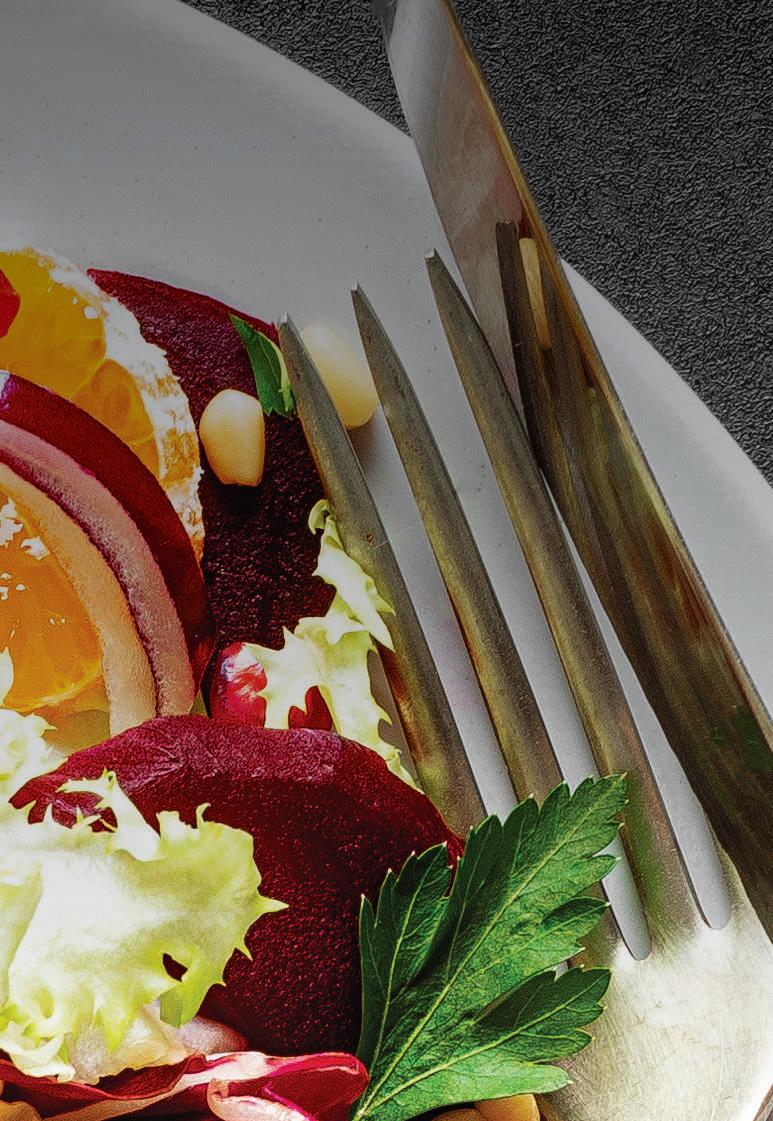
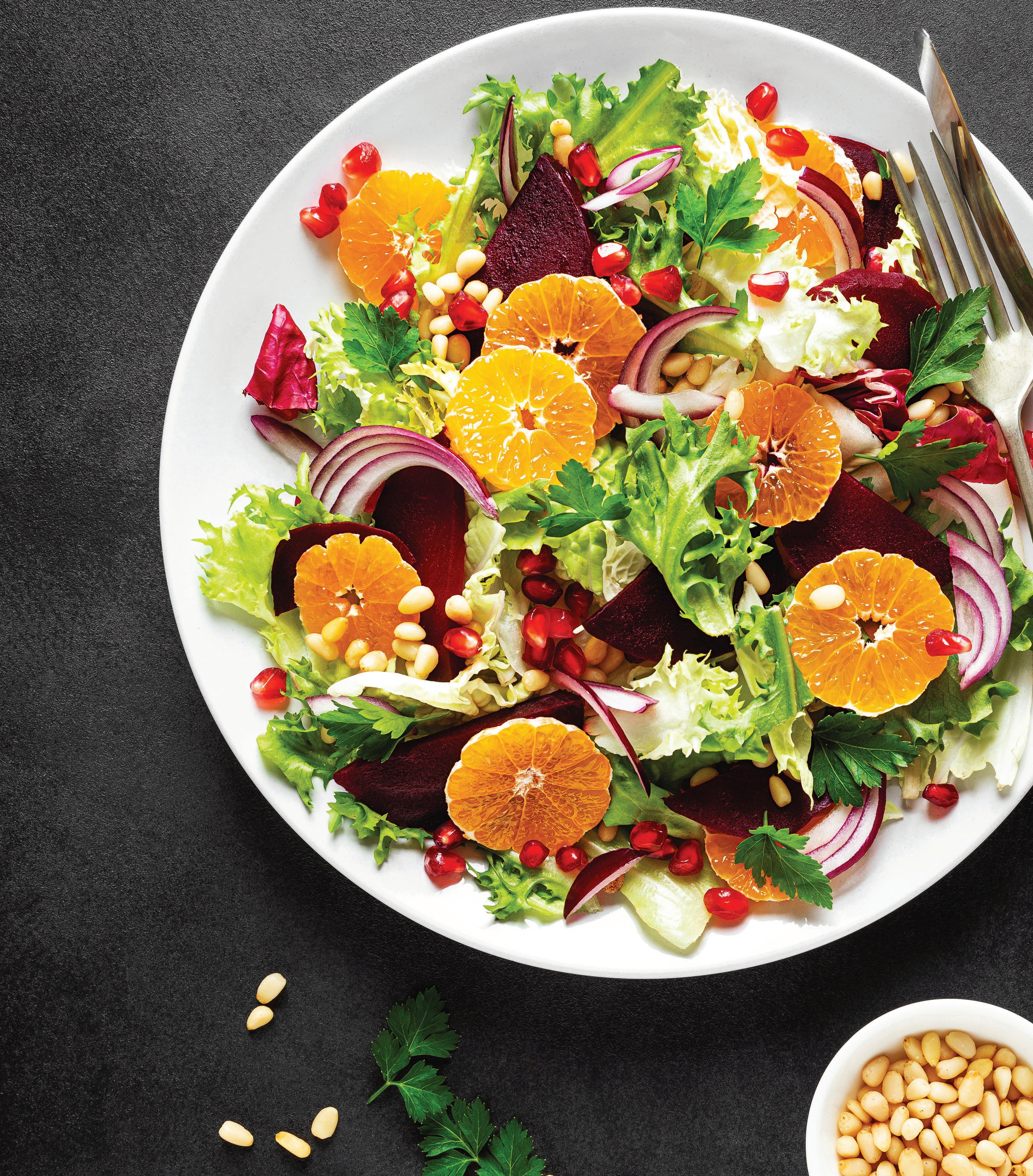

FOUNDED BY ARTHUR ABBOTT IN 1902, and rooted in Rochester, New York, since 1926, Abbott’s Frozen Custard has been serving up frozen treats to its fanatical following for 120 years. Now, it’s in growth mode: The brand has 37 stands and has inked franchise deals that will bring its unit count to well over 100 over the next several years.
One of those agreements was with a former member of the Papa John’s brand, whose group signed a deal to open 100 Abbott’s stands. That’s one of seven multi-unit agreements Abbott’s has signed in the past few years.
Brenden Drew, vice president of franchise development at Abbott’s, reports the brand is growing thanks to, first and foremost, an exceptional product. Abbott’s menu is built around a secret family recipe known to only three people in the world. How well-guarded is that recipe? Drew doesn’t even know it, despite being the son of the company’s President, Gail Drew.
Making its product fresh daily in small batches, every Abbott’s stand churns out a wide variety of flavors. The menu boasts everything from classic sundaes to Root Beer Milkshakes, custom-made cakes, and other takehome items. Abbott’s signature novelty item, however, is its Turtle. Invented by Drew’s grandmother in the 1960s, the Turtle features layers of Spanish peanuts, fudge, and chocolate or vanilla custard, all frozen on a stick and coated in a dark chocolate shell. Hence the name—Turtle.
Drew believes a second reason Abbott’s franchising model is taking off is because of its exceptional team. Abbott’s owners, and, in turn, crew members, are fiercely passionate about the brand, and that enables them to deliver a very memorable “Abbott’s Experience.”
Locations: 37
Future Locations
Finally, Drew says Abbott’s Frozen Custard is on the verge of something big due to the segment’s potential. “Frozen custard has been around for more than 100 years, but it’s still a growing niche in the market,” Drew says. “Frozen custard is not a fad. It has staying power, yet there’s so much white space in the industry right now. You might have four or five true frozen-custard-only brands, and we’re all a little different. But there’s only one that’s been around since 1902 and has a secret family recipe.”
Signed: Over 100
Franchise Fee: $37,000
Total Start-Up
Costs: $346,258$654,646
Drew notes that every Abbott’s store owner can expect several days of immersive training at a corporate-owned stand in Rochester, New York. Then, once construction is complete on a new owner’s location, owners and crew members receive intensive, hands-on, in-stand training.
According to Drew, training is conducted by one of the most experienced teams in the industry.
“We believe we can grow to more than 500 stands someday,” Drew says. “We want to grow the right way: by finding the right people, in the right place, at the right time, in a way that makes sense for everybody. That way, our owners and guests alike can live ‘Happily Ever After,’ as we like to say.” RF
For more on Abbott’s Frozen Custard, visit abbottsfranchise.com.

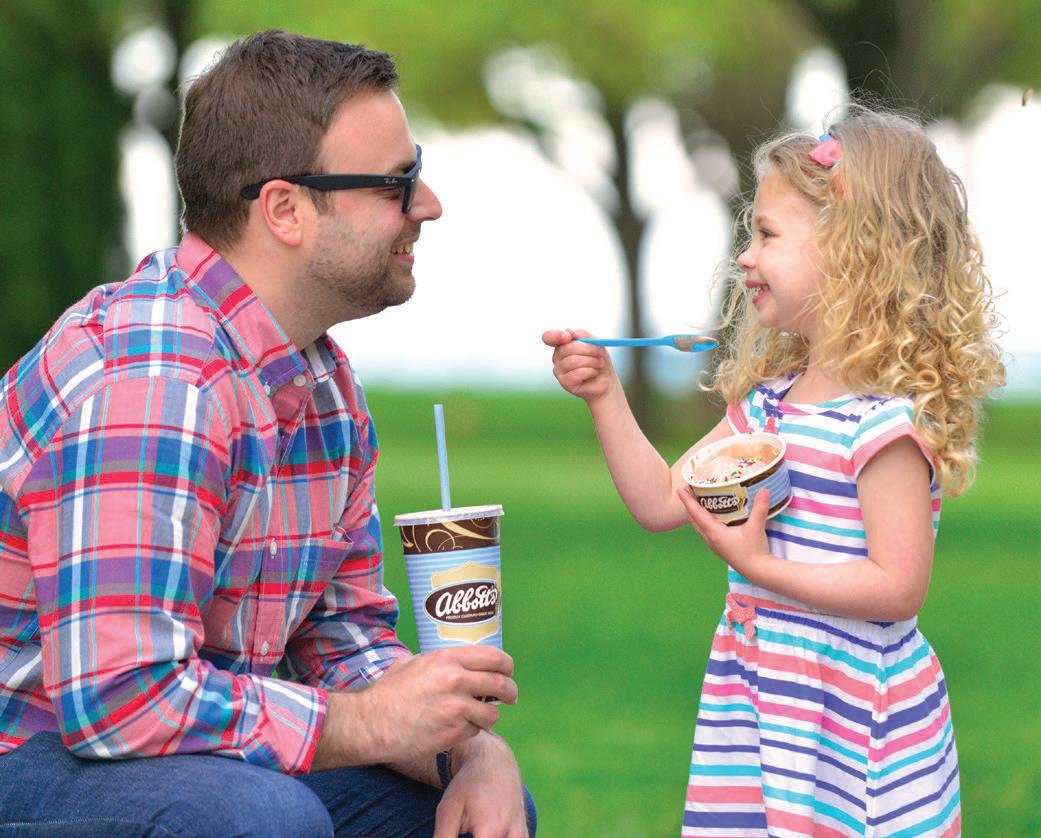
“Frozen custard is not a fad, it has staying power, yet there’s so much white space in the industry right now.”





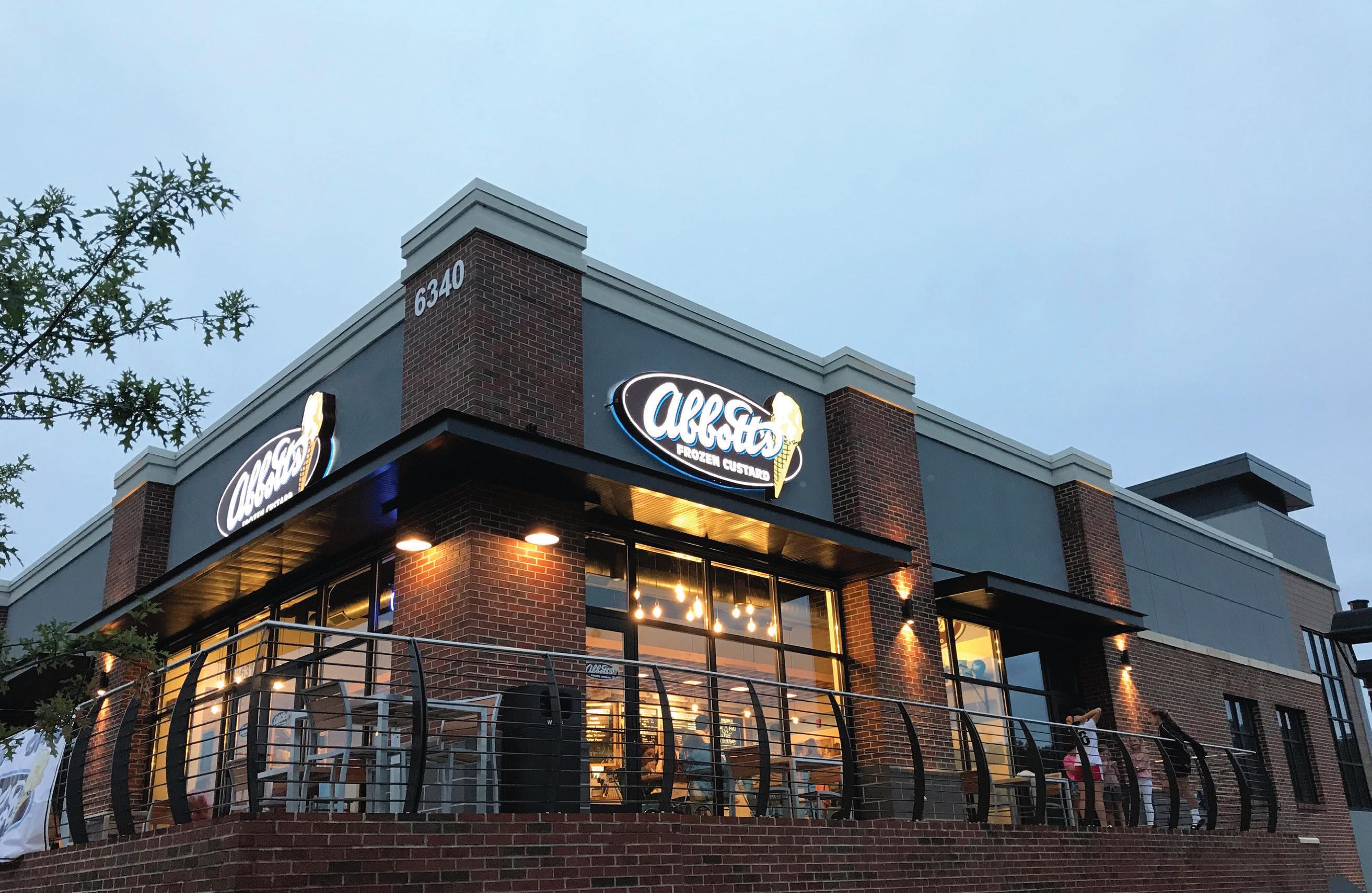
Since













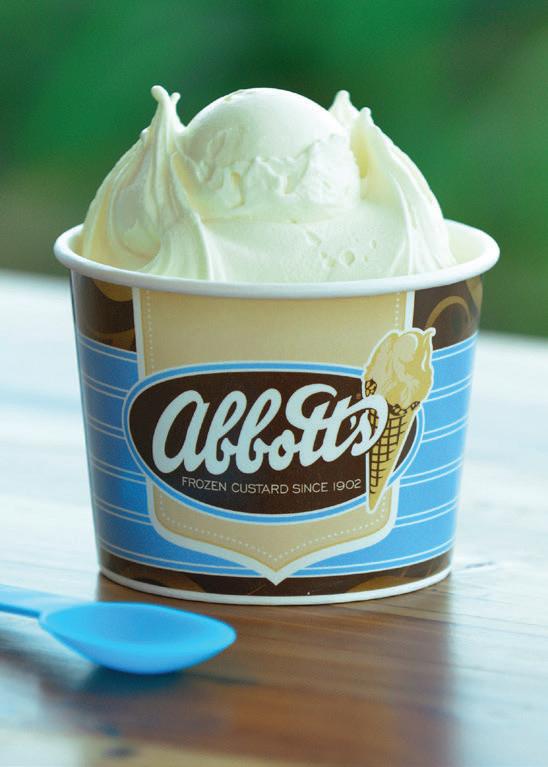







WITH 85 LOCATIONS AS OF JULY 2022, Altitude Trampoline Park is one of the largest entertainment brands in the U.S. It’s managed to fly under the radar as it’s grown, especially compared to brands in adjacent spaces, like Top Golf and Dave & Buster’s.
“We’re one of the largest entertainment brands that someone may not have heard of yet,” says Robert Morris, vice president of development for Altitude Trampoline Park.
Locations: 85+ Franchise Fee: $40,000*
Royalty Fee: 6.0%* Total Investment: $1.5 to $3.8 million*
“It’s allowed us to be more strategic and see what works and what doesn’t work. Our model is not ‘bigger is better.’ It’s ‘better is better.’”
The Altitude Trampoline Park brand focuses on indoor entertainment for families with children ages 3–12. Through birthday parties, bookthe-park opportunities, and free play, it encourages families to return again and again—and it recently launched a membership program, which Morris says now generates exceptional revenue across the brand.

“The subscription model is the future for everyone, whether it’s Netflix or a local car wash,” Morris says. “We look at ourselves as the modern-day playground. Why not become a member of our Endless Jumps Program, and visit a place where your kids can be active and participate in the kinds of social interactions that have been lost a lot over the last couple of years? We give families that opportunity.”
Of course, the pandemic was a turbulent time in many industries, and entertainment was no exception. Altitude Trampoline Park tightened its belt, and Morris, who joined the brand in 2020, is proud to say it didn’t lose any locations in 2021— in fact, 10 new parks opened last year.
“We spent COVID protecting our locations, but we also spent it building infrastructure,” Morris says. “When you buy the franchise, we partner with you from site selection, alongside our national real estate partner, all the way through the opening process—and then you have dedicated ongoing support from our operations team. We want to be a good partner and do our part. We don’t consider franchisees just a revenue stream.”
Franchisees with experience in the restaurant industry are uniquely positioned to enter this partnership. “A lot of people who come from quick-service restaurant brands really understand what’s great about Altitude in terms of a park’s increased earning potential and the ability to really fill a need in the community,” Morris says. “There’s a premium on the foodservice in our buildings because you’re inside the park. Quick-service restaurant operators have to worry about razor-thin margins a lot of the time, but you don’t have the same challenge in the family entertainment industry.”
Altitude is looking for franchisees from a wide variety of diverse backgrounds. “There is no set Altitude owner,” Morris says. “We don’t try to pigeonhole anyone. We like to tell people to ‘live the jump life’—we just want to provide safety to our guests and put smiles on their faces.” RF
For more on franchising with Altitude Trampoline Parks, visit altitudefranchise.com.
“We look at ourselves as the modern-day playground.”





ACROSS SOME 85 LOCATIONS AND 11 STATES, with more than 100 additional locations forthcoming, the neighborhood hangout Bubbakoo’s Burritos is rocking the skater-surfer vibe from the East Coast to the West Coast.

Founded in 2008 by industry veterans Paul Altero and Bill Hart in Point Pleasant, New Jersey, Bubbakoo’s began franchising circa 2015. According to the 2022 FDD, it has seen unit growth of more than 200 percent since 2019, as well as a $1.5 million top quartile and a $1.1 million corporate AUV.
Altero says much of that success can be attributed to the brand’s top-tier service and innovative menu, featuring complete customization from start to finish, with exceptionally fresh ingredients and bold flavors.
“With more than 20 toppings and Signature Sauces, there is something for everyone,” Altero says. “Bubbakoo’s also has created eight Signature Creations, from the Hibachi Steak and Shrimp Burrito to General Tso’s Chicken Tacos and Buffalo Beef Chiwawa. Nowhere else can you find the beach and skate vibe paired with fresh and delicious food.”
Franchisees can expect to be fully supported with fundraising initiatives, marketing, location, and supplier assistance, as well as headquarterbased training and field support. The brand focuses its training on three foundations that will ensure success: operating systems, people systems, and financial systems.
In addition to financial requirements and acumen, when vetting a candidate, Bubbakoo’s seeks operational excellence, which entails strong leadership, management, and people skills within the industry; effective team communication; and a positive attitude to foster a successful partnership.
Locations: 80+
Start-Up
Cost: $35,000
Unit Growth: More than 200% since 2019
Smart expansion is also top of mind. “As Bubbakoo’s grows its footprint, we are laserfocused on making sure our restaurants are built to handle new customer preferences, which is why we just upgraded our digital ordering platform,” Hart says, adding they’ll continue to invest within the technology deck, rolling
out AI and loyalty solutions that set up operators for long-term success while delivering products the way guests prefer to engage with the brand.
The franchisees are reaping the benefits of this technology and innovation. “The recent digital was a significant upgrade from the previous platform,” says Steve Harrison, who owns three New Jersey locations. “The integration with third-party sites and catering creates a singular base to handle everything, from reporting and orders to drivers and out-of-stock items. The brand has created a cult-like following with its customers, and you can feel the momentum and energy growing. It’s amazing to be a part of the growth and excitement.”
Hart couldn’t agree more: “At Bubbakoo’s, our food and culture come directly from our mission to ‘Create Something Different’ by providing fresh, quality food and rockstar service in a clean, energetic, and fun environment.” RF
To learn more, visit bubbakoos.com/franchiseopportunities.
With top-tier service, an innovative customization approach, and exceptionally fresh ingredients, this brand is growing fast.
BY JOCELYN WINN
“The brand has created a cult-like following with its customers, and you can feel the momentum and energy growing.”

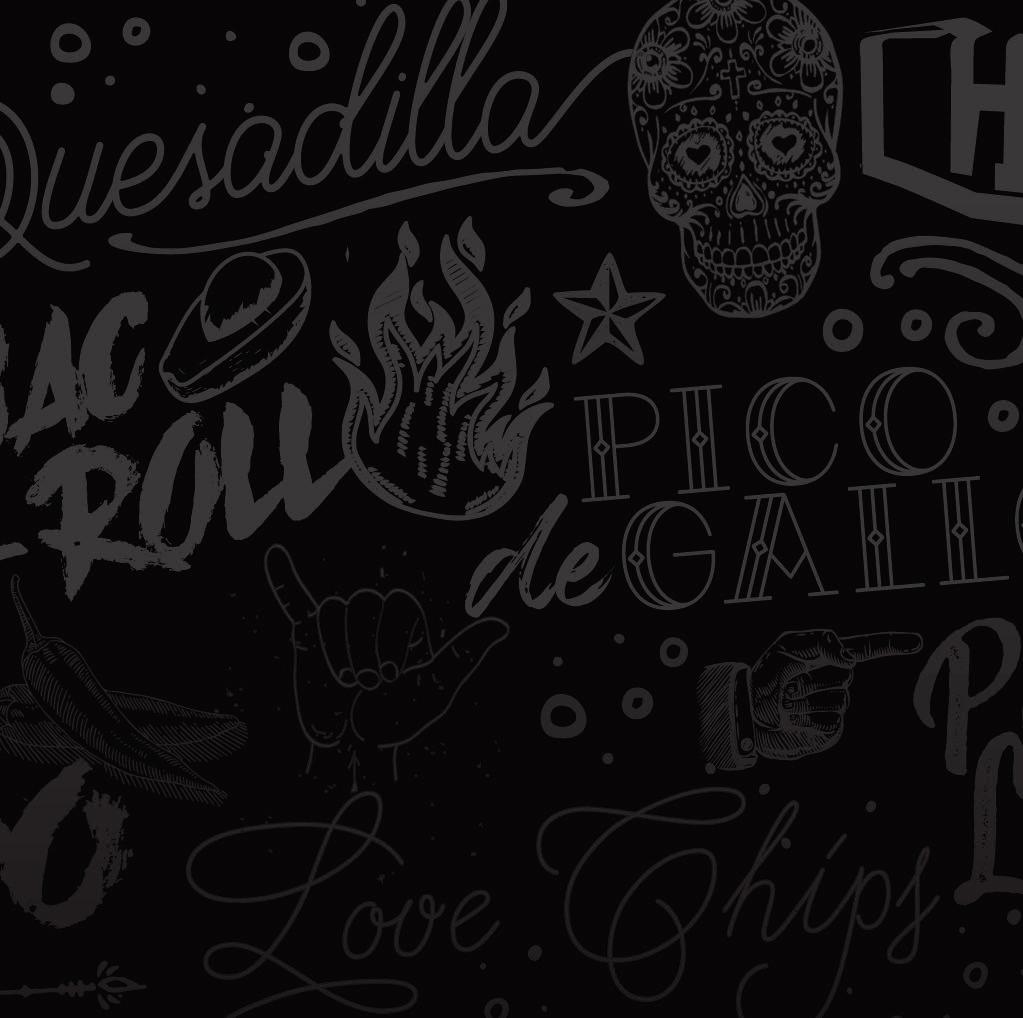

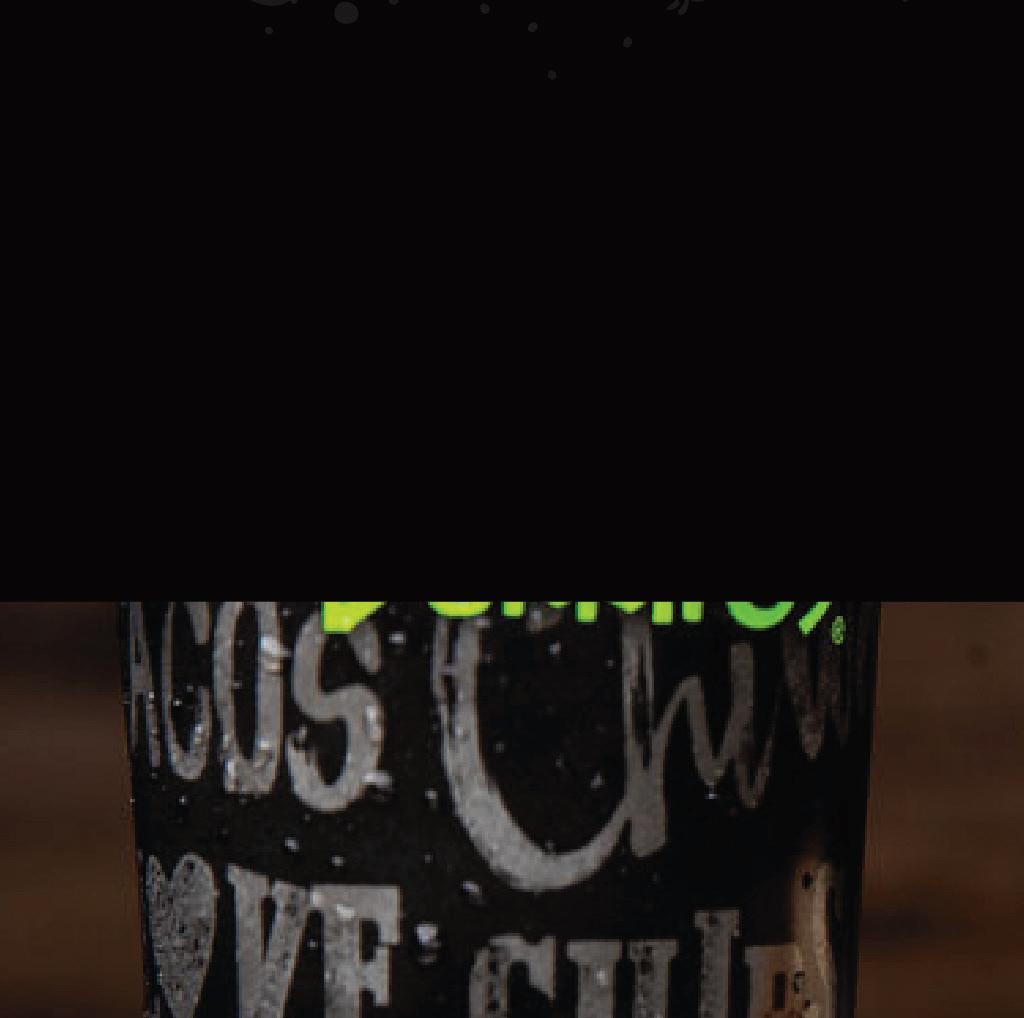

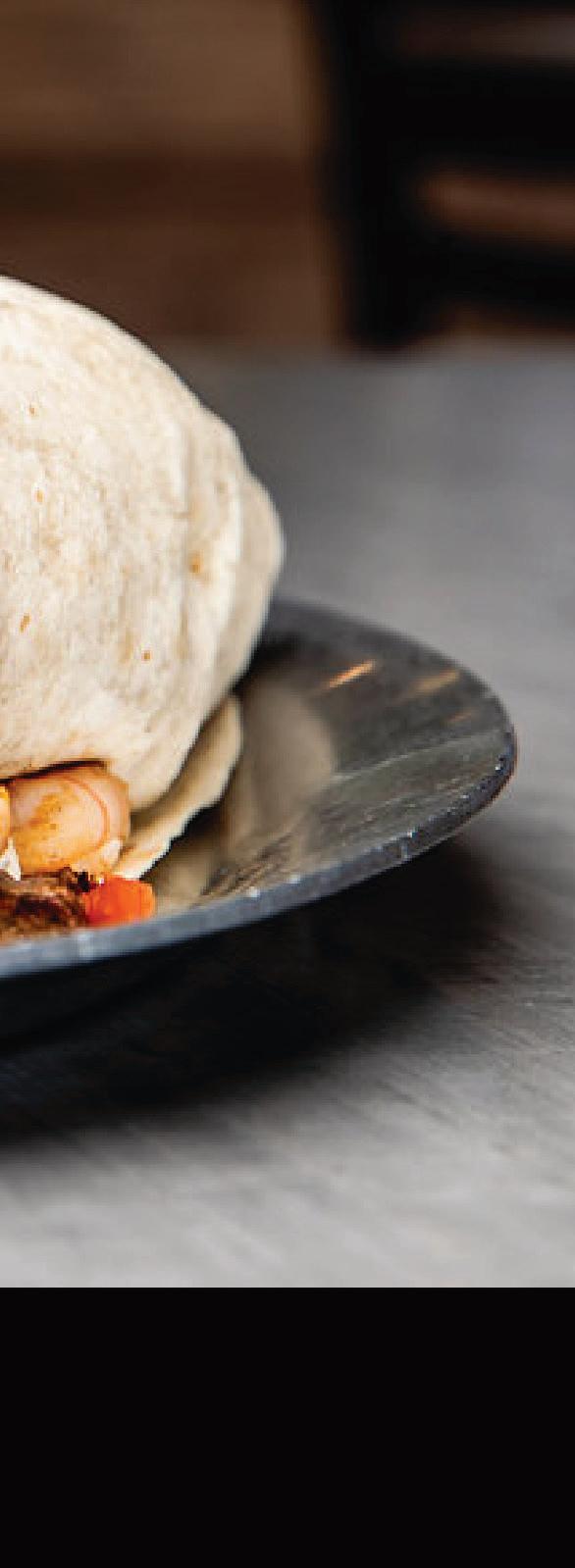
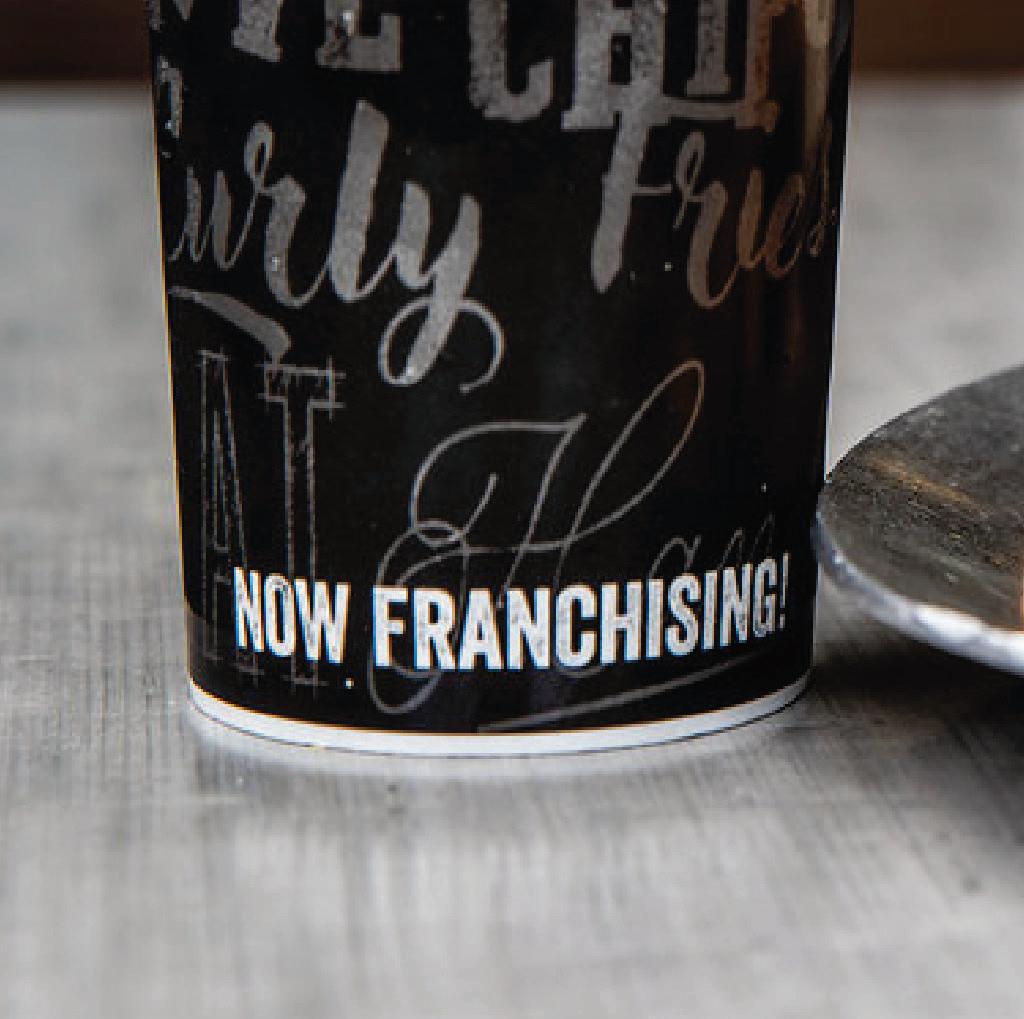


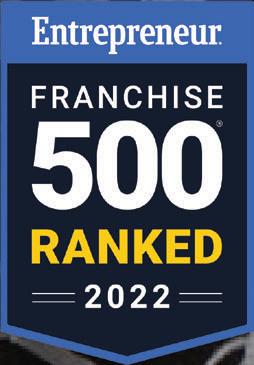



WITH SEVEN ICONIC BRANDS making up more than 6,400 global (more than 4,600 in North America) restaurants, cafes, bakeries, and ice cream shoppes, Focus Brands is primed for growth and seeking brand franchisees to fill those markets.
Whether you’re a single-unit owner new to the field or a multi-unit developer with broader infrastructure, Focus Brands, headquartered in Atlanta, Georgia, can seamlessly fit all passions into its portfolio that includes Auntie Anne’s, Carvel, Cinnabon, Jamba, Moe’s Southwest Grill, McAlister’s Deli, and Schlotzsky’s.
Iconic Brands: 7
Located
In: Over 55 countries
Global Locations: 6,400 and growing
“We love all our brands the same,” says Brian Krause, chief development officer. “That’s the beauty of being a portfolio company. When you have the strength of multiple brands, there’s something for everybody.”
Focus Brands houses one of the largest development teams in the industry, designed to grow and support multiple brands. “The requirements are all different, but at the end of the day we’re looking for folks who have that strong entrepreneurial passion and spirit,” Krause says.
The portfolio powerhouse just launched a new, all-inclusive development website to help prospective brand franchisees tap into the Focus Brands system and understand where they can grow and who to contact to get started both domestically and internationally. It streamlines the research process with brand stats, such as Auntie Anne’s average net sales for fiscal year 2021 ($636,952).
Franchisees can expect real estate, construction, and marketing support, supply chain packages with competitive pricing from single-source vendors, flexible footprints and nontraditional venue options, and cobranding and franchising experts.

“With the ability to tap into our brands’ enterprise-level resources, you’re going to share best practices. You’re going to leverage purchasing power with our suppliers and marketing agencies, and obviously technology and digital innovation is a big part of that. We also share consumer and loyalty customer insights. All of these benefits give us better capabilities and allow us to make larger investments that one brand quite frankly couldn’t afford on its own,” Krause says.
Nationalizing resources while globalizing its reach allows room for massive market differentiation within the Focus Brands portfolio, as well as culinary innovation to cater to international flavors and regional palates, whether in the Middle East or middle America.
“We produce over $1.2 billion in retail sales through our global channels and licensing business, which adds clout to our already iconic brands,” Krause says. And when fans called for more access points, Focus Brands answered with dual branding, street-side real estate, opening the first ever Auntie Anne’s drive-thru paired with a Jamba in Wiley, Texas, last year.
The future is bright for Focus Brands and franchisees of its seven brands, with an eye on platform expansion, increasing access, and driving franchisee returns on investments. RF
To learn more, visit development.focusbrands.com.
“That’s the beauty of being a portfolio company. When you have the strength of multiple brands, there’s something for everybody.”

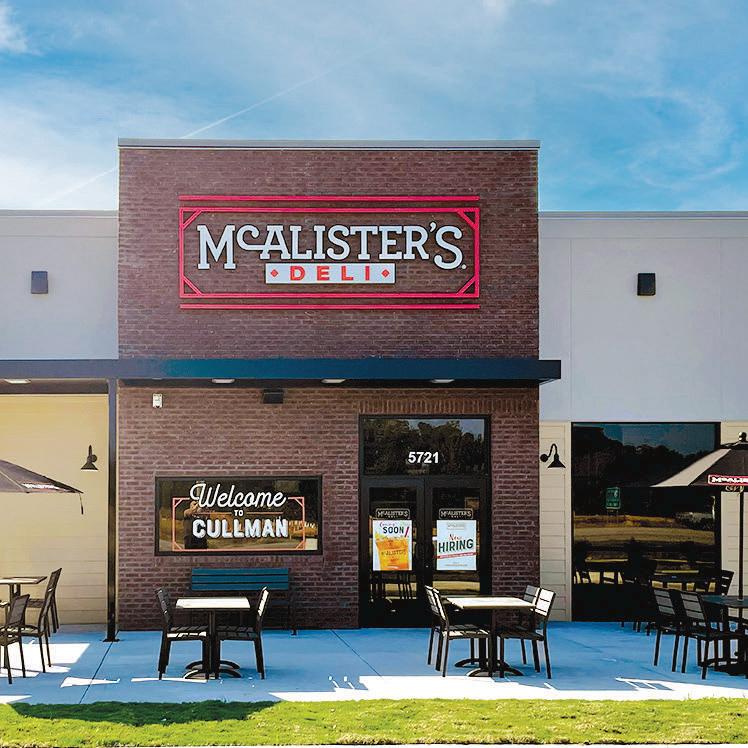



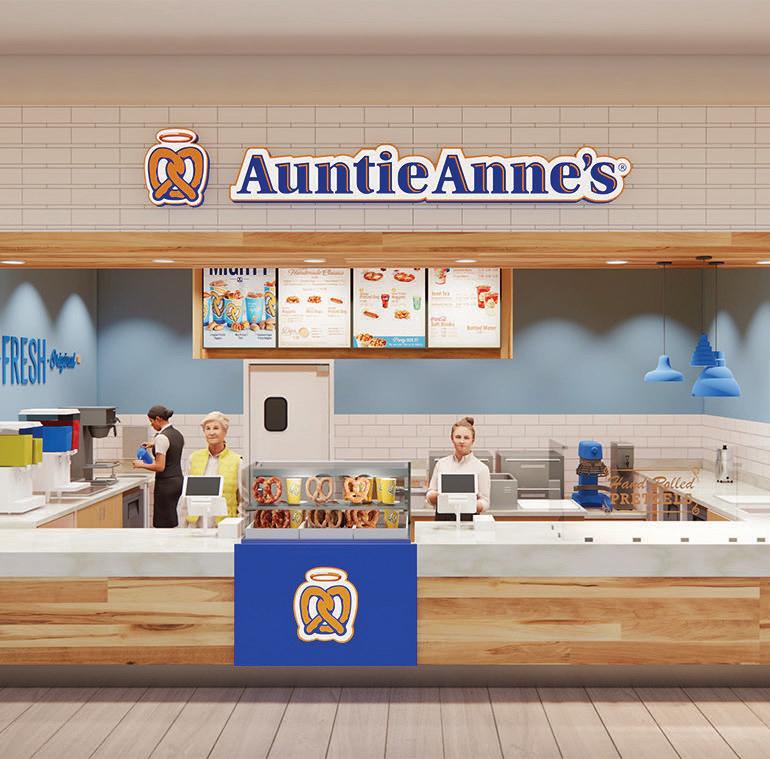

HOUSTON’S HOT CHICKEN co-founders Edmond Barseghian and Houston Crosta may be young—both are in their early 30s—but they already helm one of the fastest-growing restaurant franchises in the U.S.
The duo, who worked on the Houston’s Hot Chicken concept for two years before launch, opened their first store in Las Vegas in August 2021. Since then, they’ve sold more than 100 franchises in 12 states, and there are no signs of the brand losing momentum.
“We saw the hot chicken category taking off, but we wanted to be innovative,” says co-founder Barseghian. “Our brand is Texas hot chicken—the sauce is sweeter and more savory than Nashville.”
As the name implies, the brand serves hot chicken sandwiches and tenders, but it also serves a varied menu, including loaded fries, party platters,
salads, and milkshakes. Houston’s Hot Chicken, however, further differentiates itself with highquality ingredients, such as fresh-baked brioche buns and the healthiest organic chicken available.
In addition to top-tier ingredients, the restaurant’s interior also uses premium materials, which give the space a rustic, yet modern feel. Onyx countertops, brass metallic tables, polished concrete floors, reclaimed wood, and auto-inspired art hint at the elevated dining experience to come.
“We’re both heavily into the automotive industry,” says co-founder Houston Crosta. “We have taken the luxurious aspects from that industry, so when customers walk in, the high-end art and murals are among the first things they notice.”
In typical millennial fashion, the duo have a transparent, inclusive way of operating the business. They’re seeking franchisees who are interested in building a long-lasting partnership, not just a business arrangement. Interested franchisees must have a minimum net worth of $2 million (with $400,000–800,000 on hand), and be able to build a store without loans or debt. However, above all else, prospective franchisees must be a cultural fit.
Houston’s Hot Chicken provides robust support at every step of the franchising process, from site selection to construction, staff training, grand opening and beyond. With seven stores open so far, AUV is $3-4 million gross.

“Other brands rely on television and billboards, but direct social media marketing is much more effective for us,” Barseghian says. “We leverage our large YouTube and social media presence to grow our business. Our grand openings typically have 3,000–4,000 attendees.”
Barseghian and Crosta ideally seek franchisees who want to develop five-store and territory deals, although those who seek single-store agreements in smaller markets won’t be ruled out. The tandem is open to working with both experienced foodservice franchisees and those who are brand new to franchising in the restaurant space. “Our franchisees come from all walks of life and we couldn’t be happier with the diversity in our company,” Crosta says. RF
To learn more about franchising, visit houstonshotchicken.com.



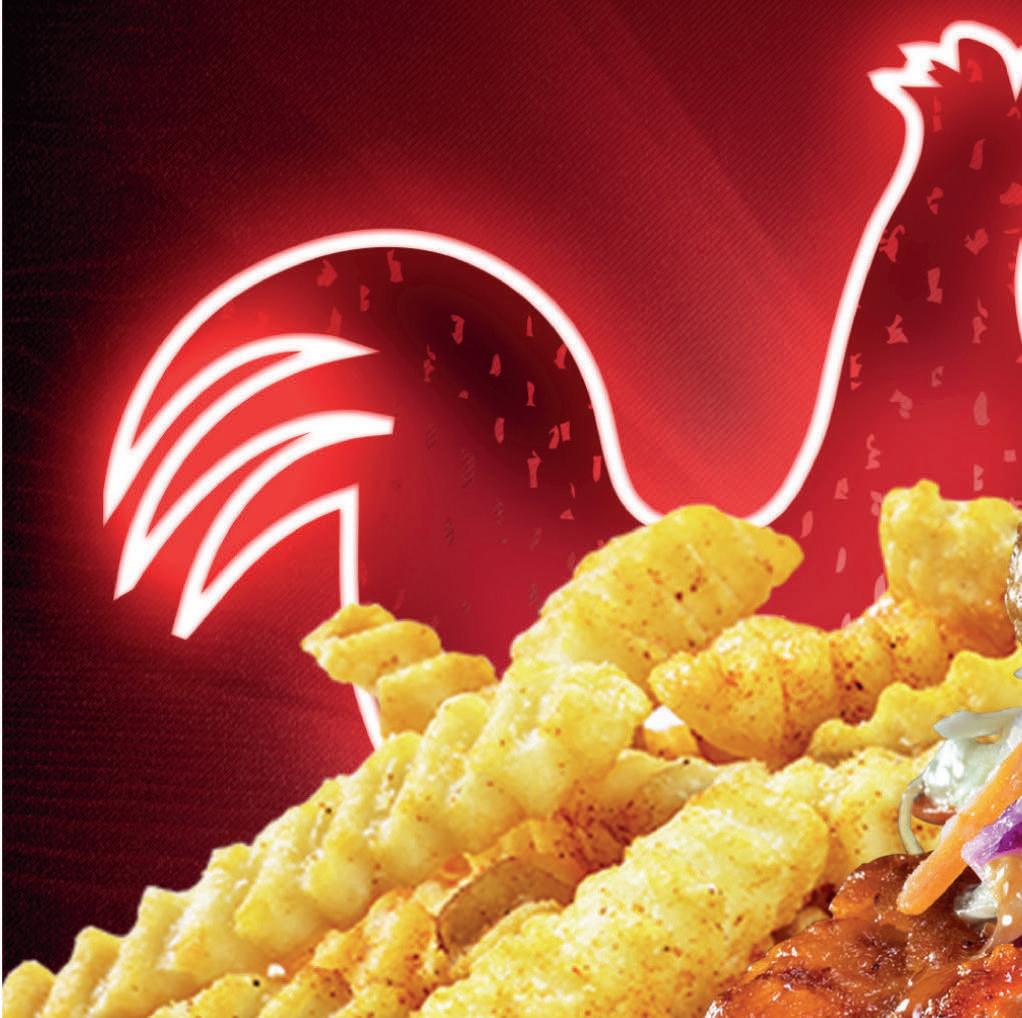
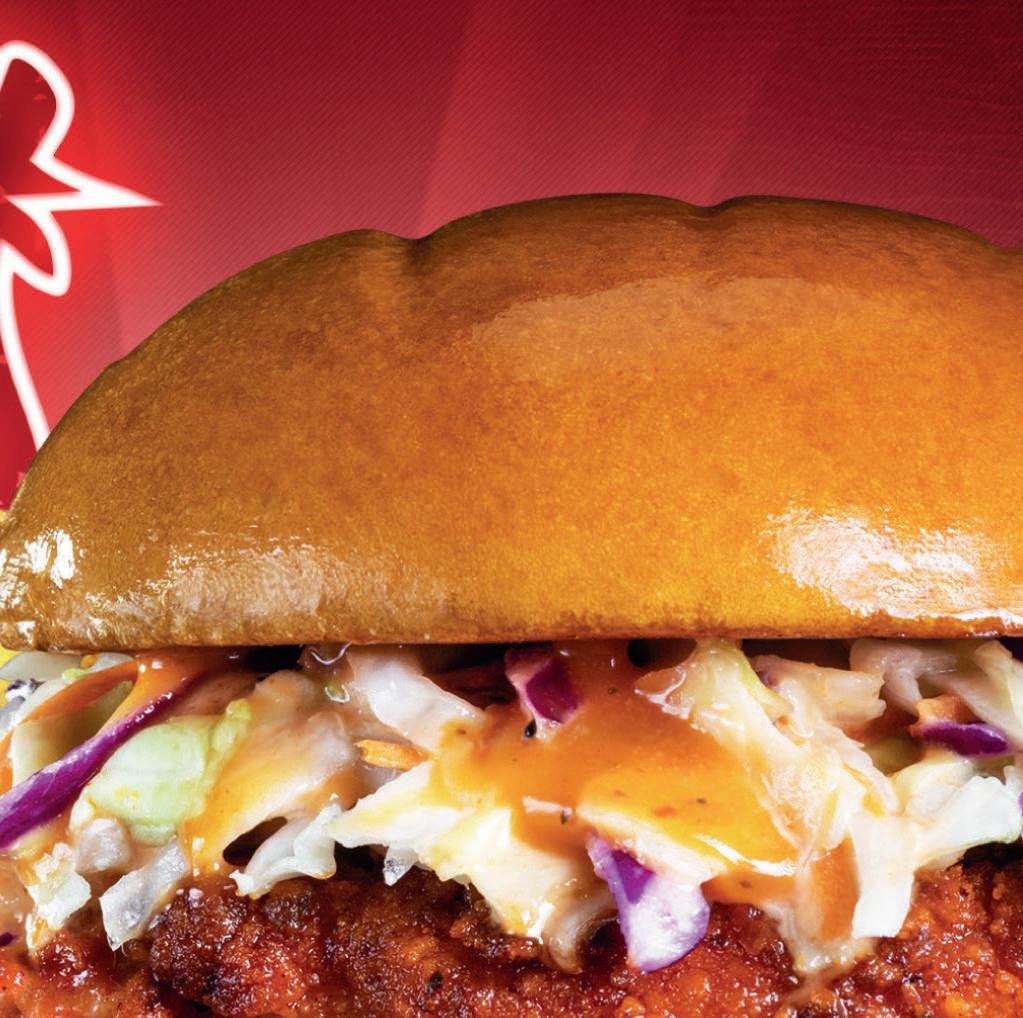

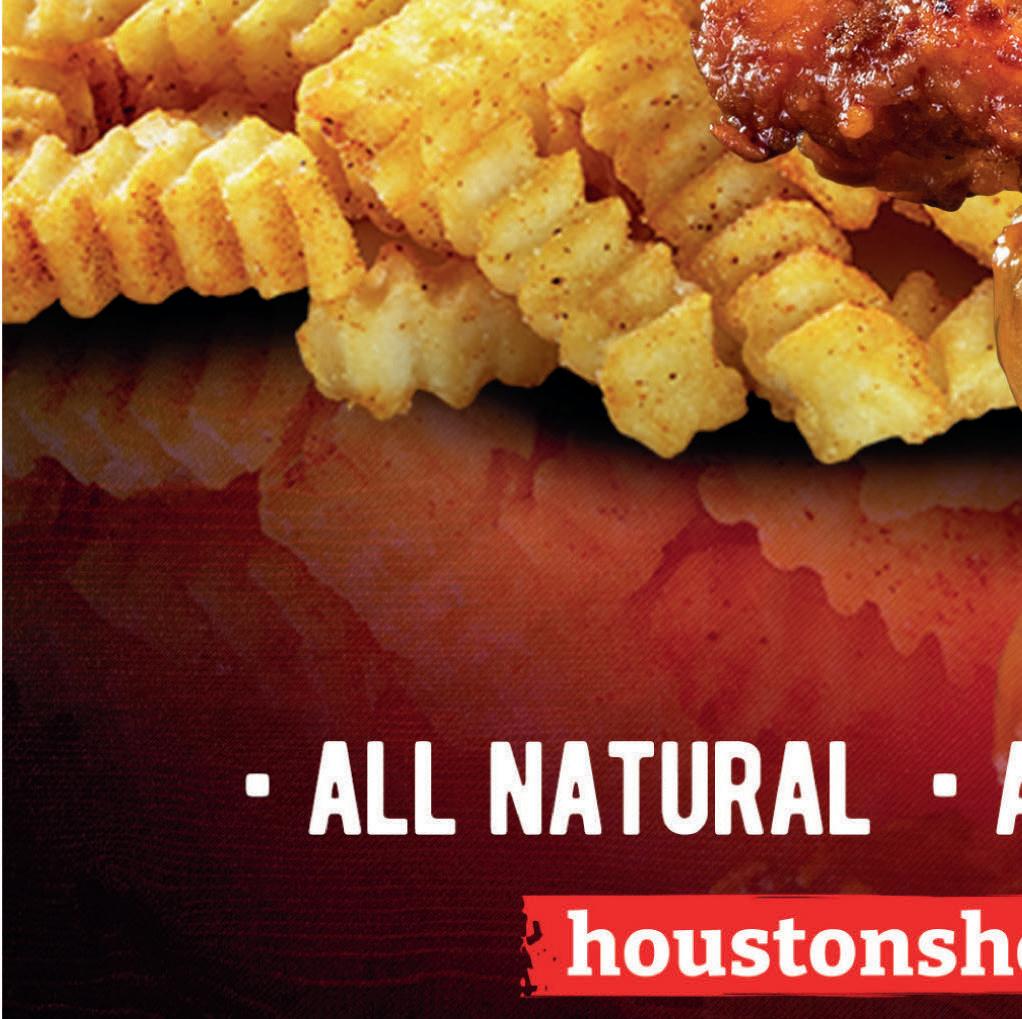


THE FIRST THING MANY PEOPLE NOTICE about The Human Bean is the coffee brand’s unique name. What they may not know is that it was conceived by the mother of Dan Hawkins, co-founder and CEO of The Human Bean, and speaks to the culture of family, friends, and community that the coffee franchise holds dear.

“The name to us is about the guest experience we seek to provide and the way we approach working in the community and giving back,” Hawkins says. “It’s still the perfect name—the human element is something that’s just so important to us, from our franchisees, to our team members, to our guests.”
After opening its first location in Ashland, Oregon, in 1998, The Human Bean quickly became known for its efficient drive thrus and wide-ranging menu, featuring everything from high-quality espresso shots to decadent mochas and smoothies. The brand has achieved notoriety thanks to initiatives like Coffee for a Cure, which has raised over $2 million for breast cancer support and treatment.
Now the brand is one of the fastest-growing coffee franchises in the U.S., with 132 locations currently open and nearly 200 more in development in 29 states. As the brand grows and sales increase, The Human Bean relies on forward-thinking solutions, like line-busting tablets that keep up its drivethru efficiency without compromising on the quality of its product.
percent of the brand’s franchisees said they would recommend franchising with The Human Bean to a friend.
Hawkins believes that the high approval ratings are owed to the brand’s ongoing dedication to supporting franchisees, but he also thinks keeping franchisees happy starts with identifying the right partners to grow with.
Royalties: 0%
Franchise Fee: $30,000
Start-up Costs: $380,025 to $905,025
“Keeping the integrity of the brand is the most important thing for us in everything that we do,” Hawkins says. “We wouldn’t be expanding at the rate that we are if we didn’t think we could maintain the ethos of the brand and partner with people who will grow the brand the way we envision it.”
Technology: Robust
POS with integrated line busting and contactless rewards app
Hawkins is especially proud of the relationship The Human Bean has built with its franchisee partners. In a recent review conducted by a third-party, over 90
“We deny many more franchisees and locations than we approve because we really want to find people and places where we know we will be successful in sharing our culture,” Hawkins says. “That means creating a positive atmosphere where our amazing baristas can create the best possible guest experience. How do we maintain that? It requires a whole lot of upstream work in identifying the right people, plus regular communication from our system’s field operations team that goes out and assures not only quality and consistency but shares what a guest experience looks like, feels like, and tastes like.
“Because at the end of the day, that’s what separates us: The authentic connection we have with our guests in anticipating their needs and delivering something super special for them each time they come into our store.” RF
For more on franchising with The Human Bean, visit thehumanbean.com.
“Keeping the integrity of the brand is the most important thing for us in everything that we do.”




STARTING IN 2004, the Miceli family wanted to make the pizza experience better, so they created Mici Italian. As a family rooted in Italian food traditions, they saw a need for great tasting pizza and pasta that could fit into the busy American lifestyle.
Creating a concept that is convenient, yet features artisan offerings, didn’t happen overnight. Over 18 years, Mici has perfected the menu, simplified kitchen operations, created a takeout and delivery experience that is
authentic Italian Cannoli from the famed La Rosa’s Pastry Shop in New Jersey— and a selection of Italian wine and beer.
In addition to creating a brand that customers love, Mici focused just as much energy on being a brand that franchise operators can run with ease. Pizza is a high-margin segment but can be difficult. To improve ease of operations, Mici founder Jeff Miceli developed a patented process which helps reduce the skill needed to create hand tossed pizza. Coupled with system-
as good as dine-in, delivered exceptional store-level economics, and built a high-level support team.
From this foundation, Mici launched its national expansion, building a pipeline of over 60 corporate and franchise restaurants. Most recently, the brand has expanded with multi-unit franchisees into new territory including Phoenix, Dallas, and Detroit.
AUV: $1,274,353
Initial Investment: $244,205–$586,605
Loyalty Program
Participation: 65%
Years of Success: 18
Mici’s menu includes artisan, allnatural pizzas and classic pastas, using authentic ingredients and toppings. Pizzas are available in 10-in. and 16-in. sizes with calzone, make-your-own, and gluten-free crust options available. The menu is rounded out by an array of fresh salads and Dolce— Mici offers handcrafted Gelato plus
atic preparation and efficiency, Mici drives high volumes with low overhead, which helps the brand thrive in a challenging labor environment.
These focus areas have not gone unnoticed. Over the years, Mici has racked up significant awards, including being named to Fast Casual magazine’s 2022 Top Movers and Shakers; QSR magazine’s 40/40 List for 2022: America’s Hottest Startup Fast Casuals; one of “11 Restaurant Brands on the Cusp of Greatness,” by QSR magazine; “8 Italian Fast Casual Concepts Stirring the Pot,” by Nation’s Restaurant News; and in Denver, Mici has been awarded 5280 Magazine’s Readers’ Choice “Best Italian, Best Pizza, Best Meatball and Best Kid-Friendly Restaurant” for the past 10 years.
Mici is eagerly looking to develop nation-wide with multi-unit franchisees who will take an active role in the business. Experience and a dedication to operational excellence is vital, but culture fit is just as important. Italian food requires an authentic spirit of hospitality and enthusiasm for food, and Mici takes pride in those qualities and looks for partners that embody them as well. RF
For more information on franchise with Mici, visit miciitalian.com/franchising.
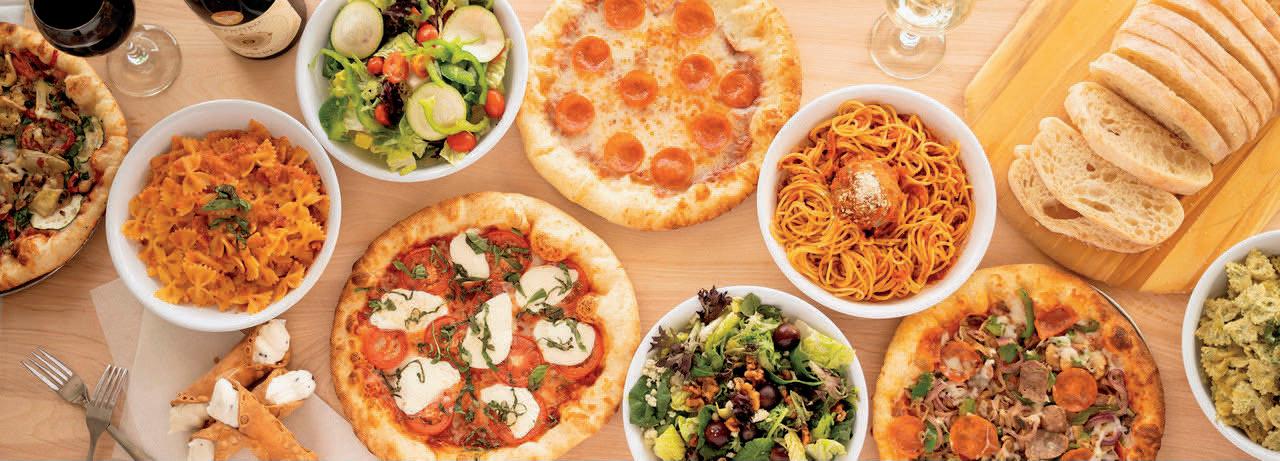
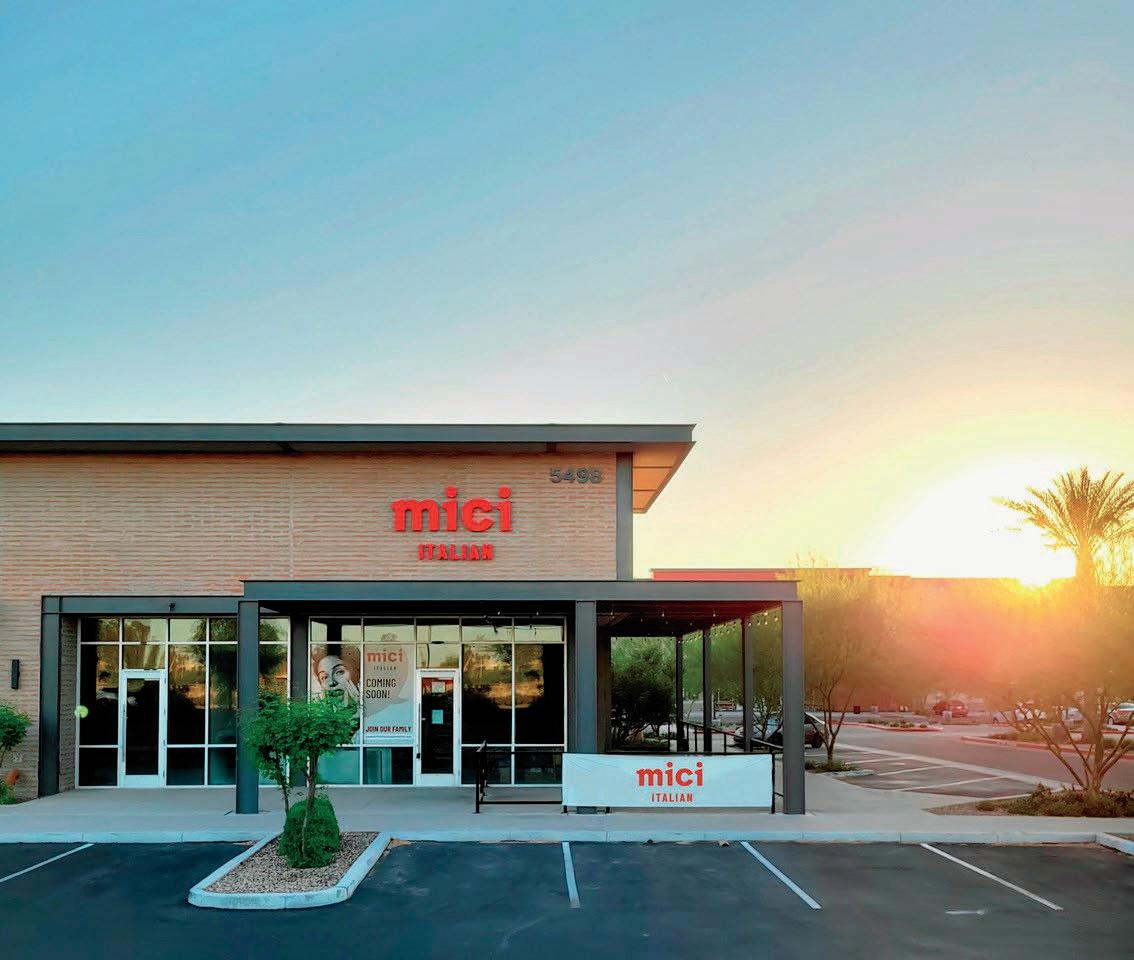



services, cut drive-thru time, introduced a smaller, prototypical building, and installed digital restaurant menuboards,” says Jim Plamondon, co-president of Roy Rogers. “All these initiatives have come together, and we are thrilled to watch the growth potential come to life.”
Additionally, the brand has formed partnerships with third-party delivery services, invested in store technology, developed a new rewards app, and launched new menu items, like its new Trailblazer Coffee and limited-time offers, including its Steak and Cheese Sandwich and Texas Pete® Buffalo Chicken Tenders.
is ready to share its unique broad appeal across multiple dayparts and generations with new communities across the East Coast after more than 50 years since its founding.
With a flexible, new store design and highly refined operations in place, the nearly 50-unit western-themed quick-service restaurant chain, has positioned itself to soar as a modern franchise brand.
Built on a legacy of serving up the big three favorites of roast beef, burgers, and chicken, a cut above the rest in the quick-service segment, the Marylandbased franchise has been busy reimagining operations for the future.
Quality Menu: 3 dayparts
Selling Point: Strong history and legacy
AUV: $2.6 million at top 25 percent of stores
Menu planning, prototype, and frontand back-of-house operations and infrastructure have been optimized over the past few years, focused on speed, efficiency, and enhancing the customer experience. The new store designs offer franchisees flexible footprint options, ranging from traditional free-standing restaurants with drivethru options to non-traditional travel plazas and college campuses.
“We streamlined our service model and supply chain, adopted third-party delivery
The brand also recently announced Cleves, Ohio, as the first location of its 10-unit deal with One Holland Corp. restaurant group. After a long history of the brand’s local presence, beginning with the famous actor Roy Rogers birth in downtown Cincinnati, the outstanding operator of multiple local concepts is developing Roy Rogers Restaurants throughout eight counties in Greater Cincinnati, Northern Kentucky, and Indiana.
Roy Rogers has 25 company-owned restaurants and 17 franchise locations in six states. Building on the momentum of strong 2021 sales and $2.6 million average unit volume in its top tier (25 percent) stores, the team aims to expand the brand’s reach with experienced multi-unit operators looking to add a legacy quick-service brand to their portfolios. Franchisees can count on tech-driven systems, seasoned leadership, and a fiercely loyal multi-generational following for the brand’s long-celebrated history.
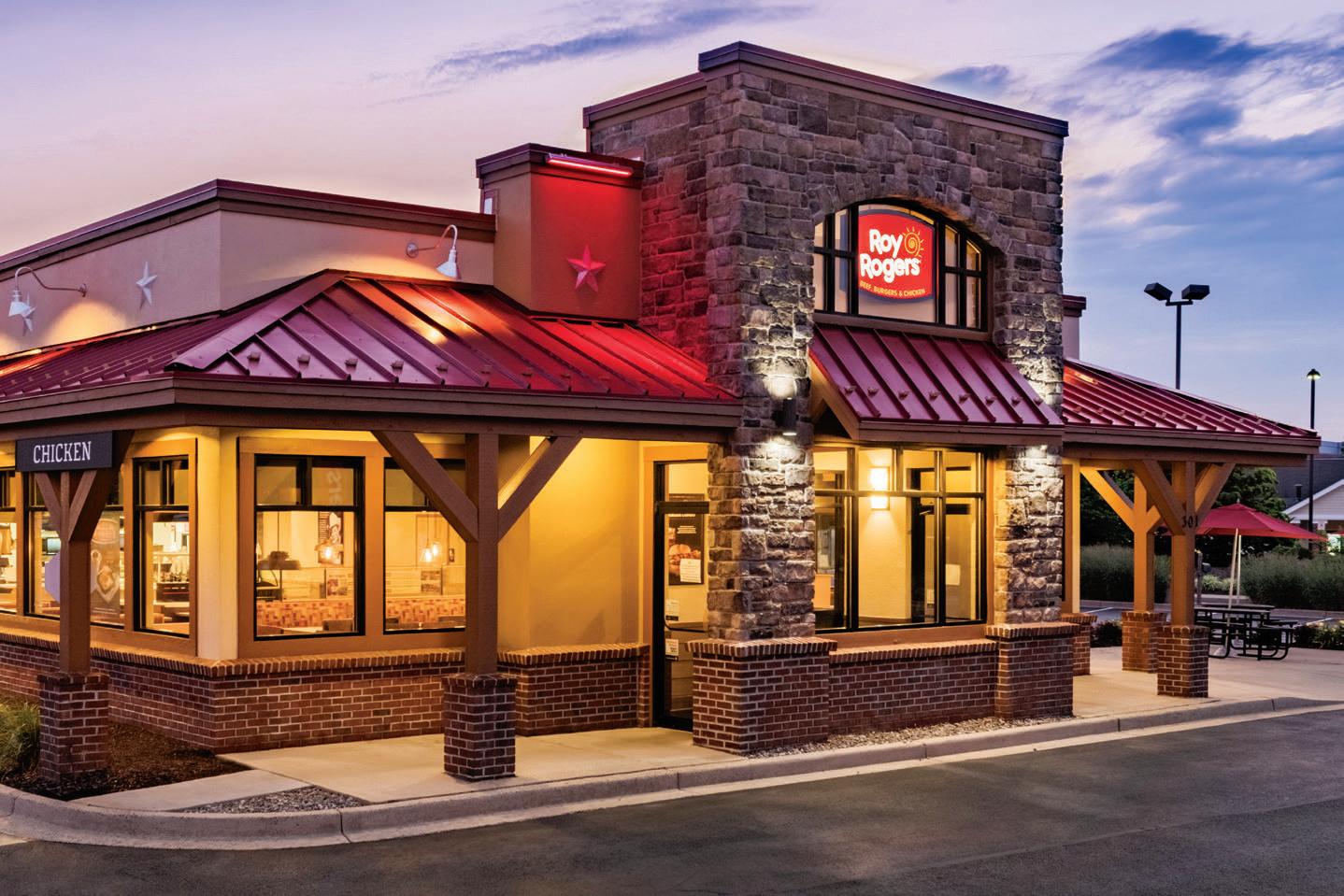
“First and foremost, it’s about the right partners and being opportunistic when the right partners do come along to expand into those markets,” says Plamondon. “So, we’re not market-driven; we’re partner-driven, offering prime territories to proven operators with both a vision and an ‘emotional connection’ to the Roys brand.”
In a franchising world where large, private equity-backed franchise companies are commonplace, Roy Rogers offers prospective franchisees an opportunity to be part of something unique. The brand is committed to the communities it serves and demonstrates its commitment through its core values: integrity, honesty, education, safety, family, and community involvement. RF
For more information and to learn about franchise opportunities with Roy Rogers, visit roysfranchising.com.
“We’re not market-driven; we’re partner-driven.”




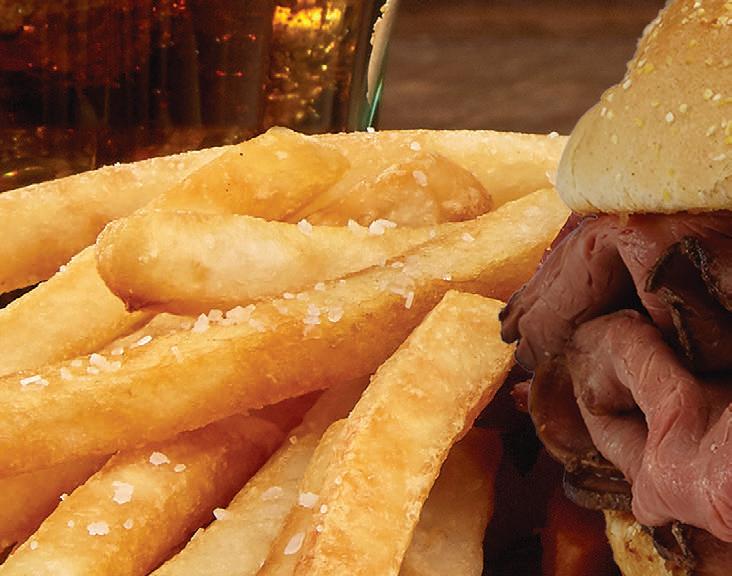
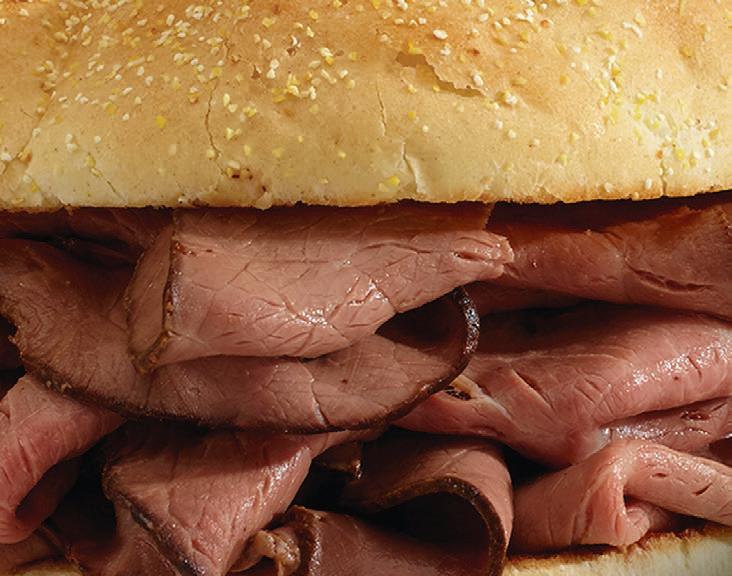


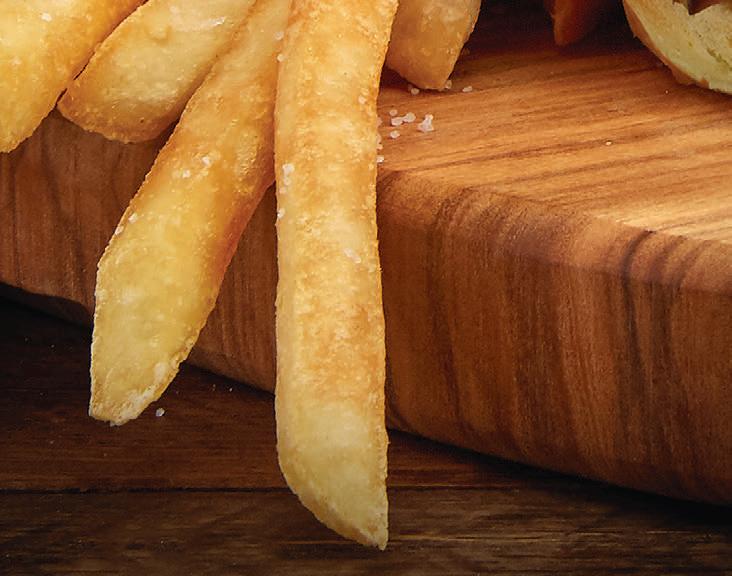
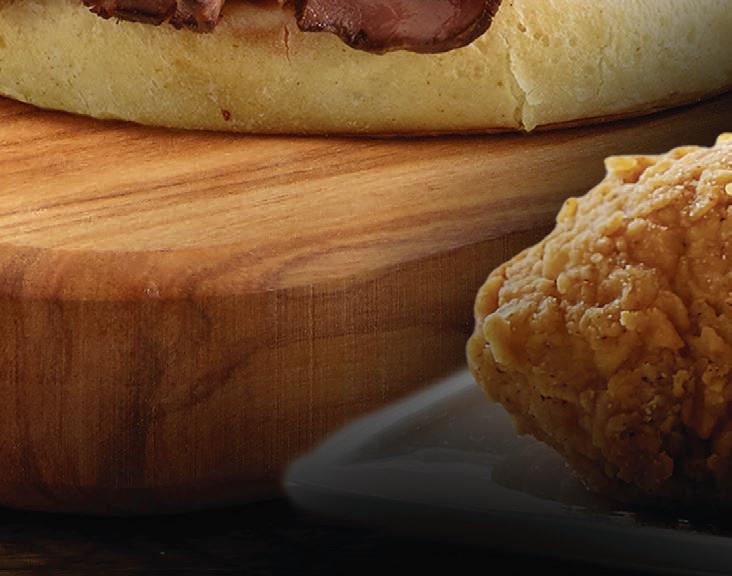
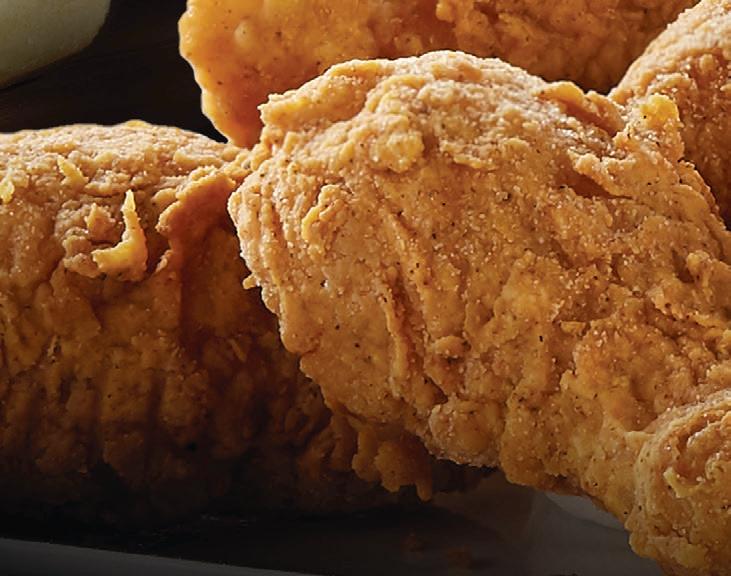















RUSSO’S NEW YORK PIZZERIA prides itself on authentic Italian recipes and premium ingredients. Chef Anthony Russo, who founded the brand in 1992, is a first-generation Italian inspired by family recipes from Naples and Sicily.

“We recently introduced a new menu in our pizzeria concept that we’re really excited about,” Russo says. “I wanted to bring back the old-school authentic homemade pasta sauces—all the good, classic stuff. We’re using some of my old family recipes. We’re stepping things up a bit with elevated dishes like homemade ravioli and truffle burrata gnocchi. We also added gluten-free and vegan options.”
Russo believes in the power of fresh, clean ingredients. “My parents are from Naples and Sicily, so when I go to visit, I develop relationships with the families producing dairy there,” Russo says. “We bring in olive oil direct from Sicily. We use the same premium ingredients and vendors we’ve used for 30 years. Plus, nothing is pre-made. It makes a huge difference. We really stand out in the marketplace thanks to the high quality of our food.”
In the wake of COVID-19, in response to changing customer demands, Russo’s New York Pizzeria has started focusing on opening stores with smaller footprints, and revamping existing stores. Smaller footprints mean lower rent bills and better insulation of the bottom line— and there’s still plenty of room to produce the full menu. “We redesigned some of our stores to be more focused on counter service—no table service,” Russo says. “We have a fast-casual concept. We’re also setting up delivery service, and we’re open to catering opportunities.”
Locations:
over 52 Square Footage: 1,200–3,500 Start-Up Cost: $295,00–$750,000
As of July 2022, Russo’s New York Pizzeria had 52 locations, with almost 20 more in the pipeline. Its franchise system is looking to expand nationally and internationally using four core models to build sales—takeout and delivery only, fast-casual counter service with takeout and delivery, full-service

restaurants, and the more upscale Russo’s Coal-Fired Italian Kitchen brand that features brick oven pizzas.
New franchisees are supported at every point of the process, from third-party loan pre-qualification through site selection, lease negotiation, and assistance with general contractors, equipment, ordering, logistics, and more. New franchisees train for six weeks at a Russo’s location, rotating through each station front and back of house. The Russo’s team also travels to each new store and trains staff.
“To anyone looking for a pizza franchise, we’re in a great spot,” Russo says. “Our average ticket is strong—about $32. Our average food cost is 23 percent, and our average store volume is $1.1 million. Our financials have been audited to be compliant with franchise disclosure agreements, including Item 19. Plus, we’re an ingredient-driven, chef-driven concept. We cater to the vegan crowd and the gluten-free crowd, and it’s a great menu mix. When a potential franchisee comes to us, we tell them ‘Try the food.’ They try it for themselves and they’re sold, because you can’t get this stuff anywhere else.” RF
To learn more, visit nypizzeria.com/franchise.
“When a potential franchisee comes to us, we tell them ‘Try the food.’”

Our numbers speak for themselves
Award -winning Russo’s New York Pizzeria was founded in 1992 by Anthony Russo. The family-owned company started franchising in 1998 and has since successfully expanded the business to 28 locations is Texas and surrounding states, including developing the more up-market casual dining “Russo’s Italian Coal-Fired Kitchen” specializing in 100% Authentic New York style pizza baked in a coal-fired oven.

What distinguishes a coal-fired oven from a wood-burning or a gas-fired oven is the coal oven’s intense heat.” said Russo. “Coal just takes the flavor up a notch and truly separates us from the competition! When paired with the freshest ingredients and our homemade dough and sauce, it’s absolutely delicious.”
Known for his authentic Italian cuisine, characterized by premium all natural ingredients and regional influences, Russo personally stands behind the Russo family standards and devotion to quality. “We work directly with dairy farms, flour mills, tomato growers and an olive oil producer” says Russo “and are getting our products directly from the source. No matter where on the globe our restaurants are located, all will have the exact same high quality products.” The menu also offers great options for the more health conscious consumer carrying a gluten-free pizza option and multi-grain pasta choices.
With a corporate office in Houston, Texas; Russo’s recently established an office in Dubal, UAE. Having the logistics in place to facilitate global growth, the popular Russo’s restaurants are set for success worldwide with agreements already in place for 26 units in development.
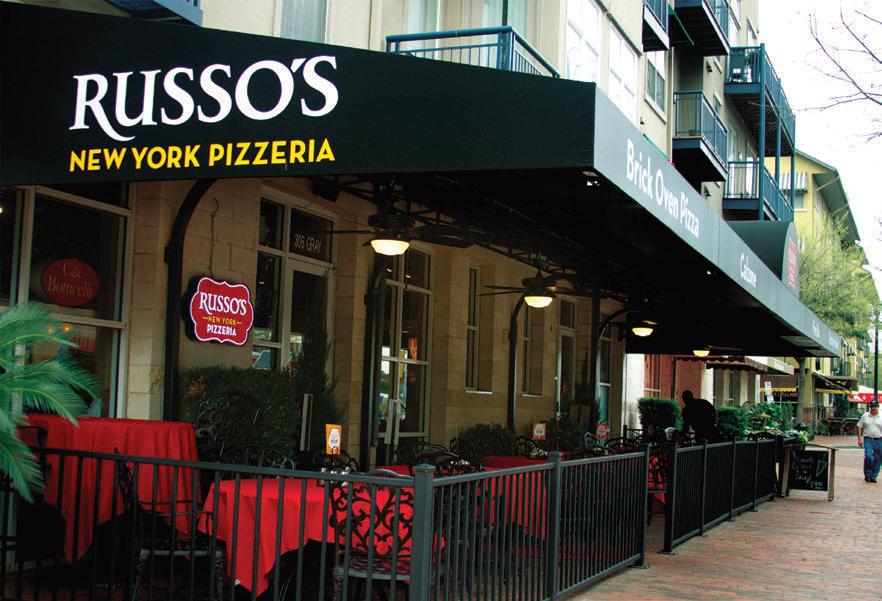
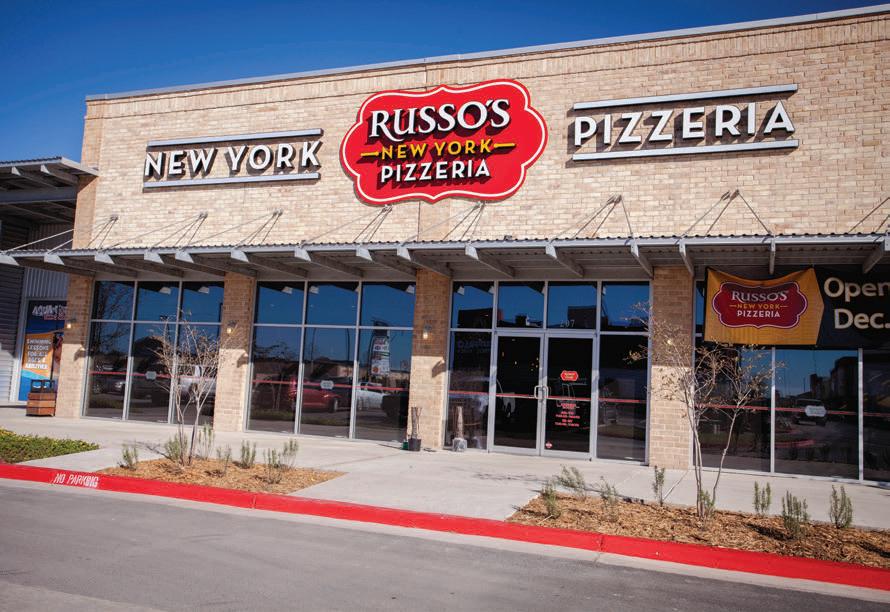
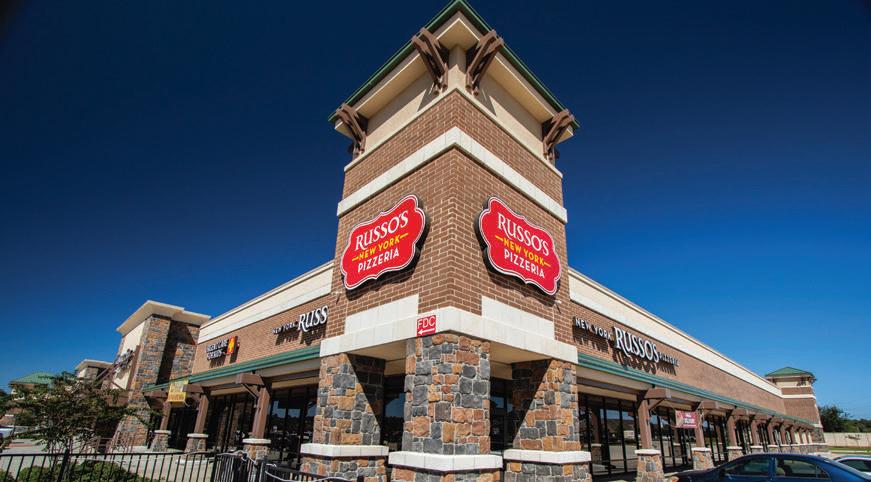
Food Cost - 23.9%
Ave net income - 17.7%
Investment 400k to 750k
Min cash on hand 250k
Company Name: Address:
Russo’s NY Pizzeria
5120 Woodway Dr., Suite 8030 Houston, Texas 77056
Phone:
Year Established:
County of Origin:
Contact Person:
Email Address:
Size of Units:
Join
1+ 346.802.4700
1992
USA
Anthony Russo
Anthony@nypizzeria.com
1500 - 3500 sq. ft. for dine-in

www.nypizzeria.com
All rights reserved. This information is not intended as an offer to sell, or the solicitation of an offer to buy, a franchise. It is for information purposes only. A franchise offer can only be made through the receipt of our Franchise Disclosure Document.
WHEN SLIM CHICKENS BEGAN FRANCHISING about 10 years ago, it had a lofty goal: reach 600 units by 2025. Turns out that may have been a conservative number as the brand now has over 180 units open, with more than 900 on the way.
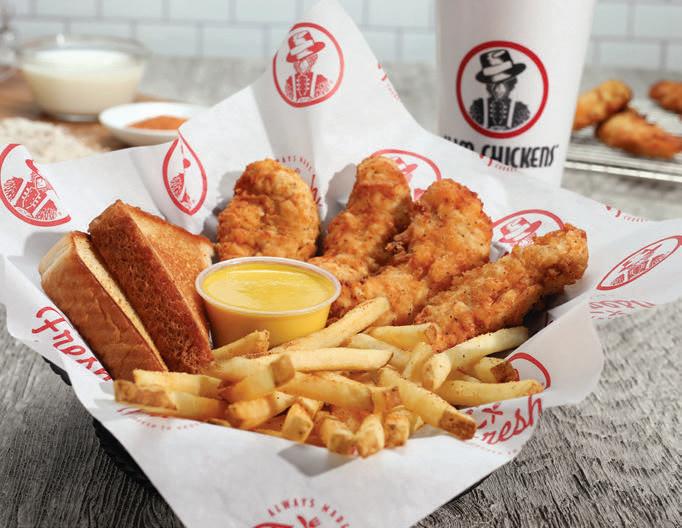
With its top group of franchise restaurants posting a whopping $3.86 million AUV—a 13.6 percent increase year-overyear—it’s apparent that the brand is built for the long haul.
Jackie Lobdell, vice president of franchise development, says the successful business model is driven by a dynamic team that is unlike any she’s ever been around.
“The culture that we’ve built permeates throughout everything we do,” Lobdell says. “If you’re part of the team, you have to be passionate about this brand. And I really think that’s contagious. It’s such a positive culture that starts in the restaurants and goes all the way up to the executive level.”
Founded in Fayetteville, Arkansas, in 2003, Slim Chickens has been selling high-quality tenders and wings at reasonable prices ever since. In recent years, innovation has added menu offerings like Chicken and Waffles, a lineup of premium chicken sandwiches, salads, and LTOs like Mac and Cheese bowls. The brand also boasts about its 17 proprietary dipping sauces that help customize its product to a diners’ taste.
The industry is starting to take note of what Lobdell refers to as the leading chicken concept in the franchise space. In fact, QSR magazine named Slim Chickens its “Breakout Brand of 2021.” Slim Chickens was also recognized as a Top Recession-Proof Business by Franchise Business Review and one of the Fastest-Growing Franchises by Entrepreneur magazine.

Top-Quartile AUV: $3.86 million* Locations Opened: 180+ Units in Pipeline: 900+ Year-OverYear Sales Growth: 35%
“There has been so much hard work, passion, and integrity we’ve put into the brand,” Lobdell says. “Getting recognized with awards is confirmation of that. Listen, it’s great to win awards, but what our franchisees say about Slim Chickens is more important to us.”
And franchisees have some great things
to say about Slim Chickens. “From the very beginning Slim Chickens has been very franchisee-friendly in every way you could possibly imagine,” says Mike Sartwell, owner of five Slim Chickens locations in Montana and North Dakota. “The team was there to help with every aspect—from site selection, marketing, training, operations—everything. The brand is amazing.”
With over four decades of experience in the industry, Sartwell is the type of franchisee that Lobdell and her team are looking for as they continue to grow the Slim Chickens brand. He’s what Lobdell calls a “stone-cold operator,” a term that refers to a level of business acumen required to ink a multiunit deal with the brand. Because make no mistake: Slim Chickens isn’t partnering with just anybody.
“We have a really rigorous vetting process,” Lobdell says. “We only sign multi-unit deals with really high-caliber franchisees. That’s what makes this restaurant brand so successful, and it’s what keeps up that culture of the brand.” RF
For more on franchising with Slim Chickens, visit slimchickensfranchise.com.















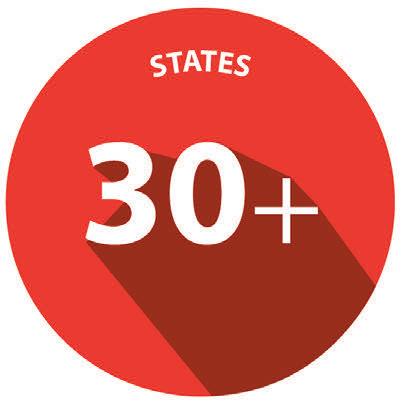







































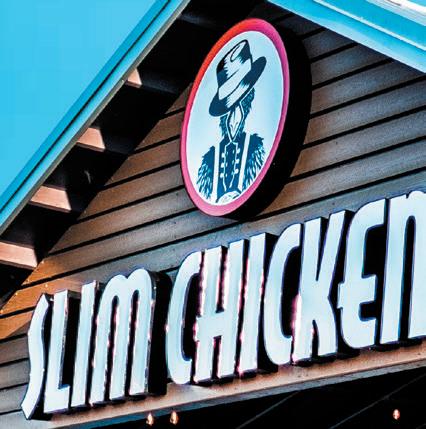
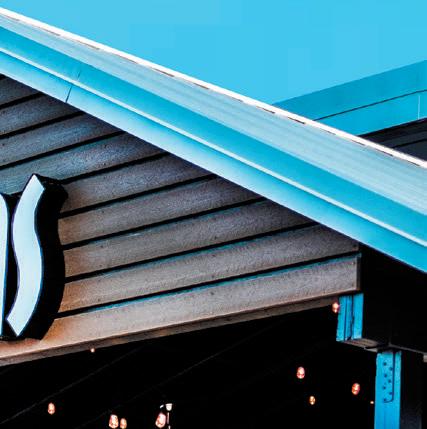
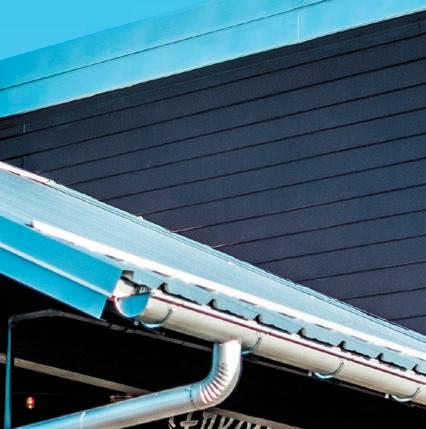


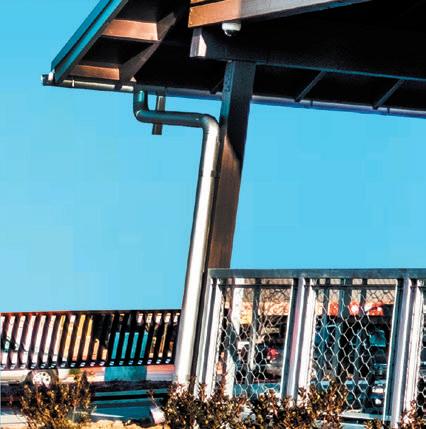
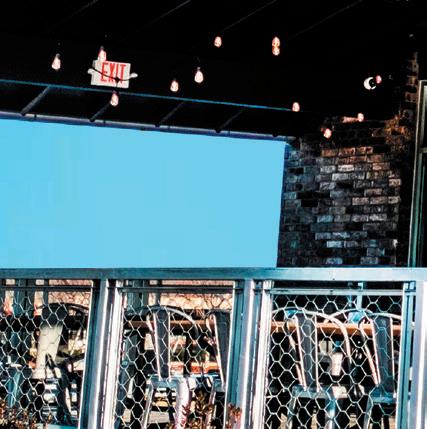




















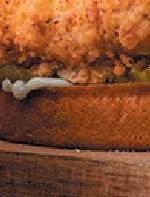
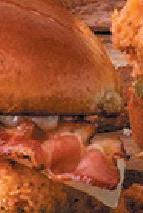





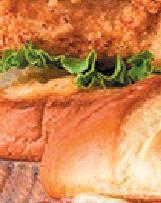
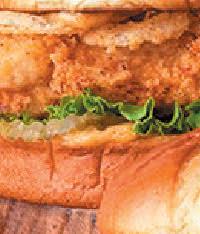





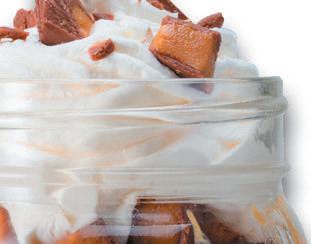




























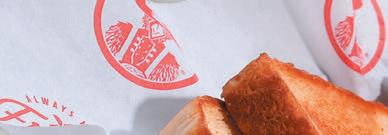


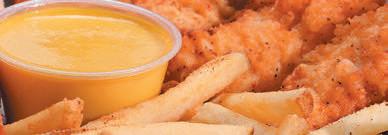
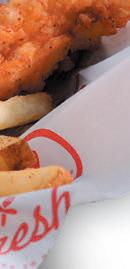

















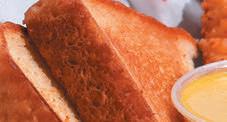



































WITH OVER 85 YEARS OF HISTORY, it’s no secret Steak ‘n Shake is a classic American brand. America’s original premium burger and shake restaurant is seeking multi-unit franchise operators with vision, passion, and an unwavering desire to expand the brand’s footprint while continuing the tradition of serving the freshest and tastiest steakburgers and milkshakes.
The undeniable history and ongoing evolution bring a new modern twist to the brand customers know and love.
Brand Perks: Longevity and strength
Updates: Striking new prototype designs
Unit-Level Economics: Strong
Steak ‘n Shake is launching its refreshed brand and keeping traditional menu staples affordable while paying employees more. At the same time, the brand is continuing to see strong unit-level economics, positioning for a period of growth.
“Steak ‘n Shake became a household name based on our high-quality meat and unique steakburger offerings back in 1934. Since then, the brand has become one of the most recognized and loyal brands in the restaurant business,” says Gregg Koffler, vice president of franchise development at Steak ‘n Shake. “We’ve invested in a new, freestanding prototype with
a refreshed design that pays tribute to our brand’s history while also providing a modern experience for our guests. In addition, we’ve rolled out a streamlined mobile app and self-serve kiosks to improve our customer experience. These items, coupled with one of the country’s most craveable menus, are ideal for the franchise owner looking to bring a fresh take on this legacy brand to markets across the country.”
On its path of radical transformation, Steak ‘n Shake’s new freestanding prototype design offers a dining area that seats more than 65 customers and features a quick-service drive thru. As the fast-casual market is adapting to new consumer habits caused by the pandemic, Steak ‘n Shake prioritized accessibility and options for all guests.
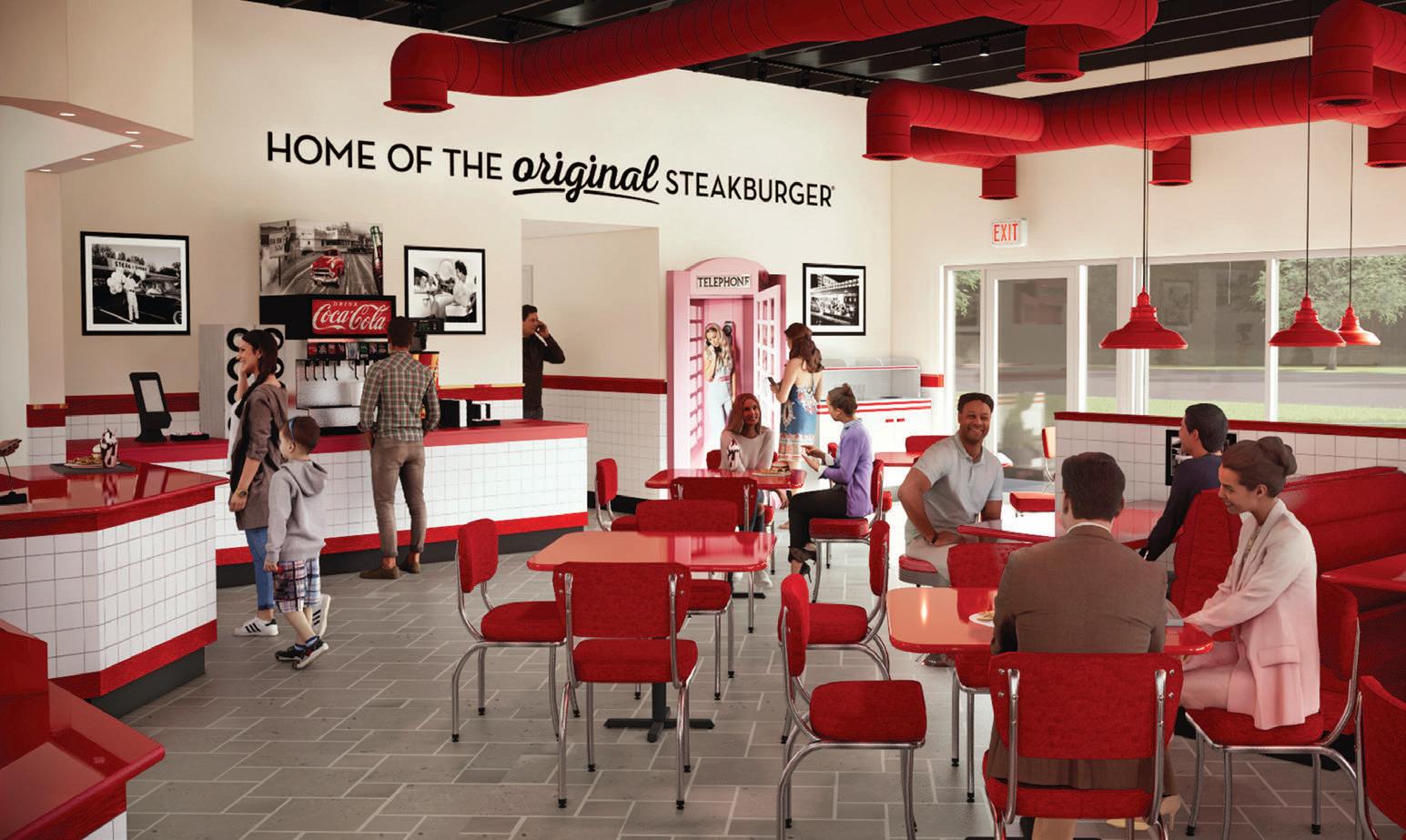
Additionally, Steak ‘n Shake invested in innovation by adding kiosks to the dining rooms, giving customers the options to use the mobile app, tap into the self-service technology in-store, or opt for the quick-service drive thru. Integrating this self-service kiosk technology allows dining rooms to turn into “walk throughs,” making ordering food even more seamless for guests. Locations have noted improved economics nearly as robust as the chain’s drive thrus.
Cost-saving decisions such as these technology investments allow Steak ‘n Shake to provide higher wages to employees. Productivity gains through self-service enable teams to attract and retain the best employees, increasing the quality of service at all locations and overall customer satisfaction.
With these updates, Steak ‘n Shake is harnessing the brand’s legacy and strong financial performance as differentiators in a crowded fast-casual market and helping franchisees achieve the American dream. RF
To learn more about franchising with Steak ‘n Shake, visit info.steaknshakefranchise.com.
“Steak ‘n Shake became a household name based on our high-quality meat and unique steakburger o erings back in 1934.”

AS PART OF SUBWAY’S MULTIYEAR TRANSFORMATION JOURNEY, the brand is making sure restaurants are in the right location, right format, and right image, through remodels and relocations. Its new guest-centric restaurant design, referred to as Fresh Forward, imbues each restaurant with new energy and helps improve the overall in-restaurant experience.
Serves: 1.5 billion global guests annually
Located In: Over 100 countries.
Has: More than 37,000 restaurants worldwide
“Our remodel program is a competitive necessity and allows us to offer guests a consistent, high-quality experience aligned to our brand promise,” says Director of Restaurant Design & Decor Patrick Rose, who leads a team dedicated to helping franchisees remodel or relocate their restaurants.
Subway’s Fresh Forward design includes changes to nearly all of the guest-facing areas of the dining space and the service areas—think new flooring,
furniture, wall coverings, counter equipment, and ceiling and lighting elements. “Our hope is to create a bright, welcoming environment for guests and highlight the craveable ingredients in our sandwich units,” Rose says.
Rose’s team works with IPC, Subway’s franchiseeowned, managed, and governed supply chain cooperative, to identify the right partners and vendors to execute the redesign. “Remodeling a restaurant is truly a team effort. It’s a ton of coordination between our vendors to the franchisees and their team members to my team at headquarters, but there is a great sense of pride in the final result, and the efforts are paying off as we see the excitement from guests who walk into a remodeled location for the first time,” Rose says.
All restaurants are on a continual periodic remodel cycle to ensure they stay relevant, modern, and competitive. Rose’s team also works with franchisees to help them consider whether a relocation, instead of a remodel, could be a more profitable option for their business. Together, they look closely at the market, traffic patterns, available real estate, and evolving guest preferences. For example, they might relocate to a building with more parking for curbside pickup and drive-thru capability to meet the needs of on-the-go guests.
To help franchisees remodel their locations, between 2019 and 2022, Subway has provided tens of millions in grants through its remodel grant program. Almost 9,000 U.S. restaurants have committed to remodeling through the program, with nearly half of those already completed.

“We’re excited about the enthusiasm we are seeing from guests, franchisees, and their team members about our remodels and look forward to working with more of our franchisees to transform their restaurants in the coming years,” Rose says. RF
To learn more, visit subway.com/en-US/OwnAFranchise.
“Our hope is to create a bright, welcoming environment for guests and highlight the craveable ingredients in our sandwich units.”
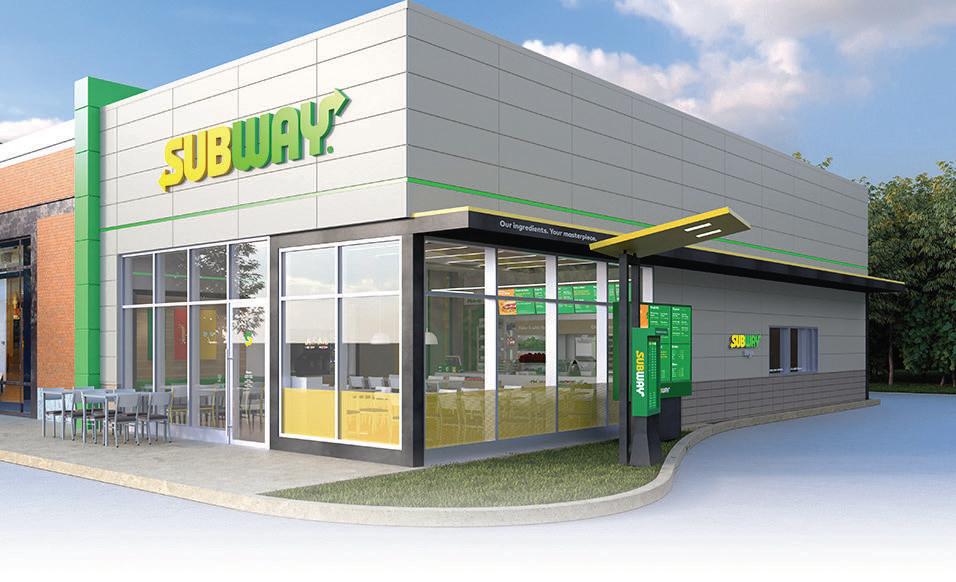







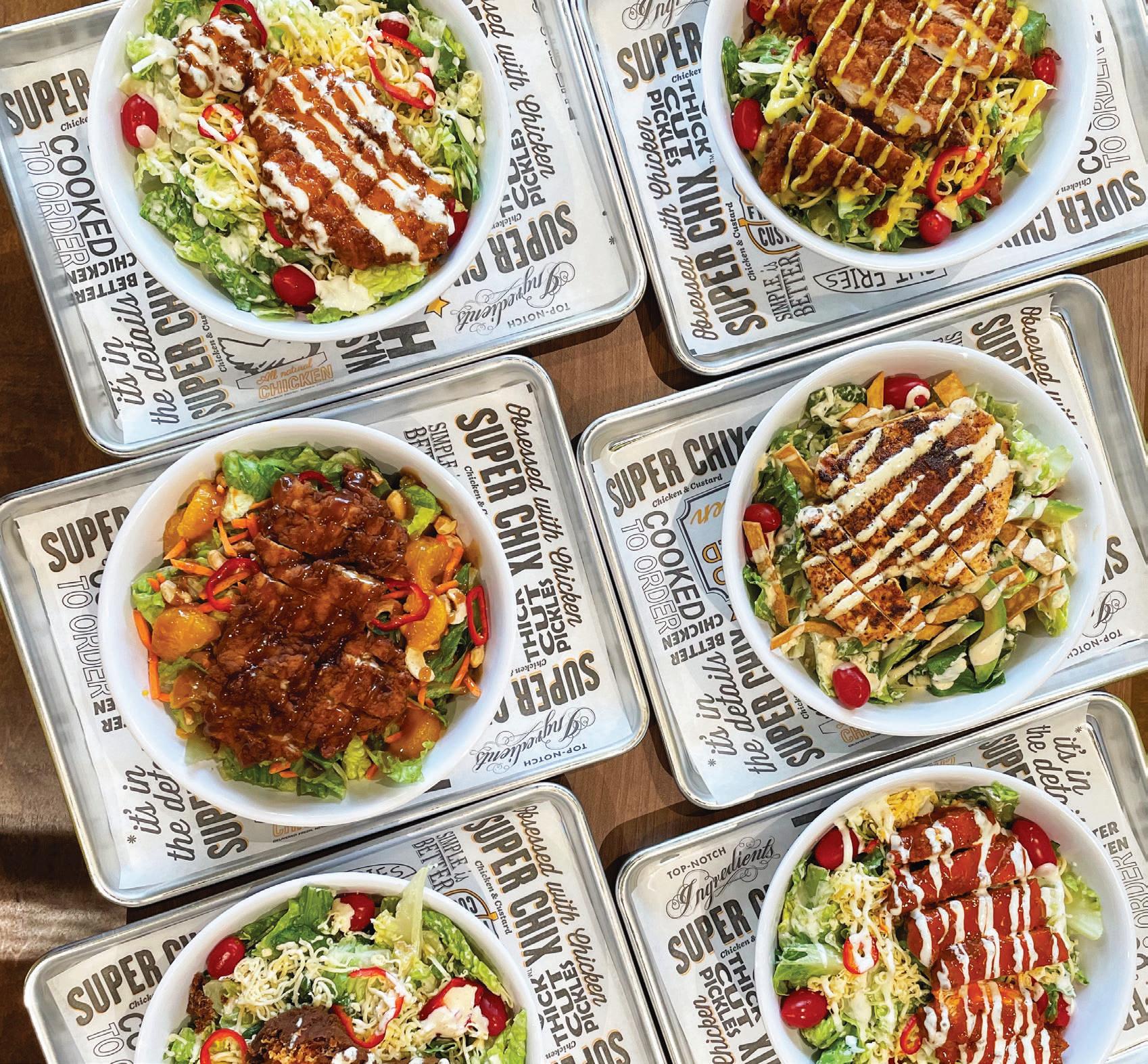



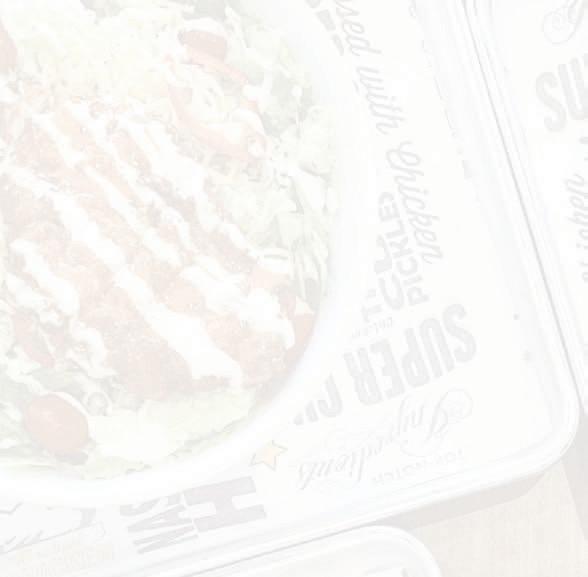
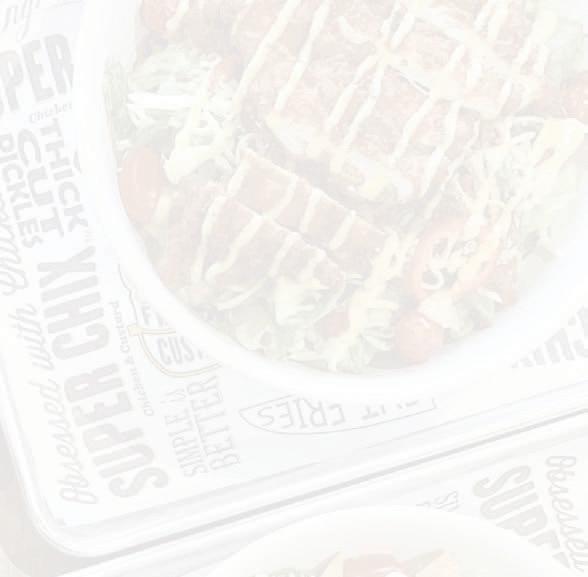


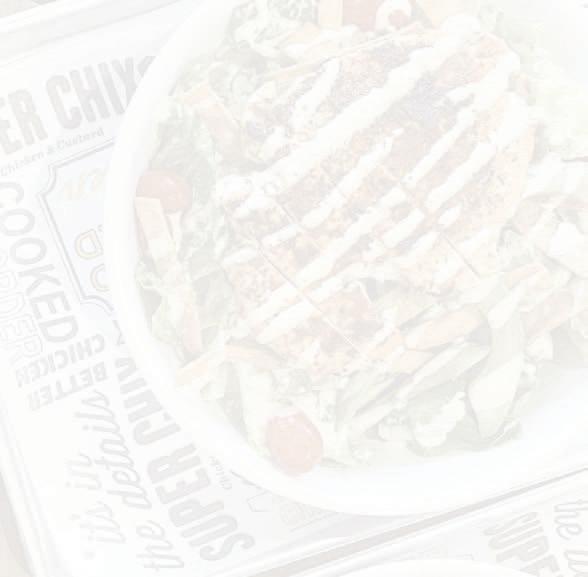


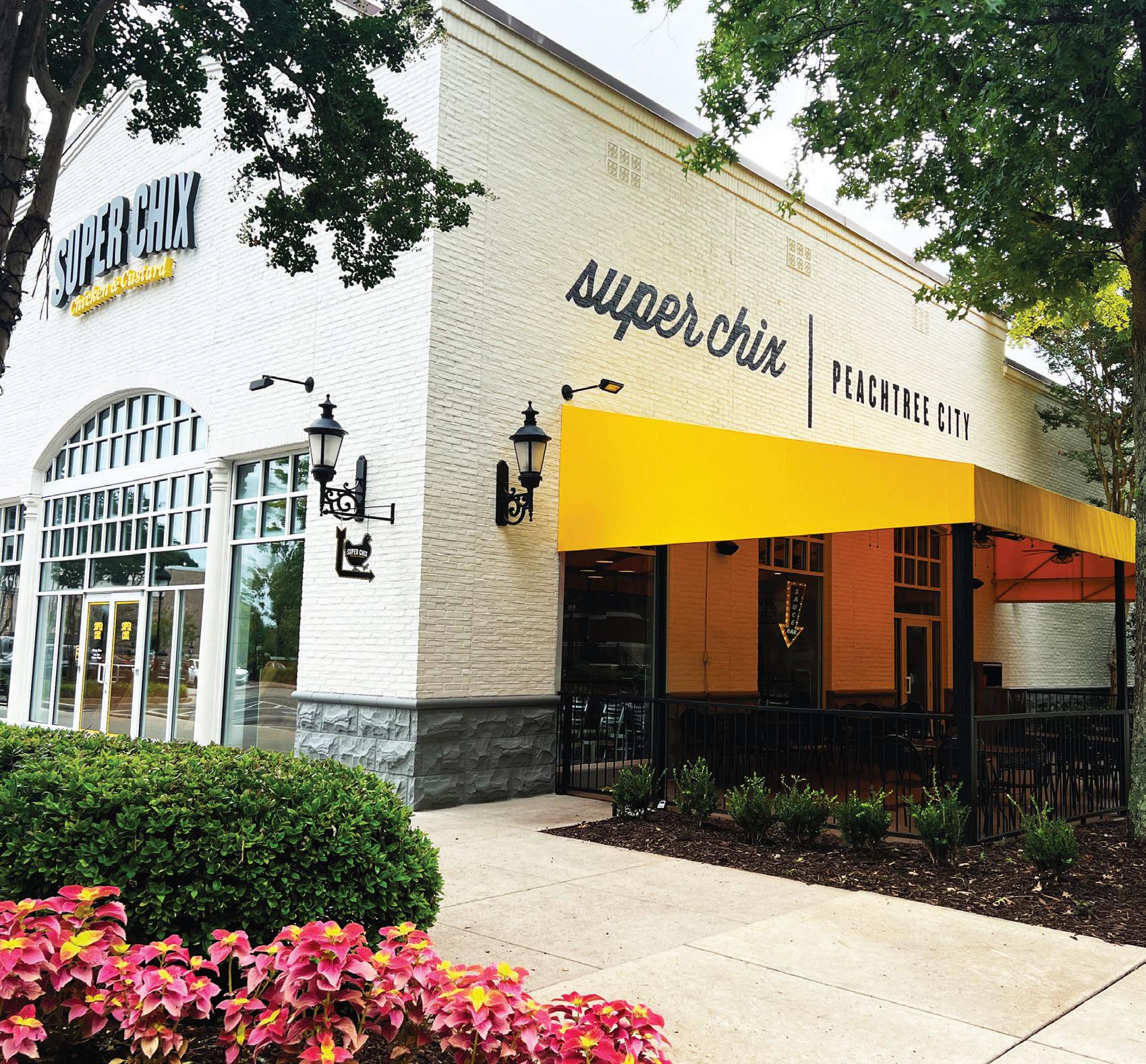

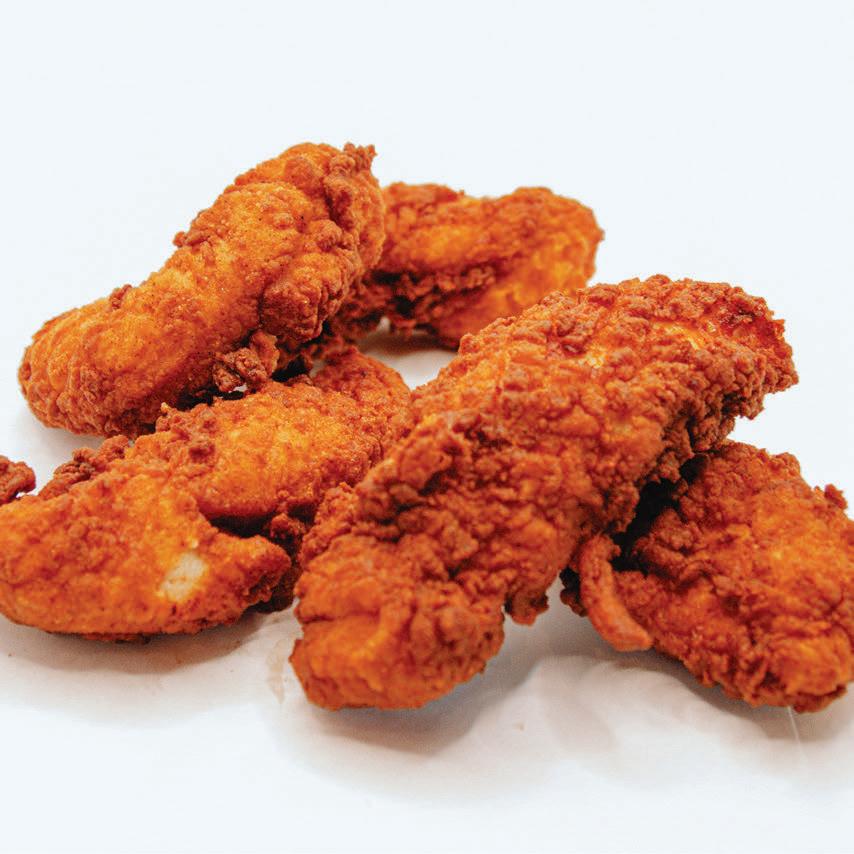

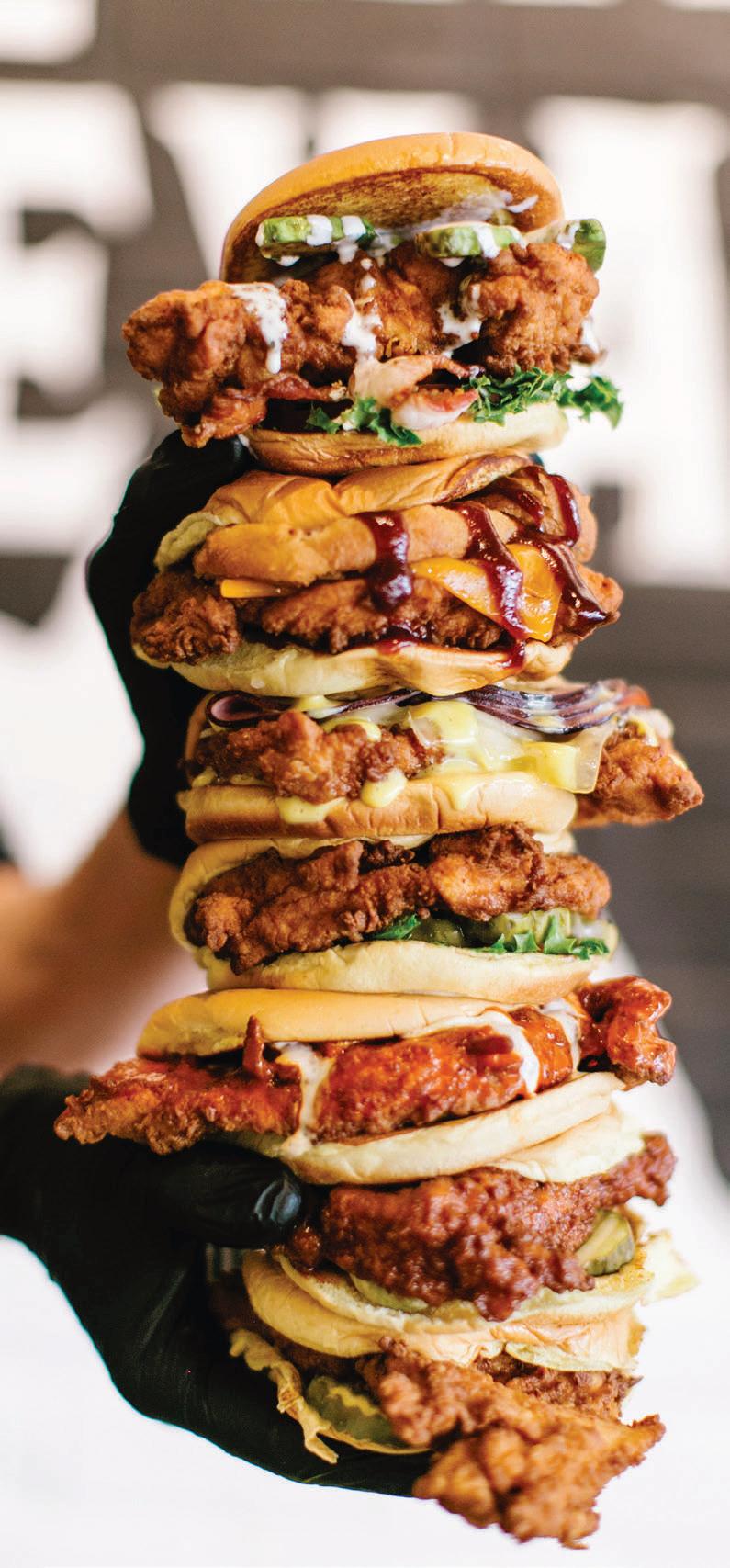


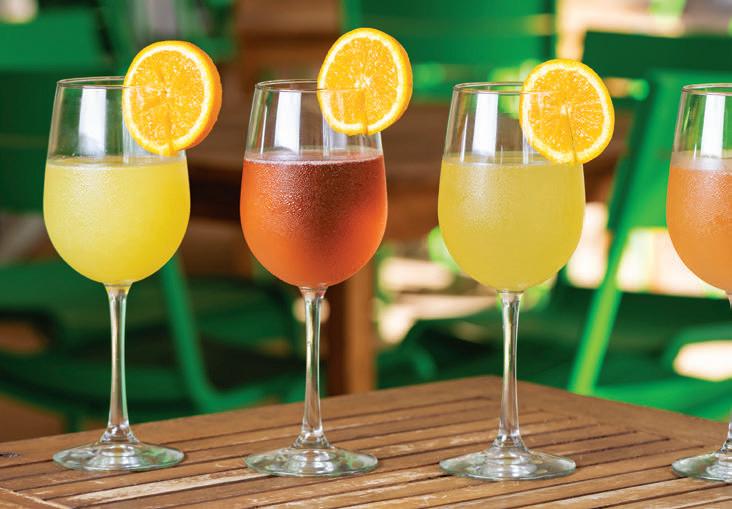 BY CHARLIE POGACAR
BY CHARLIE POGACAR
and personal time goes. Don’t get me wrong, I still have to put in the hours, but now I’m home well before dark.”
So how does a brand like The Toasted Yolk, only open eight hours per day, have 65 more units in the pipeline?
CEO Chris Milton believes it starts with a menu that is designed to appeal to suburbanites living in the areas carefully targeted by the brand. The Toasted Yolk offers a balance of indulgent and healthy options, with everything from Churro Donuts, to Southern Fried Arnold (the brand’s take on eggs benedict), to a Southwestern Breakfast Bowl—Milton’s personal favorite. The menu— and overall concept—obviously appeals to the masses, as The Toasted Yolk’s AUV is a robust $2.21 million.
IN 2022, there has been a lot of discussion surrounding work-life balance for frontline employees, and rightfully so. Something that has inspired fewer headlines is the worklife balance of franchisees: Now more than ever, franchisees are often working long days to help fill in where a restaurant is short staffed.
AUV: $2.21 million
And there are other key differentiating factors, too. The Toasted Yolk records almost 40 percent of its sales during the lunch daypart. Further, the brand has a full bar that pads the average ticket size in a big way—the average check is $17 per person.
“When we started the concept back in 2010, we always had a great balance of breakfast and lunch options,” Milton says. “The bar was always a focal point of the restaurant and that really resonates with guests—we really believe we are pioneers in the space because of those things.”
Units: 23
Lunch Sales: 40% of total revenue Hours: 7 a.m.–3 p.m.

Maybe that’s why The Toasted Yolk is receiving so many franchising inquiries. Founded in the Houston metro area in 2012, the 23-unit brand is open just 56 hours a week. Franchisees and employees alike love the 7 A M.–3 P M schedule that reliably gets them home in time for dinner. And yet, franchisees report profits on par with restaurants with much longer hours. It’s the best of both worlds, says Bret Baumgartner, who owns two locations in the Beaumont, Texas, area.
“When I was with (a previous restaurant brand), I was working 70–80 hours a week,” Baumgartner says. “That can take a toll on you as far as family
Milton also points out that The Toasted Yolk was a pioneer in adding certain technologies into the full-service brunch segment. For example, the brand was one of the first to let patrons be added to a waitlist without leaving the house. It’s little things like that that make Baumgartner proud to franchise with The Toasted Yolk.
“So much of the choice of who to franchise with comes down to ‘Do you believe in this brand?’” Baumgartner says. “Between being able to offer those amazing restaurant hours to your people and the scratch-made, highquality food you’re serving to the neighborhood—this is something I really, truly believe in and love being a part of.” RF
For more on franchising with The Toasted Yolk, visit thetoastedyolk.com/franchise-opportunity.

ZUNZIBAR + ZUNZI’S, the Georgia-based Next-Gen Casual Brand, known for its award-winning sandwiches, begins ramping up its franchise program backed on culture and purpose.
Chris Smith, co-founder and CEO and former Five Guys franchisee, believes cultural alignment between franchisor and franchisee is the most important ingredient for longterm franchise success. “Every franchise has a good product and business model,” Smith says. “What differentiates the best brands is culture and purpose. We have spent years defining and executing both and are excited to position ourselves as the ‘Franchise with Purpose.’”
For Zunzibar + Zunzi’s, being a “Franchise with Purpose” starts with ‘why’ they are in business. Smith is quick to say the restaurant business is not for the faint of heart, and they are here to change it. “As a franchisee, you choose to be in a business,” he says. “As a franchisor, we are your partner in that business, laser focused on solving problems to create value for our six stakeholders.
we grow, the more we can give,” he says.
The company’s goals for growth include 10 company locations and 25 franchised locations by the end of 2025 in 10 Southeastern states.
AUV: Over $3 million*
That purpose is evident in how Zunzibar + Zunzi’s executes their motto and brand promise. “The two-word motto is our promise to our six stakeholders that whenever they engage with our business, we want them to leave saying and feeling it. Those six stakeholders include our team, franchisees, fans, community, vendors, and investors.”
Startup Cost: $750,000–$1.4 million Years in Business: 18
Model: Bar plus restaurant*
We celebrate our six stakeholders with ZUNZIFEST!, a monthly event in which Zunzibar + Zunzi’s offers its Conquistador and the vegan-friendly Rising Sun—for free, with 26 percent of the day’s proceeds donated to a local nonprofit. For Smith, franchising and expansion are integral parts of Zunzibar + Zunzi’s purpose. “To put it simply, the more
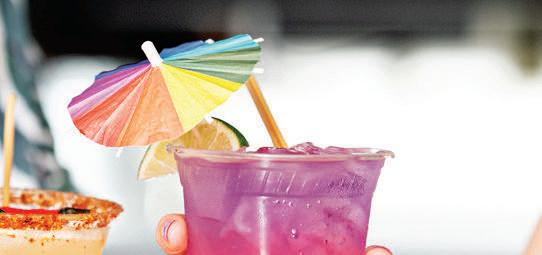
Zunzibar + Zunzi’s is eyeing an aggressive goal for annual unit volume. “We believe over $3 million is the new $1 million,” Smith says. “The quick-service space has been targeting a $1 million AUV since I became a franchisee back in 2006. Times have changed and so should the industry’s expectations.”
Zunzibar + Zunzi’s menu, company culture, and ambition have earned the company a spot on Fast Casual ’s “Top 100 Movers & Shakers” list for 2022, Thrillist ’s 2019 list of the 33 “Best Sandwiches in America,” and shout-outs from Zagat, People magazine, Men’s Journal, BuzzFeed, and Travel Channel Smith was named to Fast Casual ’s “Top 25 Executives” this year and made QSR ’s “15 Young Restaurant Leaders to Watch” in 2020.

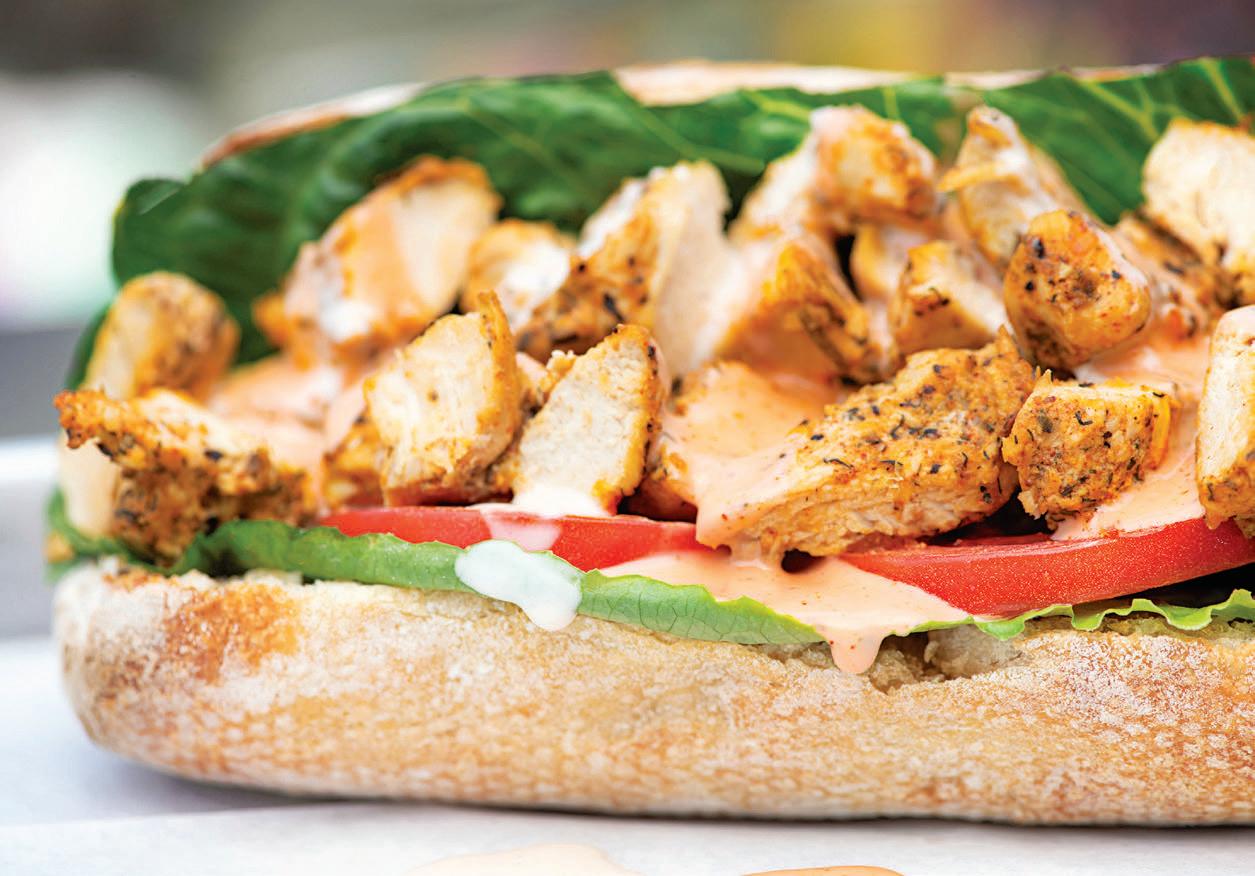
Smith believes after 18 years of refining the brand, they are just getting started. “We’ve combined the best aspects of fast casual and full service, leveraged technology, and created a model that will leave our team, franchisees, and fans shouting our motto: ‘SHIT YEAH!’” RF
To learn more about Zunzibar+Zunzi’s franchising, visit franchisewithpurpose.com.

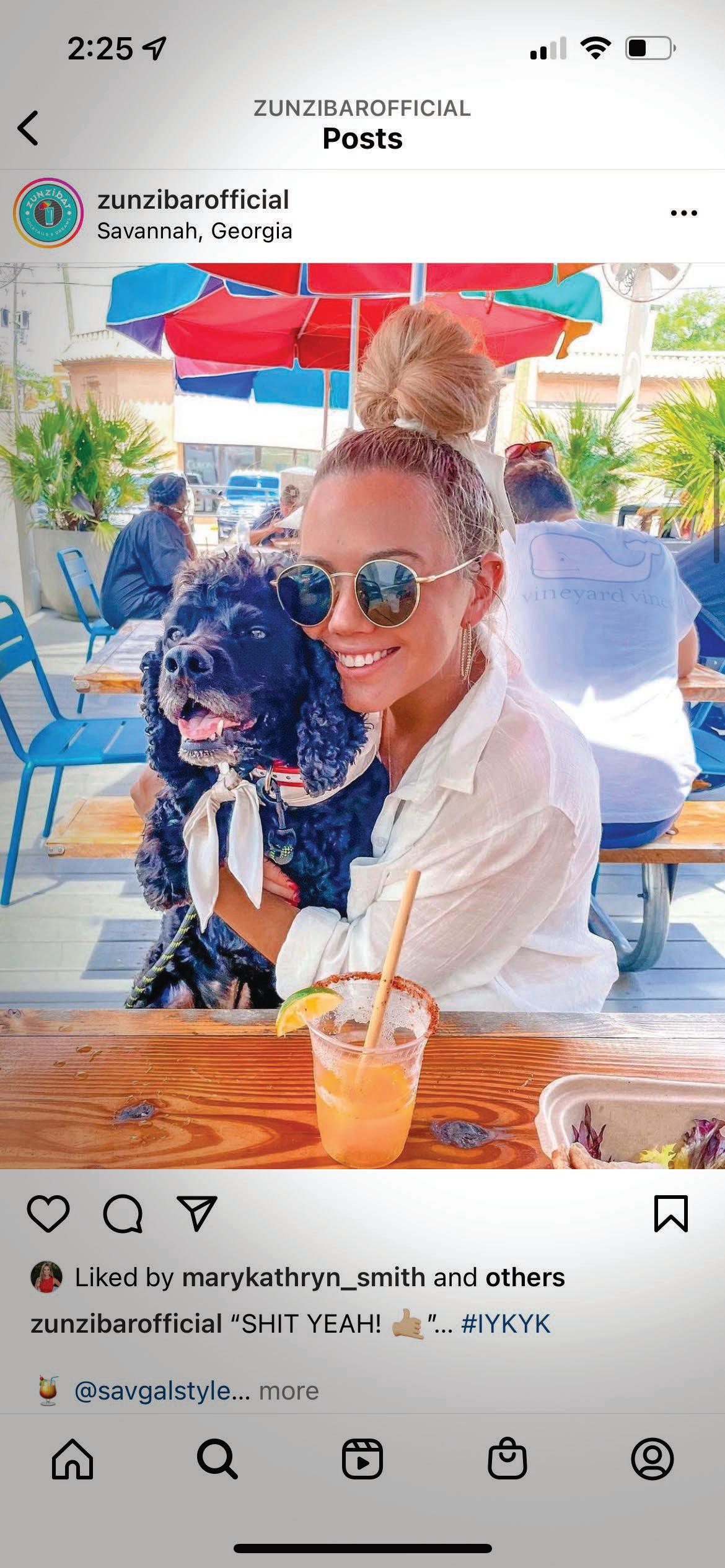
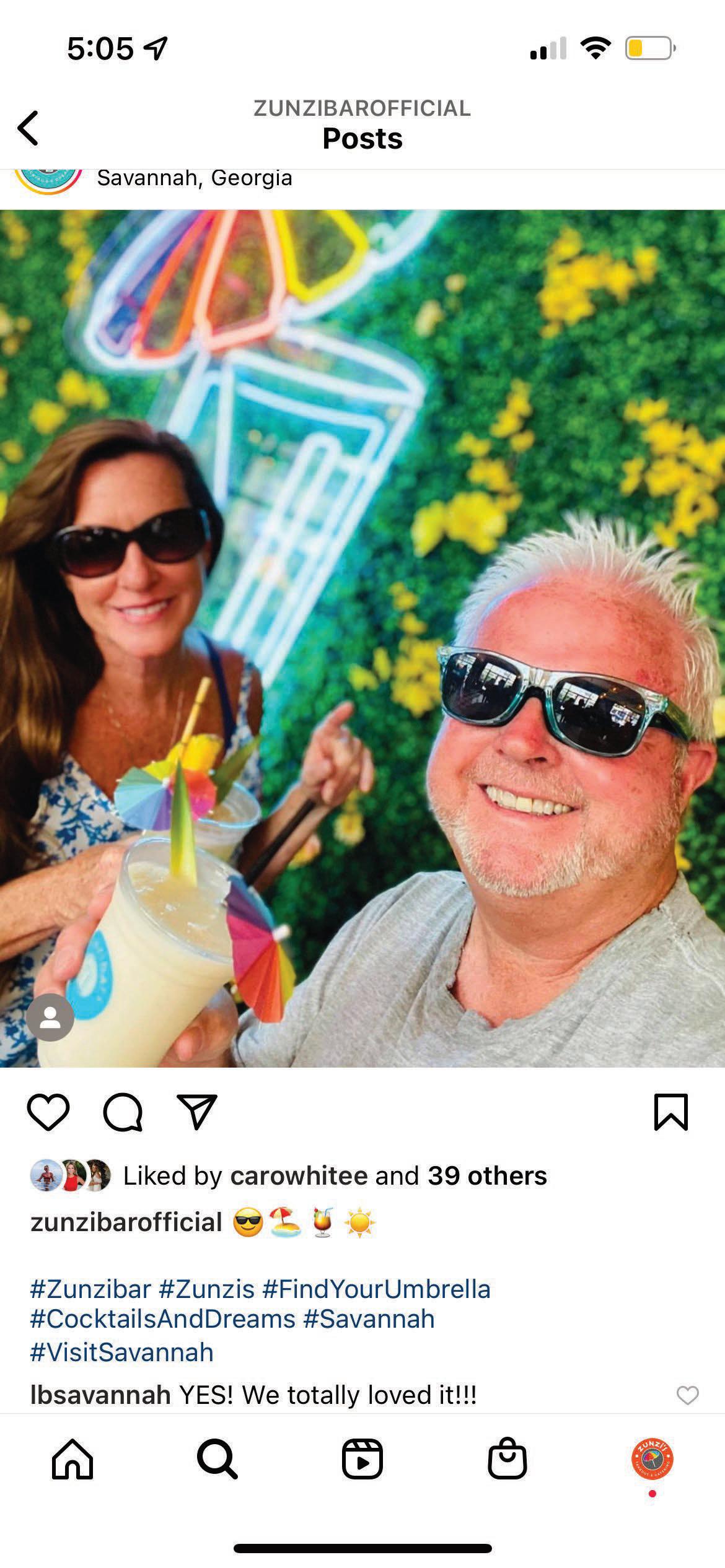
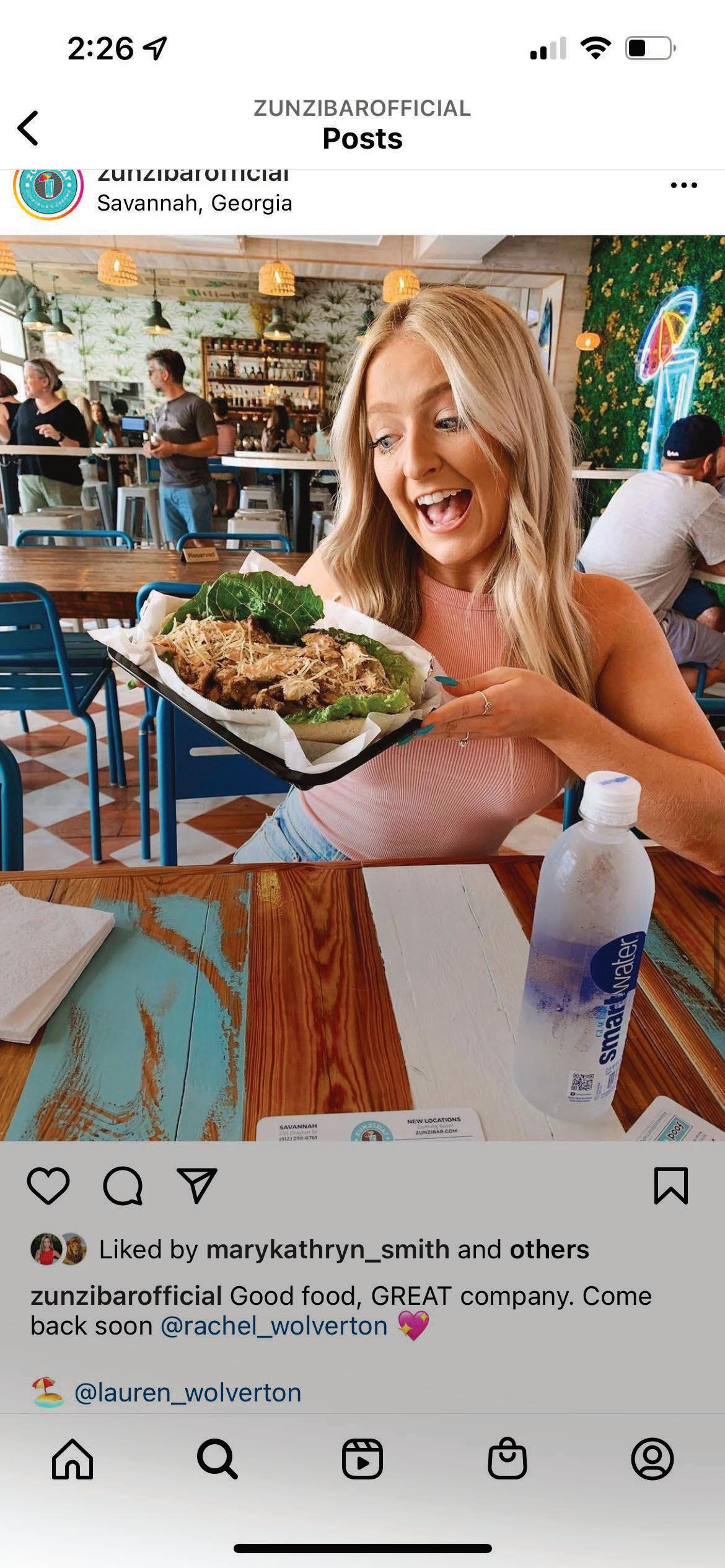


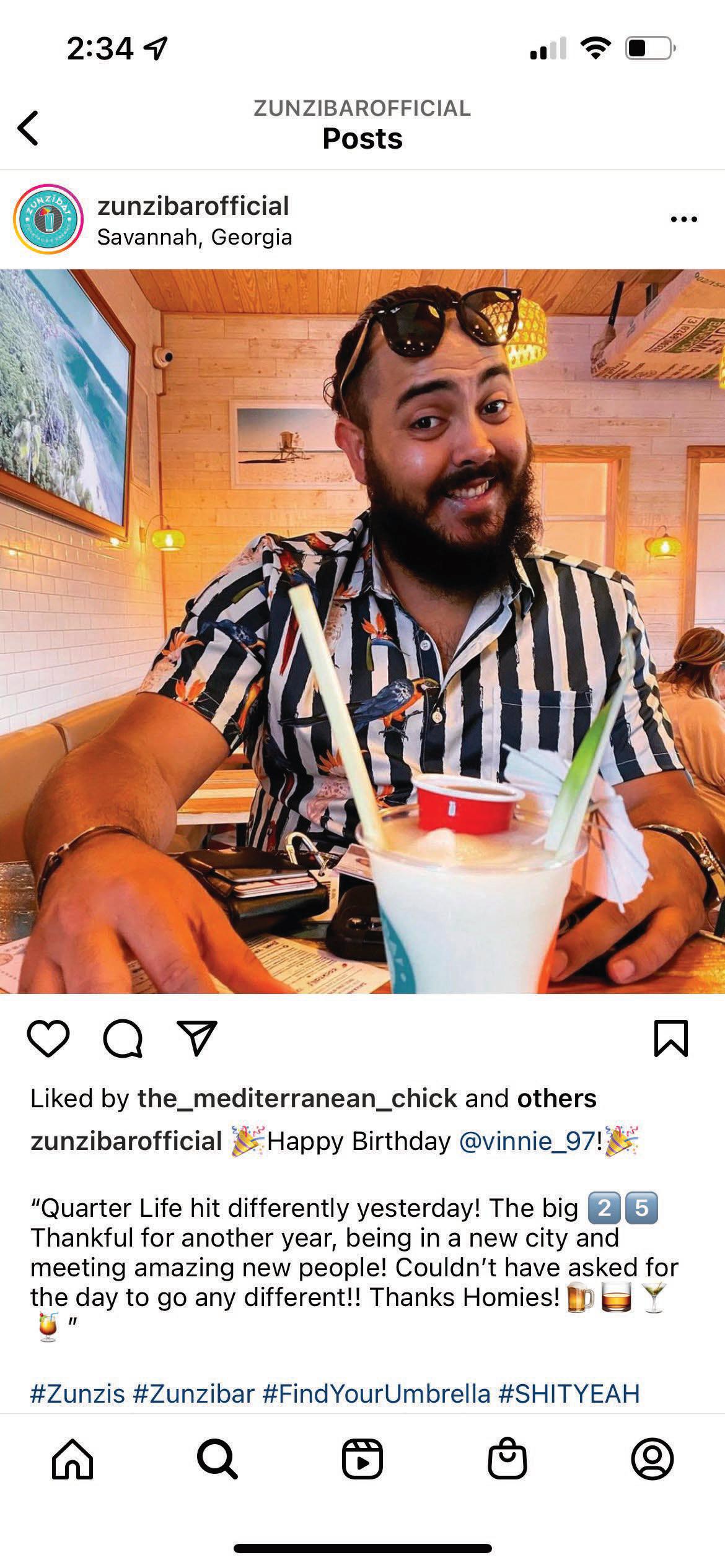




For more information on these companies, visit www.QSRmagazine.com/connect/
Anchor Packaging .................................... 7 800-467-3900 | Anchorpac.com
Botrista .................................Inside Back 800-542-6190 | botrista.io
Checkers/Rally’s ...................................17 888-913-9135 | owncheckersfranchise.com/QSR
Ferrero ................................................12 800-408-1505 | butterfinger.com
FIFO .....................................................29 800-453-3436 | fifoinnovations.com
Frymaster-A Welbilt Brand ...................25 800-221-4583 | frymaster.com



Genpak ......................................15, 20, 21 800-626-6695 | genpak.com
Ghirardelli ............................Inside Front 888-402-6262 | ghirardelli.com
HME Hospitality ...................................33 866-577-6721 | hme.com/nexeo

Intellihot .............................................39 877-835-1705 | intellihot.com






Loomis ................................................27 713-435-6700 opt. 2 | loomis.us
NAFEM Show ........................................45 thenafemshow.org/register
NorthAmerican Bancard .......................55 866-481-4604 | NYNAB.com
Ready Access .......................................52 800-621-5045 | ready-access.com
Red Gold ..............................................11 866-729-7187 | Redgoldfoodservice.com/sample-requests
RF Technologies ..........................3, 8, 88 800-598-2370 | rfdrivethru.com














SEB Professionals ..............................4, 5 wmf-coffeemachines.com | schaererusa.com wilburcurtis.com
S-net ...................................................88 844-986-1949 | qsrsnetconnect.com
UPMRAFLATAC .......................Back Cover go.upmraflatac.com/OptiCutLinerless
Vito Fryfilter ........................................49 847-859-0398 | vitofryfilter.com

Wag N’ Wash .......................................19 wagnwashfranchising.com
Xenial ..................................................41 855-936-4251 | xenial.com/solutions/drive-thru
RESTAURANT FRANCHISING ........................57 - 87 Abbot’s Frozen Custard ................58, 59 304-60-SCOOP | abbottsfranchise.com
Altitude Trampoline Park .............60, 61 407-274-3027 | altitudefranchise.com
Bubbakoo’s Burritos ....................62, 63 bubbakoos.com/franchiseopportunities
Focus Brands ...............................64, 65 800-227-8353 | development.focusbrands.com
Houston’s Hot Chicken .................66, 67 702-637-4609 | houstonshotchicken.com/franchise
The Human Bean ..........................68, 69 888-262-2215 | thehumanbean.com/coffee-franchise/
Mici Italian ....................................70, 71 MiciItalian.com/franchising
Roy Rogers ..................................72, 73 roysfranchising.com
Russo’s Pizza ...............................74, 75 346-802-4700 | nypizzeria.com
Slim Chickens ..............................76, 77 630-300-4798 | slimchickensfranchise.com
Steak n’ Shake ..............................78, 79 steaknshakefranchise.com
Subway Franchise ........................80, 81 subway.com
Super Chix ...................................82, 83 superchix.com
The Toasted Yolk Cafe ..................84, 85 850-333-8260 TheToastedYolk.com/franchise-opportunity
Zunzis .........................................86, 87 zunzis.com

Benefit from DT Linerless with superior adhesive performance and repositionability on a wide range of packaging, and reduce downtime of your liner-free printer thanks to less adhesive accumulation. The OptiCut™ Linerless experience is waiting.

